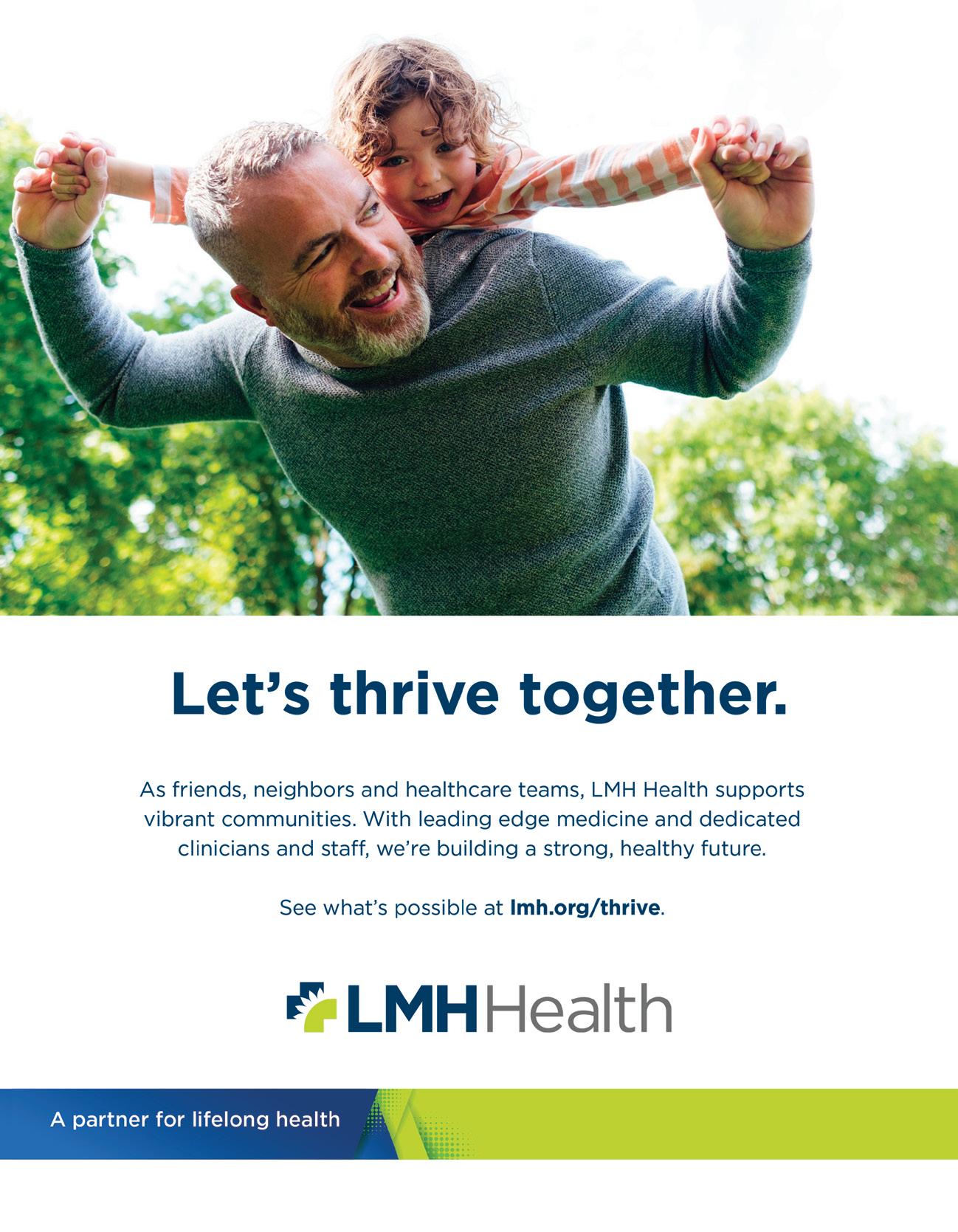








Lawrence is at a crossroads. We are rich in culture, history, and academic influence. Economic growth isn't just about attracting businesses; it's also about keeping businesses, ensuring that Lawrence remains a vibrant, welcoming place where residents can build fulfilling lives. Infrastructure, city policies, quality of life, business recruitment, and workforce development all shape the city's economic trajectory.
INFRASTRUCTURE: BUILDING THE BACKBONE OF GROWTH
A strong economy starts with a strong foundation. Roads, utilities, and internet connectivity aren't just conveniences—they're necessities for businesses and residents alike. Reliable public transit, well-maintained roads, and expanded broadband access allow Lawrence to support both new industries and local entrepreneurs. A city that efficiently moves people, goods, and information is better positioned to sustain growth.
CITY CODES AND POLICIES: SUPPORTING GROWTH
Regulations can either encourage development or create barriers. Streamlining permits, modernizing zoning laws, and offering strategic incentives can promote investment and innovation. At the same time, maintaining Lawrence's historic charm and vibrant downtown while allowing for necessary growth is key in shaping the city's future.
QUALITY OF LIFE: A KEY ECONOMIC DRIVER
Economic development isn't just about numbers—it's about people. Lawrence's artists, parks, schools, universities, and a strong sense of community make it an attractive place to live. A thriving economy allows the city to invest in these assets, ensuring that it remains a desirable location. Affordable housing is also crucial, as rising costs can impact workforce availability and long-term community stability.
BUSINESS RECRUITMENT: STRENGTHENING THE LOCAL ECONOMY
Attracting new businesses and supporting existing ones are both essential to Lawrence's economic future. With the University, its skilled workforce, and its cultural vibrancy make it an appealing location for companies looking to expand. Supporting business retention through infrastructure improvements, workforce training programs, and economic incentives further strengthens the local economy.
WORKFORCE DEVELOPMENT: PREPARING FOR THE FUTURE
A well-trained workforce is essential to economic growth. Collaborations with KU, Peaslee Tech, and community colleges help ensure that residents have the skills needed for high-demand jobs. Apprenticeships, continuing education programs, and career training initiatives help bridge the gap between employers' needs and workers' abilities, fostering a more resilient economy.
LOOKING AHEAD
Lawrence has the talent, culture, and resources to sustain a strong and diverse economy. By focusing on infrastructure, thoughtful policies, quality of life, business support, and workforce development, the city can continue to grow while maintaining its unique identity. These factors will shape the future of Lawrence, ensuring that it remains a dynamic place to live, work, and invest.
FOUNDATION AWARDS
The 12 Annual Lawrence Business Magazine Foundation Awards with presenting sponsor INTRUST Bank will take place on April 22 at Maceli’s. We hope you can come out and help us celebrate these growing businesses and businesses giving back. More info at LawrenceBusinessMagazine.com/foundation
Please note that all of our advertisers have a stake in the local economy. Whenever possible, shop locally and resist the temptation to order online. If you find something online, see if one of our local businesses has it.
When we Shop Local - Shop Baldwin, Eudora, Lecompton, and Lawrence (and use Local Services) - we are supporting those businesses, giving back to our community, and building a future together.

Ann Frame Hertzog Editor-in-Chief/Publisher Chief Photographer/Publisher

Lawrence
Ann Frame Hertzog & Steven Hertzog
Editor-in-Chief:
Ann
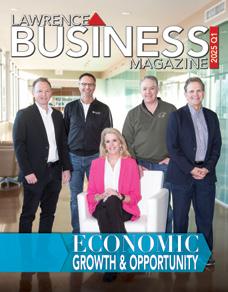
ON THE COVER (L-R)
Craig Owens, Steve Maceli, Bonnie Lowe, Rob Richardson, & Steve Kelly
Featured
Darin M. White
Copy Editor: Tara Trenary
Contributing Writers: Autumn Bishop Valerie Jackson Steve Nowak
Contributing
Photographers: Jeff Burkhead
Marc Havener, Resonate Pictures, Inc
Kenneth Douglas County Historical Society, Watkins History Museum
INQUIRIES & ADVERTISING INFORMATION CONTACT: editor@LawrenceBusinessMagazine.com LawrenceBusinessMagazine.com
Lawrence Business Magazine, LLC 3514 Clinton Parkway, Suite A-113 Lawrence, KS 66047
© 2025 Lawrence Business Magazine, LLC Lawrence Business Magazine, is published quarterly by Lawrence Business Magazine, LLC and is distributed by direct mail to businesses in the Lawrence & Douglas County Community. It is also distributed at key retail locations throughout the area and mailed to individual subscribers. All rights reserved. No part of this publication can be reprinted or reproduced without the publisher’s permission. Lawrence Business Magazine, LLC assumes no responsibility for unsolicited materials. Statements and opinions printed in the Lawrence Business Magazine are the those of the author or advertiser and are not necessarily the opinion of Lawrence Business Magazine.
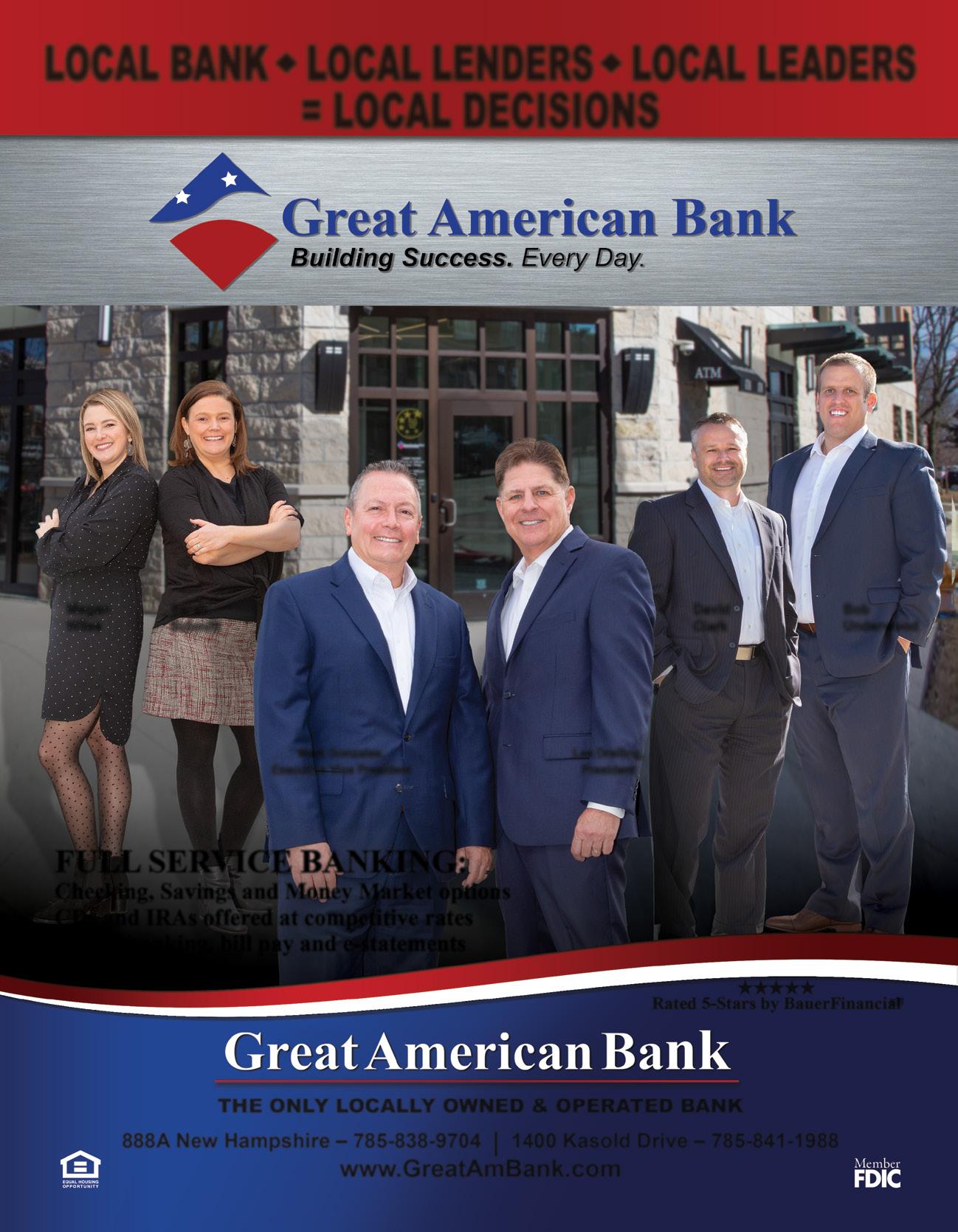






As the Board of Directors and staff of The Chamber, Lawrence, we are deeply committed to fostering a thriving and inclusive community. Recently, the topic of civility in public service has been a matter of growing concern. We believe it is imperative to uphold respectful and constructive discourse, even when viewpoints differ.
Public service is a demanding and often thankless pursuit, undertaken by individuals who dedicate themselves to improving our community. While it is natural to disagree on policies and decisions, we must recognize that our government officials and public servants are motivated by a sincere desire to make Lawrence a better place for all. Unfortunately, a vocal minority has dominated public meetings—whether at the city commission, county commission, or school board—creating an environment so hostile that many now hesitate to participate.
Our local governing bodies have been forced to implement new rules regarding public comment, a reflection of the growing challenges in maintaining respectful discourse. We must remember that debate should center on ideas, not personal attacks. As a community, we can and must do better.
Civility means treating others with respect, even in disagreement. The complex issues facing our world and our community require diverse perspectives and collaborative solutions. We need dedicated public servants willing to step up for the collective good. Rather than deepening divides, let us strive to find common ground. We all share a vision for a strong, healthy, and prosperous community—let’s work together to make it a reality. In trying times, be the one to lead with civility. Be the difference.
2025 CHAMBER BOARD OF DIRECTORS AND STAFF MEMBERS
Margann Bennett
Tricia Bergman
Mike Bernholtz
Jason Booker
Mike Bourneuf
Kate Chinn
Adam Courtney
Paul Davis
Joshua Falleaf
Dr. Douglas Girod
Brandon Graham
Sue Hack
Tiffany Hall
Jeff Hamm
Steven Hertzog
Ken Hite
Robert Hulse
Russ Johnson
Dr. Kevin Kelley
Steve Kelly
Chris Kohart
Evie Lazzarino
Karla Leeper
Bonnie Lowe
Dan Martin
Jared Martin
Gina Meier-Hummel
Lon Meyer
Oliver Minnis
Mackie Moore
Kathleen Morgan
Janci Mullen
Amber Nickel
Krys O’Brien
Craig Owens
Heath Peterson
Nicole Rials
Rob Richardson
Yvonne Ruder
Kaylee Sell
Dr. Jeanice Kerr Swift
James Walden
This statement was written by Board of Directors member, Gina Meier-Hummel. Gina has dedicated 33 years to serving at-risk Kansas families, working in public child welfare and nonprofit management. She has held leadership roles, including Secretary for the Kansas Department of Children and Families, Commissioner for the Kansas Department of Aging and Disability Services, and Deputy Director for Victim Services for the Attorney General’s office. Currently, she serves as the Executive Director of O’Connell Children’s Shelter and is an Adjunct Professor of Social Work at Washburn University.

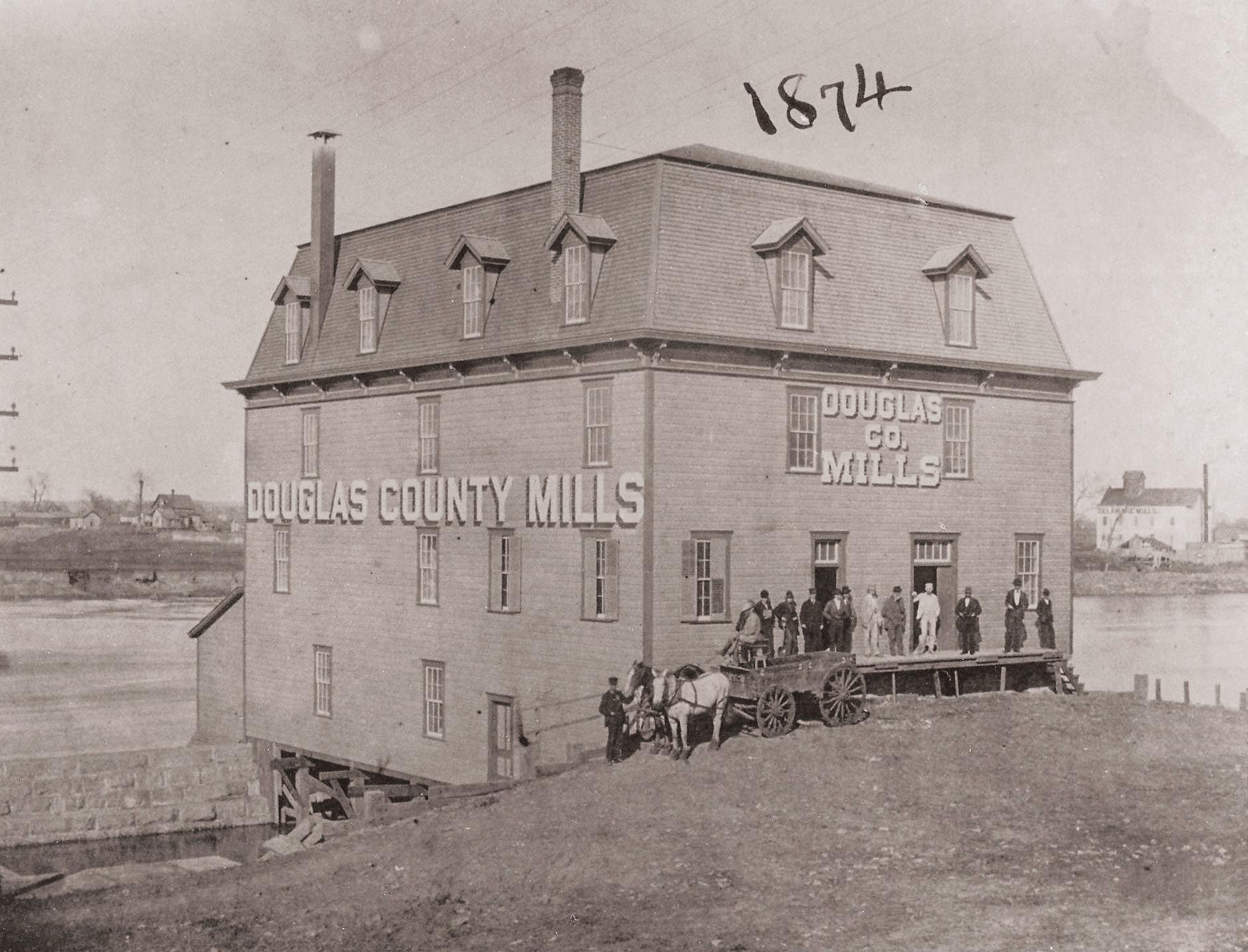
Many of the elements that make up Lawrence as we know it today are products of the community started and grown during the 1880s.
by Pat Michaelis, Ph.D., Historical Research & Archival Consulting
photos provided by Douglas County
Historical Society, Watkins Museum of History | watkinsmuseum.org
The early history of Lawrence was turbulent. When the Kansas-Nebraska Act was passed in 1854, residents of the newly established territory would vote to determine whether Kansas Territory would allow slavery. Lawrence was founded by the Massachusetts Emigrant Aid Co. to support antislavery advocates to move to Kansas. Originally a for-profit company, it intended to send settlers to Kansas to purchase land and build houses, shops and mills. After several investors found the notion of profiting from the antislavery cause distasteful, the company’s model reorganized as a benevolent society, and it was renamed the New England Emigrant Aid Co. in 1855. This led to Bleeding Kansas, with numerous skirmishes between anti- and proslavery supporters. The animosity between the two continued during the Civil War, culminating in a raid on Aug. 21, 1863, by William Quantrill, a Confederate guerrilla leader. He led a force of about 400 men into Lawrence, where they ransacked homes, looted stores and set fire to buildings. Quantrill’s men killed between 160 and 190 men and boys, and destroyed about 185 buildings, causing about $1.5 million in property damage. The raiders held the town for several hours and then withdrew.
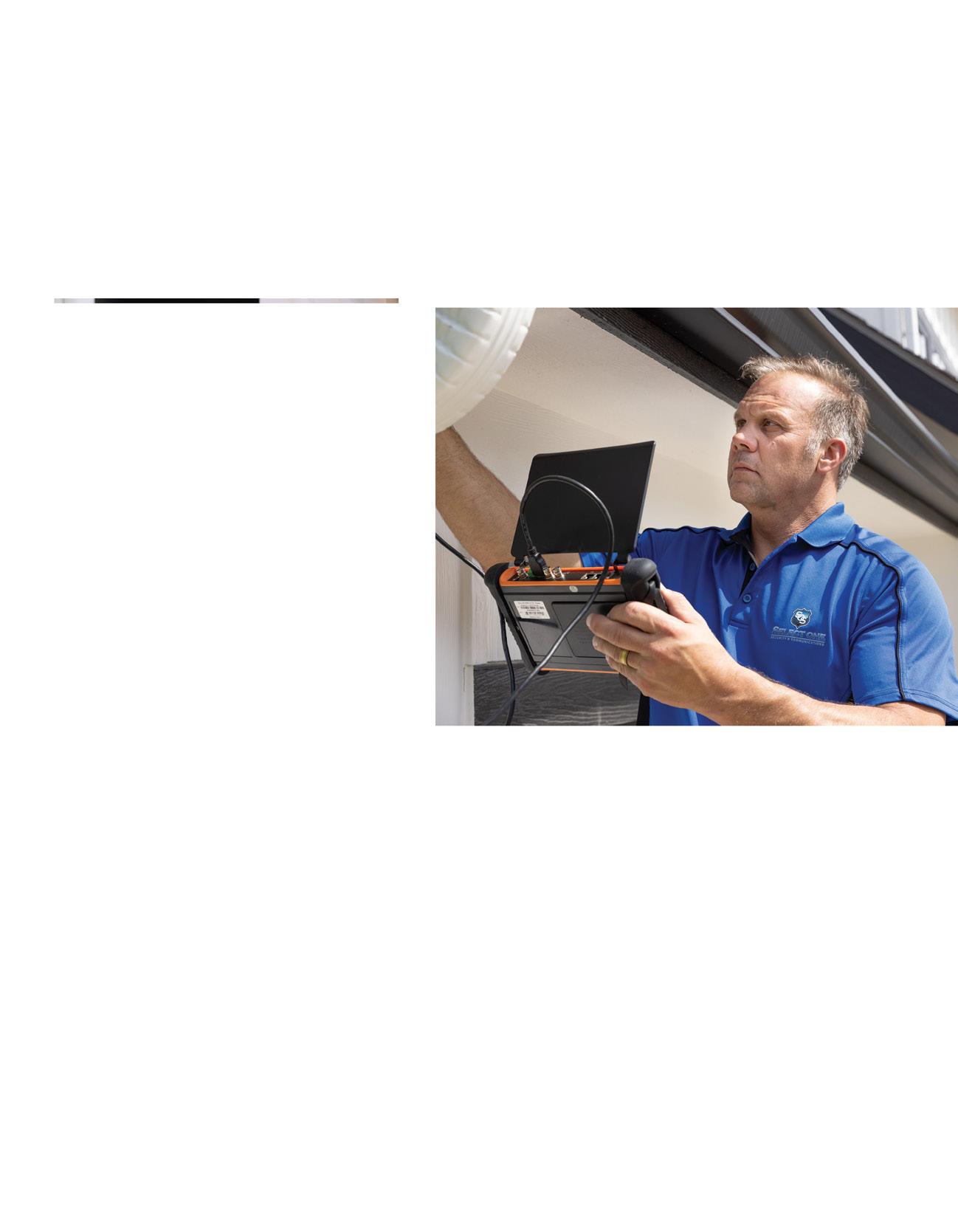


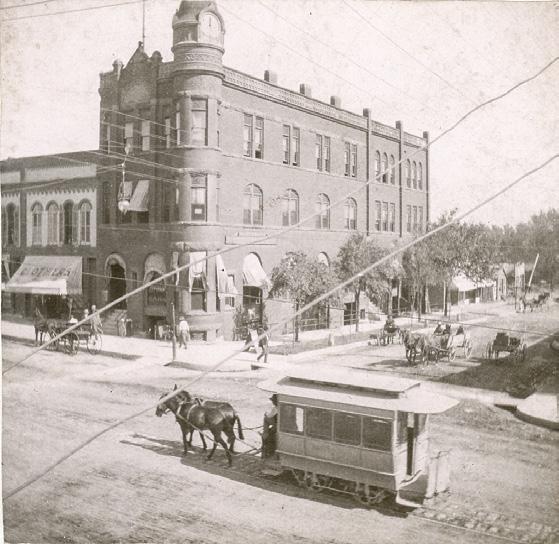
After this traumatic start to the early days of Lawrence and the end of the Civil War, the city could finally begin the process of becoming a commercial center. The population of Lawrence increased from 8,637 in 1869 to 25,092 in 1885, with 13,006 males and 996 females. In terms of race, 21,892 residents were white, and 3,198 were Black. Two people were identified as Chinese/Indian. People born outside the United States (foreign born) totaled 2,490.
Several railroads served the community. The Union Pacific Railroad arrived in 1864 and ran along the north bank of the Kansas River, necessitating building a wooden bridge to reach the city proper on the south side of the river. The Leavenworth, Lawrence and Galveston Railroad saw its first locomotive cross the Kansas River in 1867. By the 1880s, both the Union Pacific and the Atchison, Topeka, and Santa Fe railroads made a number of daily stops in Lawrence.
In addition to railroad service, the new city needed energy. Lawrence leaders planned to take advantage of the Kansas River by building a stone dam to provide the water needed for a power plant. After several unsuccessful attempts, property was purchased by James H. Gower, who conferred it upon his son-in-law, Justin DeWitt Bowersock. Apart from a small break in 1885, the dam withstood floods under Bowersock’s leadership, and this waterpower fueled substantial industrial growth in Lawrence in the late 19th century.
In 1880, only two Lawrence businesses, Douglas County Mills and Delaware Flour Mill, relied entirely on waterpower. By the mid-1880s, the dam had been stabilized, and Lawrence had a reliable source of cheap mechanical waterpower. By 1885, 12 waterwheels drove two flouring mills, a paper mill, two elevators, a twine factory, a shirt factory, two machine shops, the Leis chemical works, two printing offices, several barbwire works and a brewery. Two of the customers were The Lawrence Journal and The Lawrence World, predecessors to Original Merchants National
today’s Lawrence Journal-World. The two flour mills included Bowersock’s Douglas County Mills, which was producing 500 barrels of flour per day.
Financial institutions were crucial to the growth of Lawrence. In 1865, Lawrence National Bank started as the National Bank at the corner of Seventh and Massachusetts streets. In 1877, First National Bank started as Merchants Bank at the comer of Eighth and Massachusetts streets, founded by G. W. E. Griffith, Theodore Poehler and J. B. Watkins. In 1886, Merchants Bank became Merchants National Bank, which then in 1925 acquired Citizens State Bank. In 1930, Merchants National Bank became First National Bank of Lawrence.
Lawrence also had a brewery, a foundry and the following businesses: two broom factories, a barrel factory, a canning factory, a carriage factory, a rope manufactory, a shirt factory, two sawmills and a vinegar works. In 1885, the production of the mills, factories and manufactories was valued at $1,762,199.
Two examples of retail businesses operating in the 1880s illustrate that Lawrence business had moved beyond the frontier stage. One was the Shane-Thompson Photography Studio. In 1878, James Shane moved his family to Lawrence, Kansas, to provide his 10 children with access to better schools. The following year, Shane spent three weeks with a specialist in Chicago receiving treatments for his worsening hearing loss. The doctor had several framed photographs of famous men displayed on his office walls, and this gave Shane the idea to have his picture taken. While visiting with the photographer, Shane took an interest in the work of photography and paid the photographer $50 for two weeks of lessons. By the end of this time, Shane was hooked. He gave the photographer $200 to purchase a photography “outfit” for him and then bought a railroad car for $100 to use as his gallery. He returned to Lawrence with a new profession, although unfortunately, his hearing was no better. Shane moved his railroad car photo gallery around northeast Kansas and into Iowa. Eventually, his wife wanted him to stay closer to home, so he parked the car on Massachusetts Street in North Lawrence and bought a house on Louisiana Street. When his business outgrew the railroad car, Shane traded it for a gallery at 829 Massachusetts St., where Brown’s Shoe Fit is today.
The second example that provides flavor (pun intended) to the community was a confectionary. In 1868, William Wiedemann purchased an existing store at 11 E. Eighth St. from a Mr. Terry. Two years after that, Wiedemann moved the store to 833 Massachusetts St. In 1879, the elder Wiedemann died, and his son, William, inherited the business that he moved to 835 Massachusetts St. in 1886. A soda fountain was installed. Originally, the ice cream was made behind the store. A horse was hitched to the freezer, and it walked around the tub until the ice cream was frozen.
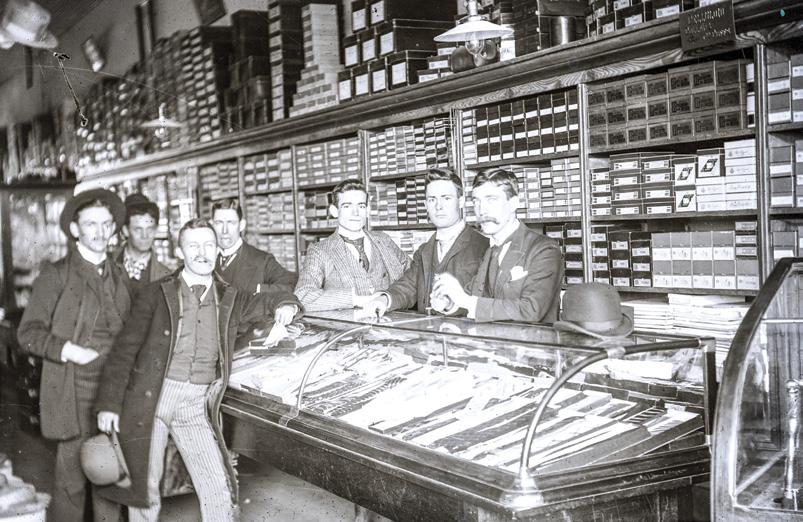
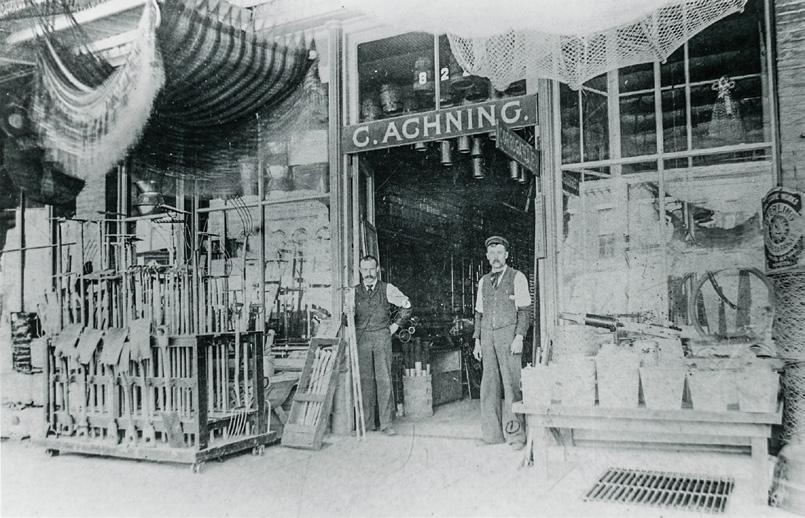
The candy was well-known throughout Lawrence and the region. The boxes holding the candy were covered with white, shiny paper. The lid had “Wm. Wiedemann” stamped in gold lettering. The contents included square caramel pieces, chocolate creams, some pieces of silver or gold foil, violet-flavored mints and green leaf-shaped mints, among other candies. The most popular chocolates were squares of fudge topped with coconut and vanilla creams.
Lawrence also had many other institutions associated with a prosperous community. There were 56 churches in Douglas County in 1885 (a breakdown by city was not available) associated with the following denominations: African Methodist Episcopal, Baptist, Christian, Congregational, Episcopal, Lutheran, Methodist Episcopal, Presbyterians, Roman Catholic, Swedish Baptist, Unitarian, United Presbyterian, Universalist and Wesleyan Methodist. As for schools (again no breakdown by city), there were 85 districts with a student population of 8,697 in 1886. Male teachers made $51 per month, while female teachers earned $44.73 a month. In 1861, The University of Kansas was established, and it became a major economic and social contributor to the community. Lawrence had three major newspapers: The Lawrence Weekly Journal, the Lawrence Tribune and The Lawrence Gazette It had a German language newspaper titled Die Germania, The True Citizen, which was a prohibition paper, and an amateur newspaper called the Kansas Zephyr. Two newspapers were published by The University of Kansas, the University Courier and the monthly University Review
By 1890, Lawrence had everything it needed to continue to be one of the leading cities in Kansas. It had a growing population, railroads, factories, banks, retailers, newspapers, schools including The University of Kansas and churches. In retrospect, most of the elements that make up the city we know today were products of Lawrence’s community growth in the 1880s. p
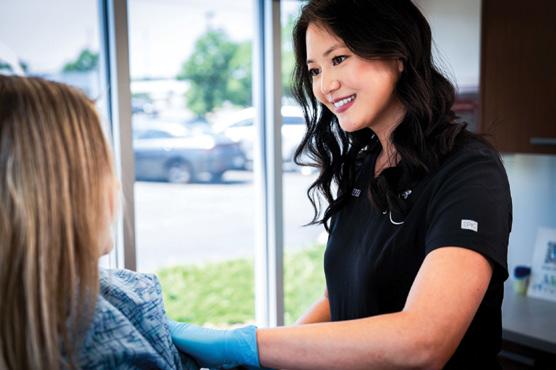
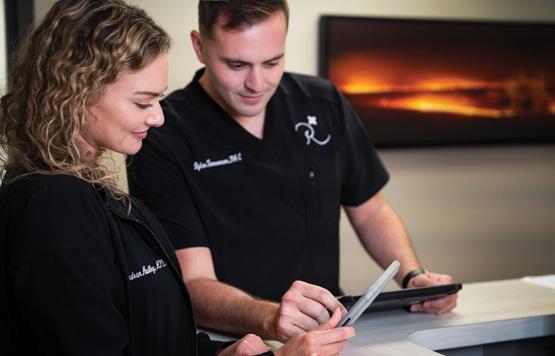
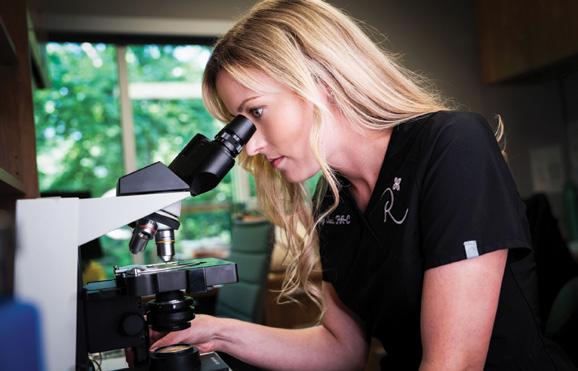
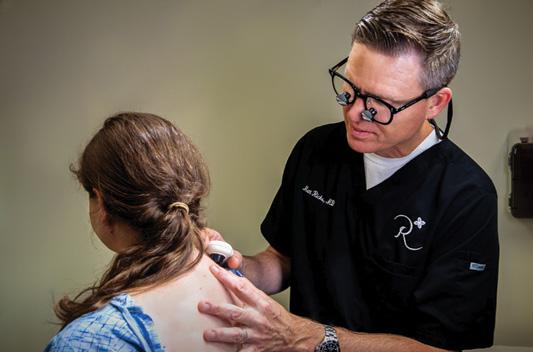
Dr. Matthew Ricks, MD, FAAD, FACMS, is the owner and medical director of Ricks Advanced Dermatology & Skin Surgery and Radiance Medical Spa. He is the only fellowship-trained Mohs surgeon in northeast Kansas outside of the Kansas City metro area. He is a native Topekan who returned to Kansas in July 2009 after 24 years of military service. He has been practicing Mohs surgery, dermatology and cosmetic procedures locally since then.
Ricks opened his private practice in January 2016 in Topeka. With a thriving Topeka practice, many patients and staff already living in Lawrence, and an identified community need, Ricks decided to open a second location. In July 2023, Ricks Advanced Dermatology opened in West Lawrence at 4910 Corporate Centre Dr., Suite 150.
What services do you offer in the Lawrence office?
The Lawrence office offers all general dermatology services, including the diagnosis and treatment of acne, rosacea, hidradenitis suppurativa, eczema, psoriasis, nail fungus, hair loss, mole removal and skin cancer screenings. Our team of physician associates (PAs) and nurse practitioners (NPs) are highly trained to identify skin cancers and perform biopsies. Simply put, come see us for any issues with your skin, nails or hair. We also treat, prescribe and manage highly complex biologic medi -
cations for the treatment of atopic dermatitis, plaque psoriasis and urticaria (itchy bumps), to name a few.
There are several reasons to choose Ricks Advanced Dermatology.
1. Our staff. Not only do we have exceptional, highly trained dermatology PAs and NPs, we also employ registered nurses (RNs), licensed practical nurses (LPNs) and medical assistants (MAs). Part of Ricks’ mission is to employ happy people who are empowered to provide a positive, patient-centered experience.
2. We are accepting new patients, and we can get you in fast.
3. We offer short, in-office wait times.
4. We accept almost all insurances, including Medicare.
5. You have the fast track to the only fellowship-trained Mohs surgeon outside of Kansas City.
Do I need an annual skin cancer screening?
Skin is the largest organ in the body, so it is no surprise that skin cancer is the most common cancer in the U.S. According to the American Academy of Dermatology, it is estimated that approximately 9,500 people in the U.S. are diagnosed
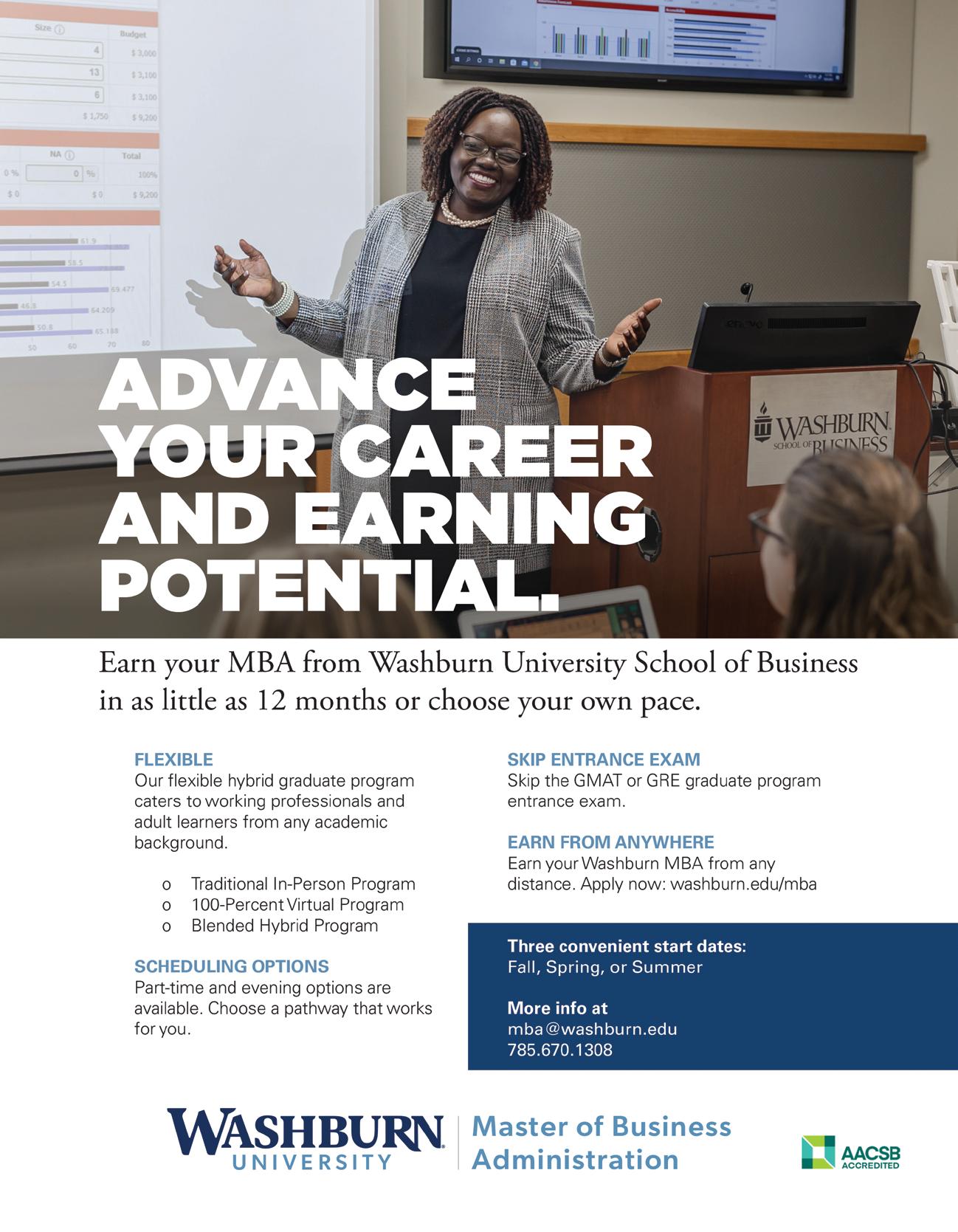
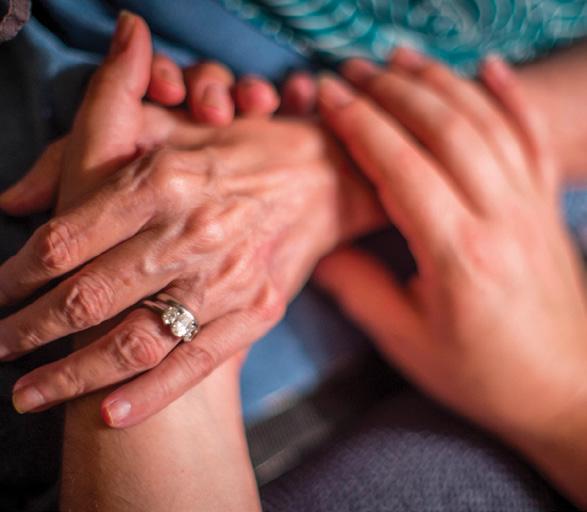
with skin cancer every day. At Ricks Advanced Dermatology, we recommend anyone with one or more of the following risk factors get an annual skin cancer screening with a dermatology professional:
• personal or family history of skin cancer
• high number and/or density of moles/freckles
• a history of significant sun exposure (including tanning beds)
• if you notice new spots, changing, itching or bleeding spots, or spots that look different from others
• if you have fair skin, light eyes, red or blonde hair.
Skin cancer screenings, or “skin checks,” are quick and easy. No need to be nervous—our NPs and PAs are highly skilled in identifying skin cancers. At the skin check, we will bring you back to an exam room, ask you a few medical history questions and have you change into a gown. With your consent, our providers will look you over from scalp to toes using a small, handheld device called a dermatoscope that has a light and magnifying lens to help see the skin or an area of concern more clearly than the naked eye. If an area of concern is found, you will know right away, and our providers will discuss next steps. If a biopsy is needed, we can often do it in the same visit.
Our best advice: Come see us at least four to six months prior to the big day. If you are getting married this summer and have skin issues you hope to resolve prior to your big day, or you want perfect skin for graduation or prom, we want to see you now so we have time to properly treat your skin condition, giving you the best chance for clear skin on your special day. One to two months is usually not enough time for most skin conditions.

Mohs micrographic surgery is a highly specialized skin cancer surgery. The goal is to remove all skin cancer, sparing as much normal skin as possible, while giving the highest cure rate with minimal scarring. It is typically performed anywhere from the collarbone up. A Mohs fellowship is one to two years of additional postresidency training only performing Mohs surgeries, learning dermatopathology (looking under the microscope to determine if all the cancer was removed) and perfecting the closure techniques that allow for the great cosmetic outcomes. Fellowship-trained Mohs surgeons are exposed to a minimum of 500 cases during training along with rare tumor pathology, difficult tumor locations and complex wound reconstruction. In summary, you should care because this training leads to higher cure rates and better cosmetic outcomes in a single visit with a single physician. p
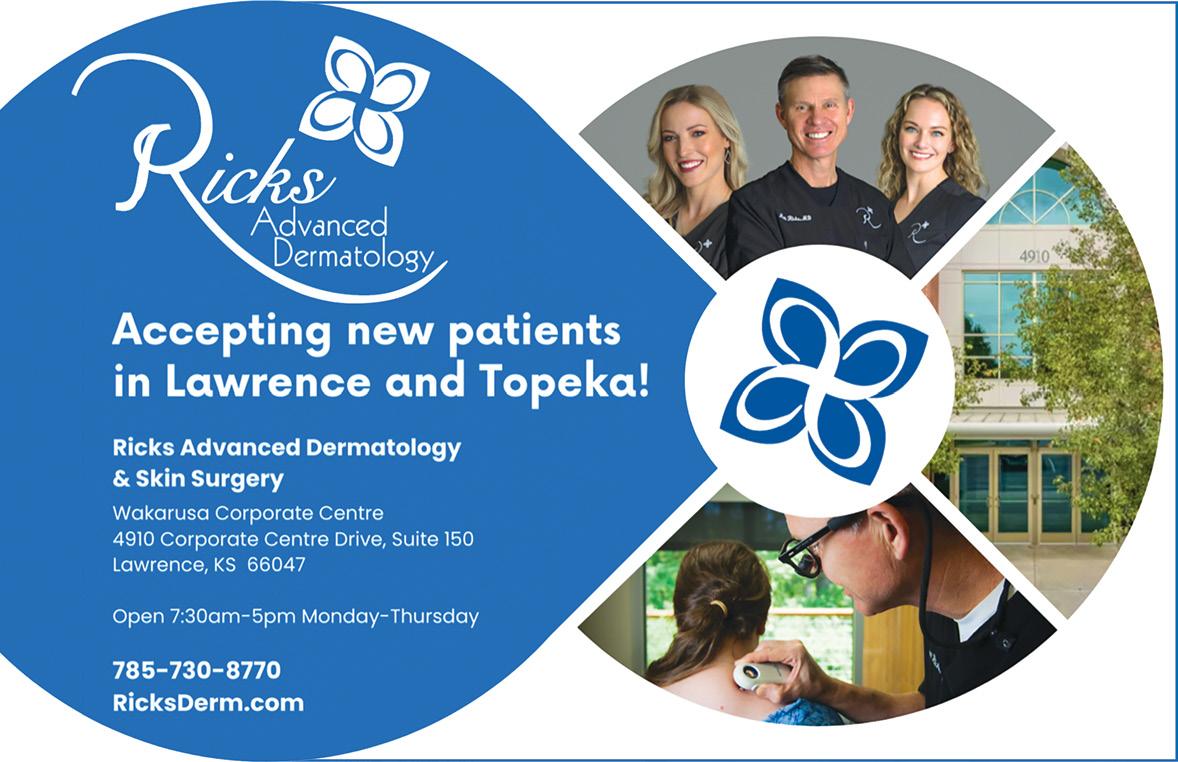

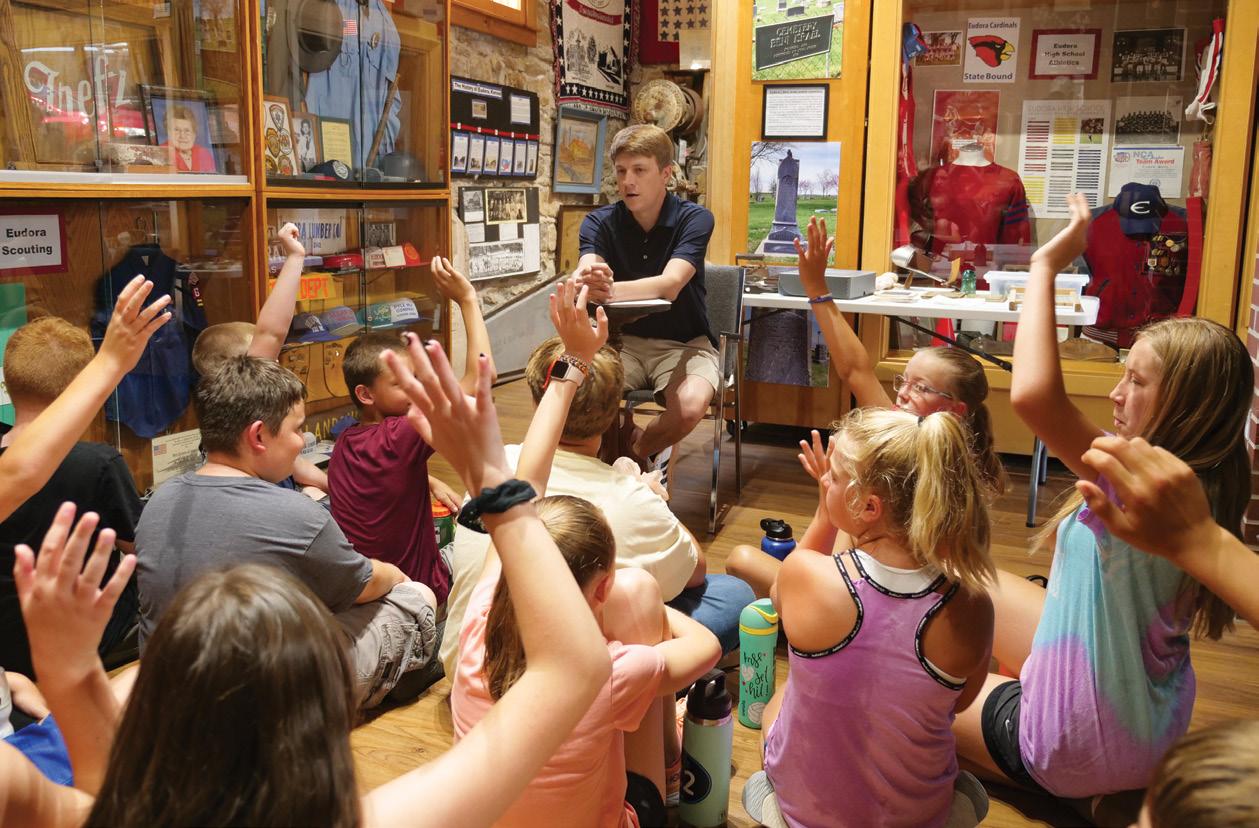
Watkins Museum of History will celebrate its 50 anniversary and remains committed to preserving and sharing the cultural heritage of Douglas County, sharing stories of its history and providing the public access to historic sites, artifacts and records.
by
Steve Nowak, Executive Director, Douglas County Historical Society, photos provided by Douglas County Historical Society
In 1970, when City Hall moved from the Watkins Building, its home since 1930, a concern for the preservation of the 1888 building and a desire to preserve its public use created an opportunity for the Douglas County Historical Society (DCHS). The Society was formed in 1933 with a mission to preserve records and artifacts of Lawrence’s early history but did not have a permanent museum. Thanks to the efforts of dozens of community members who raised the funds necessary to renovate the 82-year-old building and those of lawyer Raymond F. Rice, who negotiated with the estate of Elizabeth Miller Watkins to secure ownership for the Society, that permanent home became a reality. Only one issue remained: Operating a museum required financial resources the Society did not have. A unique and enduring partnership with Douglas County overcame this last hurdle, and the Elizabeth Miller
Watkins Community Museum, now the Watkins Museum of History, opened to the public in April 1975.
As the Watkins Museum prepares to celebrate its 50th anniversary (the birthday party is April 26, and there will be cake), I would like to express the DCHS’s appreciation to Douglas County Government and the people of Douglas County for the support that has made our local history museum one of the most respected museums in Kansas. I would also like to share more about the partnerships that have made success possible. In the 50 years that followed the opening of the Watkins Museum, Douglas County established partnerships with other private historical societies to preserve heritage across Douglas County. Historic sites and history museums in all parts of the county are preserved by the Eudora Area Historical Society, the Lecompton Historical Society, the Santa Fe Trail Historical Society of Douglas County and the Clinton Lake Historical Society, with the help of Douglas County, in a partnership now administered by the County’s heritage coordinator.
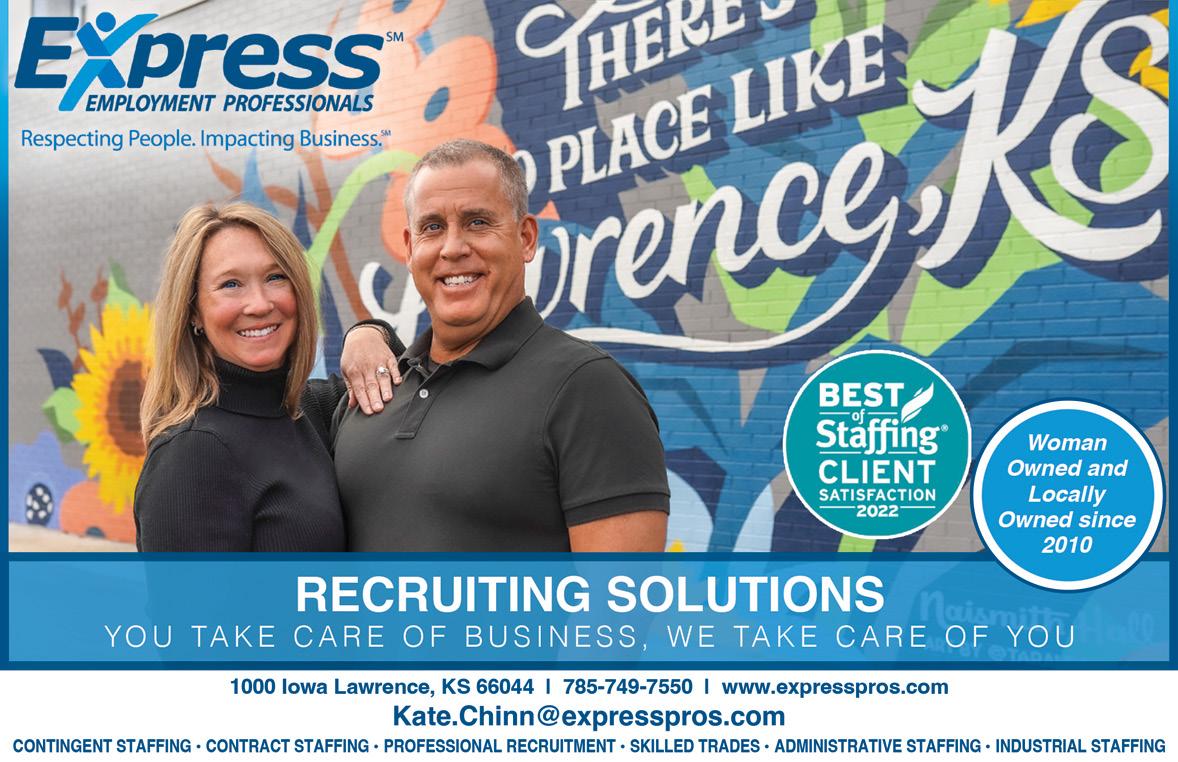
B I G C I T Y
A B I L I T Y
w i t h h o m e t o w n v a l u e s


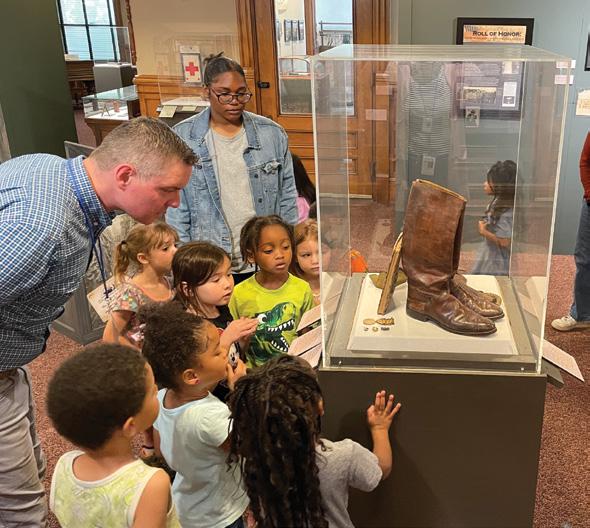
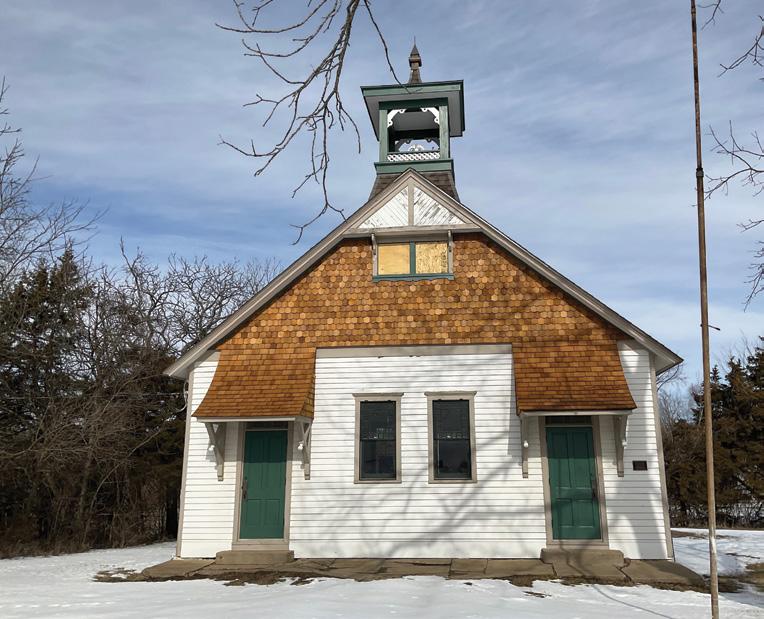
This public-private partnership is remarkably successful at preserving Douglas County’s heritage, sharing stories of its history and providing public access to historic sites, artifacts and records. Working together, the five Heritage Partners annually engage an audience roughly equal to 30 percent of the county’s population and activate hundreds of volunteers countywide. Their annual economic impact is more than $1.3 million. Their operational activities and the money spent by visitors generates more than $170,000 in revenue for state and local governments. This partnership also leverages the County’s investment in heritage preservation and access. In 2024, Douglas County provided about 40 percent of the funding needed to operate the Watkins Museum. The remaining 60 percent comes from membership dues and donations, earned revenue like program and research fees, and grants from private foundations and the federal government. Securing federal grants brings new money into the community and boosts the local economy. Over the past five years, Douglas County’s Heritage Partner Organizations have collaborated on grant projects that mediated health risks during the pandemic, developed field trip curriculum for county historic sites, created online learning resources about the Underground Railroad for teachers and students, and completed capital improvements and historic preservation projects at eight historic sites, expending almost $900,000 in federal funding locally.
Successful for 50 years, the partnership between Douglas County and the Heritage Partners continues to evolve. In 2025, Douglas County asked the Douglas County Historical Society to enter into a service agreement to provide funding for Watkins Museum operations. This agreement officially defines and measures the services the Watkins Museum provides to the people of Douglas County and to visitors on the
County’s behalf through the funding it provides. It might seem like a museum or historic site does not provide a great variety of public service, but that range is broader than you might think. The services the County’s Heritage Partners provide fall into four categories: preservation, access, engagement and collaboration. Museums and historic sites preserve the structures, artifacts, photographs and records that are the physical reminders of our history. They also ensure that historic collections evolve and grow to represent our ever-changing communities. Museums and historic sites guarantee public access to this heritage, not just through open hours at their sites but by providing access to archival materials, in person and online, and research assistance to all who seek information about the County’s past. The Heritage Partners also provide exhibitions, programs, events, tours and resources that educate the public, encourage people to experience historic places and build understanding of our shared past. And finally, these organizations collaborate with each other and dozens of other cultural organizations, businesses and nonprofits to share information, stretch limited resources and engage new audiences.
Excited to mark our 50th anniversary, the Watkins Museum is also considering the future. Like our partnerships, the DCHS’s mission has evolved over the past 50 years as we focus now on preserving and sharing Douglas County’s cultural heritage to inspire civic engagement and a commitment to shaping a better future. How can we increase our public service, expand our accessibility and help our communities navigate potentially uncertain times? What activities will engage new audiences? Where will we secure sufficient operational funding? If the past is an indicator, only by working together will we find success. p





Interventional cardiology is not only necessary after a heart incident has occurred, it can also be a helpful prevention measure.
by Autumn Bishop, LMH Health, photo courtesy LMH Health
It’s only about the size of a fist, but the heart is the hardest working organ in your body. It pumps the equivalent of 2,000 gallons of blood throughout your body all day, every day, so it’s important to keep it in top shape.
If you have high blood pressure, high cholesterol or other risk factors, your primary-care provider might refer you to a cardiologist—a physician who specializes in caring for the heart. But if there’s more going on, you may be seen by an interventional cardiologist, such as Dr. Aaron Doonan.
Cardiologists care for patients with many kinds of heart conditions, including heart failure and vascular disease. Interventional cardiologists also treat these conditions, but you’re more likely to see one after a problem has already occurred.
“The biggest difference between general and interventional cardiology is procedure-based. Interventional cardiologists perform heart catheterization procedures, which means we care for people who need stents or artery disease interventions,” Doonan explains.
While cardiology was always his calling, Doonan also loves working with his hands. That aligns with the handson nature of interventional cardiology.

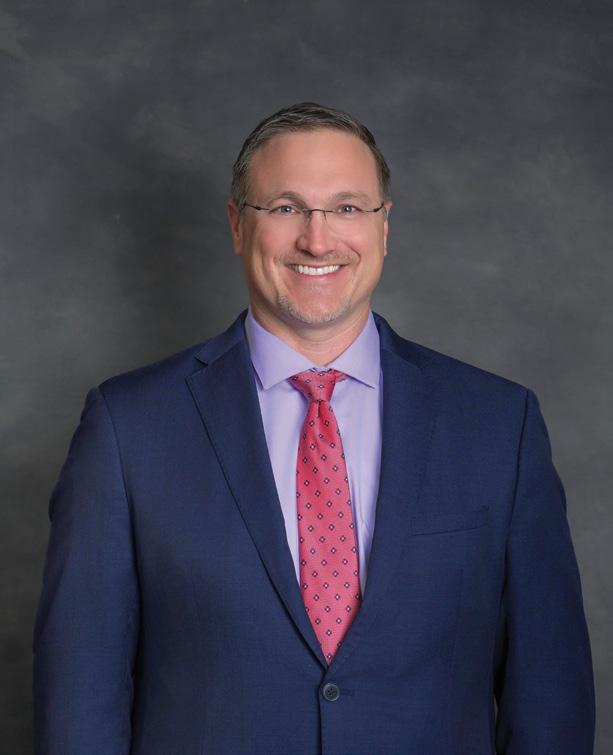
“I like to try and find and fix a problem, similar to tinkering with cars or maintaining equipment. I guess you could say that I like to tinker, and interventional cardiology is a lot like that,” he says.
LMH Health has two interventional cardiologists on staff, Doonan and Dr. Thomas Kurian. They each also provide general cardiology care.
“Interventionalists are usually called upon after a problem has occurred, but we also work with patients to prevent issues,” Doonan says. “Someone may come to me to get out ahead of a problem. They’ve had a family member who has had a heart attack, or they’ve got a high calcium score indicating a buildup of plaque. But if you come to me in the middle of the night, that’s a different story.”
Data from the Centers for Disease Control and Prevention (CDC) shows that heart disease is the leading cause of death for men, women and people of most racial and ethnic groups in the United States. High blood pressure, high cholesterol and smoking are factors that increase your risk of developing the disease. Prevention is key.
“Do the things that you always hear doctors say. Eat a healthy diet, and get some exercise. I recommend that you follow the diet and lifestyle recommendations from The American Heart Association,” Doonan continues. “When patients come to see me, we take time to talk about focusing on the basics. It can be hard to make lifestyle changes, but even small improvements have an impact.”
Managing stress is also a big part of the equation—one that physicians haven’t always talked about.
“Physicians are traditionally brought up to say, ‘Let’s manage that hypertension or cholesterol with medication.’ We haven’t always talked about taking a 30-minute walk to ease your mind or unplugging from social media for a bit,” Doonan adds. “Those things are important, because having a way to decompress is good for your heart, as well.”
In February 2023, LMH Health entered into a strategic clinical relationship with The University of Kansas Health System (UKHS), paving the way for clinical partnerships that increase patient access to specialty care in and around Douglas County.
Traveling long distances to receive medical care can be challenging. Having interventional cardiologists such as Doonan available locally as part of the strategic clinical relationship can make a ton of difference. They can handle acute problems at LMH and prevent patients from needing to be transferred to other facilities for care.
“If you have to get in the car and drive an hour to see your doctor or to get all of your testing, it adds hours to your day, and that can be hard. Convenience matters,” he says. “While LMH Health can’t handle everything, we can manage most of your care and emergencies locally.”
Doonan loves working at LMH Health. He says the interactions he’s had between specialties, such as primary care and hospital medicine, have been outstanding.
“LMH Health has been such a welcoming and cordial community, both with patients and my colleagues. People are friendly and supportive, and my partners have been great,” he explains. “I find that it’s easy to walk down the hall with a smile, and people smile back. Being at LMH gives you all the good feels.” p

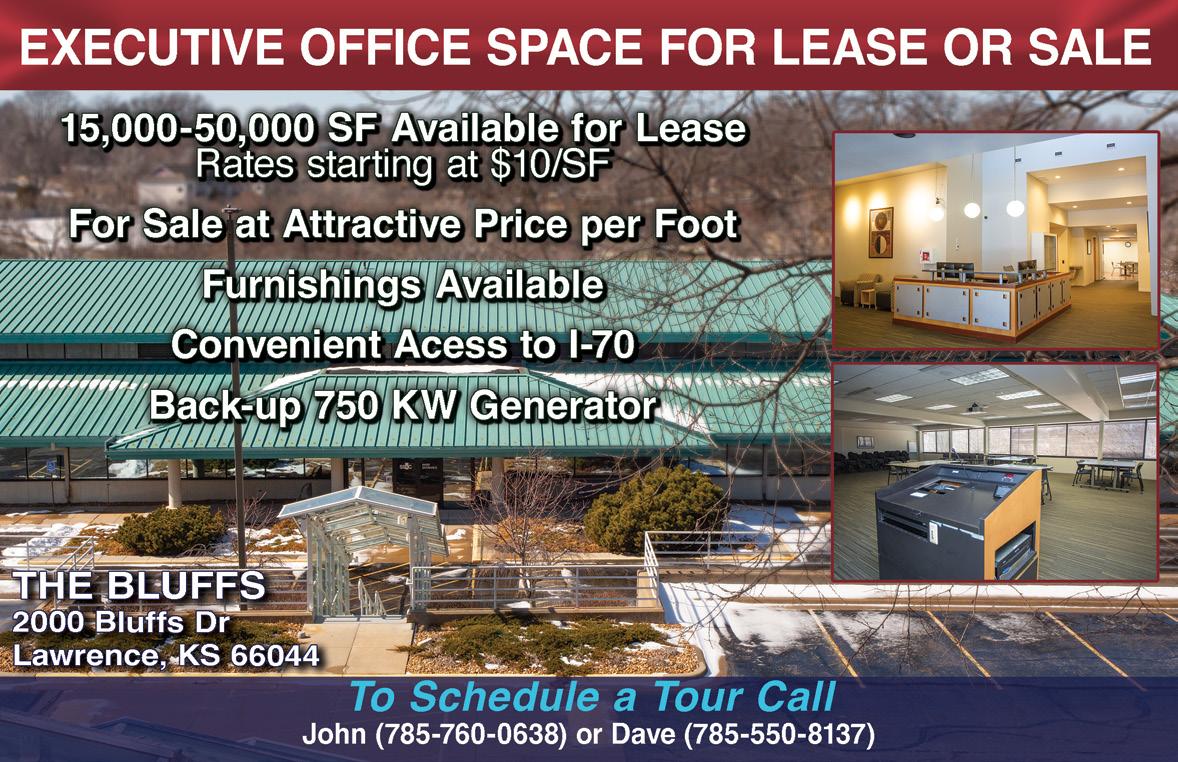
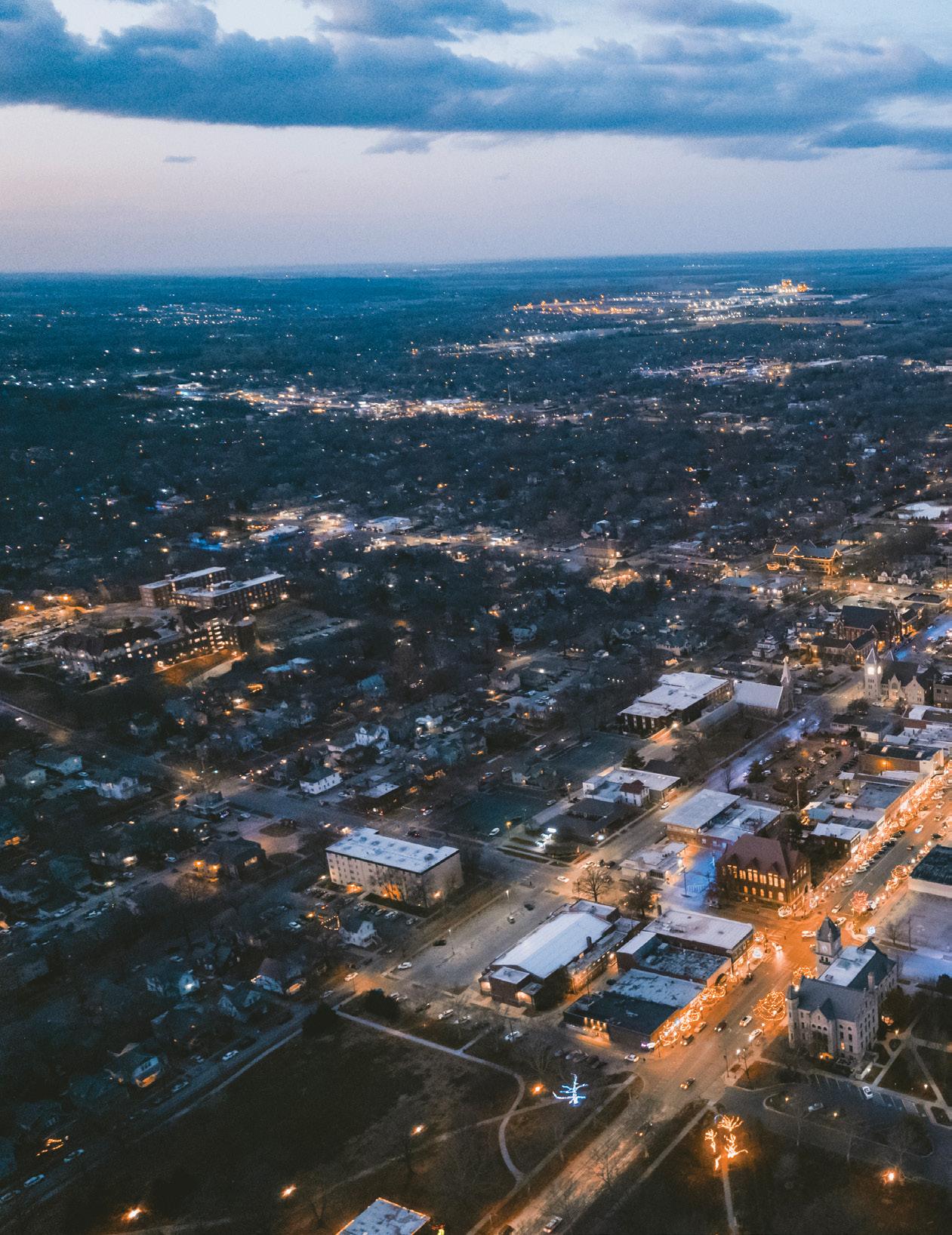
Lawrence and Douglas County’s diverse mix of businesses positively impacts growth and economic development, but a lack of affordable housing can be a challenge.
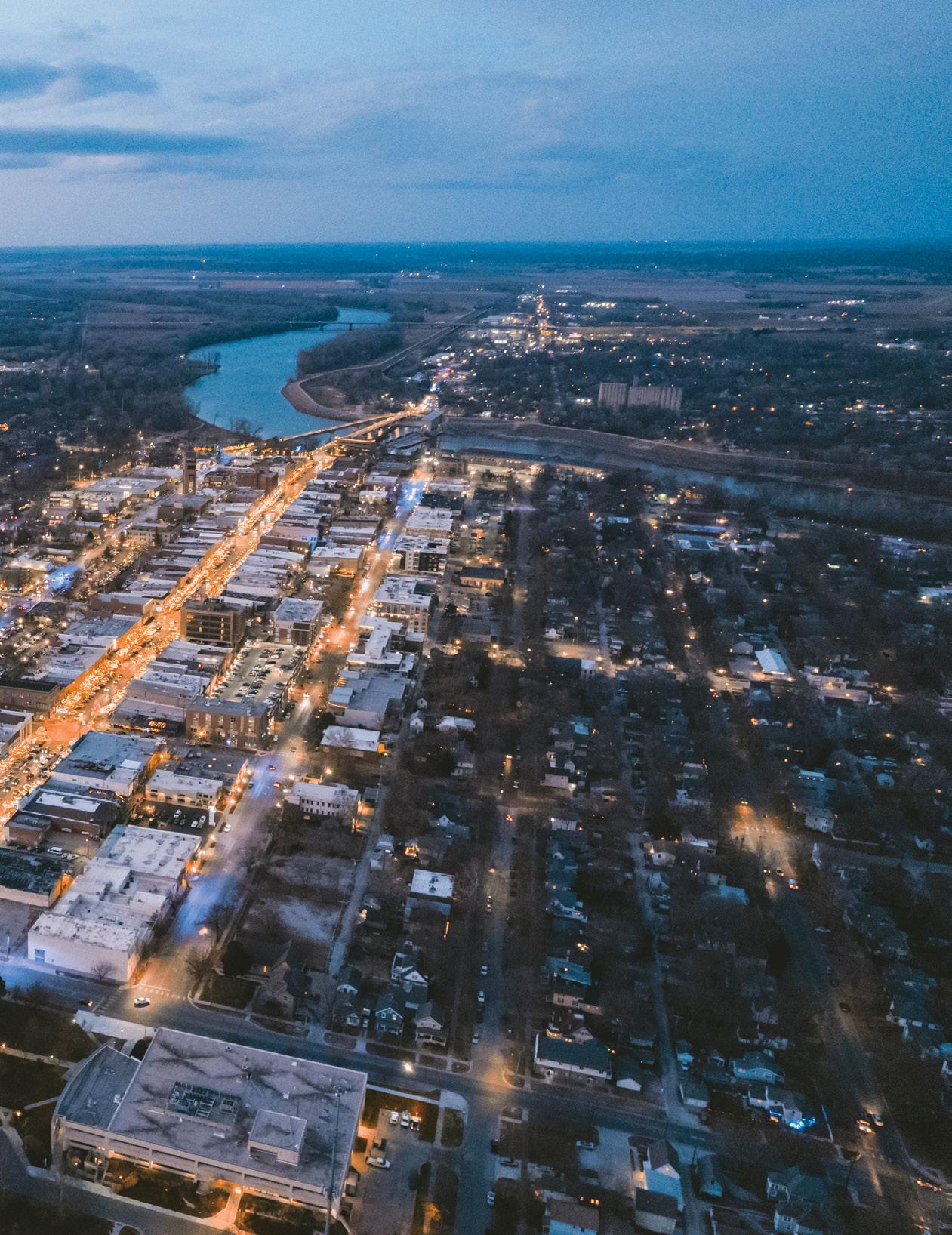
DOUGLAS COUNTY 10, 000 BUSINESSES
53,000JOBS
According to someone in the know,
economic
development is all things that occur in an area that create opportunities and prosperity for all who live there.
“That’s whether it’s private entities or large public institutions like (The University of Kansas), which is a major driver here,” says Steve Kelly, vice president of economic development for the Economic Development Corp. of Lawrence and Douglas County (EDC). “We want to build wealth, build revenue that creates quality of life and everything in between.”
Sounds easy enough in theory, but of course, it isn’t that simple. Planning, initializing and administering all that goes into economic development anywhere, let alone a city as diverse and unique as Lawrence, takes a village, and that village needs a coordinator.
That’s where the EDC comes in.
Formed in the 1970s as Douglas County Development Inc. and founded by the Lawrence Chamber of Commerce to partner with the city and county for the development of East Hills Business Park, the organization was rebranded the Economic Development Corp. of Lawrence and Douglas County 15 years ago to be reflective of development work throughout the entire county.
“We work with industrial properties to identify companies looking to do business here,” Kelly says. “We identify needs and challenges, and do whatever we can to help meet those needs and overcome those challenges so that Lawrence and Douglas County can grow and be prosperous.
“We function as a sort of ombudsman and represent businesses as they work through the processes of getting started,” he continues. “We work with entrepreneurs to provide loans to startup businesses.”
Kelly says the EDC also has a good knowledge of resources outside the county. “And we work on workforce and with the University to make sure companies are aware of resources, make sure they have the best information, make sure they have the best chance at success.”
The Lawrence Chamber of Commerce operates the EDC for all of Douglas County. The EDC contracts with the Chamber for staffing, with Bonnie Lowe as president and CEO for both entities, and Kelly as vice president of economic development for both. However, the EDC has its own board of directors separate from the Chamber.
“We learn from both the Chamber and EDC Boards about what they’re hearing regarding what businesses need,” Lowe says.
The EDC is financed through a joint effort among the City of Lawrence, Douglas County and the business community. It gets 25 percent of its funding each from the city and county, and the other 50 percent from the private sector. In 2017, the EDC embarked on a campaign called Growing Forward, and the results were impressive: 1,148 new jobs created, $219 million in new capital investment, the creation of an auto lab at Peaslee Tech and significant expansion of several of the area’s top businesses.
To continue that momentum, the EDC in 2022 launched Rising Together, a detailed five-year economic development initiative aimed at creating new high-tech business, assisting and retaining existing businesses, encouraging entrepreneurship, developing and growing a skilled workforce and helping solve Lawrence’s long-standing housing shortage, all aimed to produce significant economic benefits to the city and county.
When it comes to attracting and finding homes for businesses in the area, the list of applicants is “potentially international,” Kelly explains. A community the size of Lawrence can make it challenging getting on the radar as possible future sites for far-flung companies, but Kelly says the EDC often enlists help from the likes of the Kansas Department of Commerce and the Kansas City Area Development Council, comprised of 18 counties in Kansas and Missouri, which serve as consultants working to identify companies in the area.
“In the course of a year, we might get 40 site requirements,” Kelly says. “We do some soliciting on our own. A lot of it is regional in nature, but calls on businesses could come from anywhere.”
Indeed, Kelly points out that just last year, the EDC helped establish and coordinate meetings between a representative from a company in Germany that was interested in partnering with a local precision machining company.
Simply put, the EDC is willing to do whatever it takes to help bring wealth and prosperity to the area.
“Economic development to me is about creating opportunities and wealth for our citizens and families,” Lowe says. “This gives (the EDC) opportunities to provide assistance.”
As noted, the EDC is involved in many aspects of economic development, including but not limited to in-depth analysis of the region’s available workforce, assistance in identifying and accessing available incentives, supplying current demographic information, serving as a liaison with local government agencies, even providing personal tours of the region and available locations.
One specific initiative it’s especially proud of is Diversify Douglas County (DDC), which came about as the result of a 2017 health study that looked at health in impoverished ar-
eas, particularly among the county’s minority population. The initiative promotes economic prosperity through low-barrier, low-interest loans designed for entrepreneurs starting minority-owned businesses.
“It was a priority identified in the community health plan,” says Joshua Falleaf, director of economic development with the EDC, who heads the program. “The goal is to increase entrepreneurship and new businesses through equitable business and entrepreneurship opportunities.”
The DDC offers up to $15,000 loans for a 48-month term at an interest rate of 4 percent. There’s no early payoff penalties and no matching funds required.
Kelly says the EDC, which administrates the program with its financial review board through funding from the county and city, is processing about one loan per month.
“Everyone who wants to start a business should have the opportunity,” Falleaf says. “A lot of traditional lending hinges on credit and collateral. The DDC asks only that applicants have a strong, developed business plan and a one-year cash projection.”
The KU Small Business Development Center serves as a partner to Diversify Douglas County, and assistance isn’t limited to just a one-time loan.
“In addition to startup capital, DDC also provides continued support, technical assistance and additional opportunities as appropriate for each entrepreneur,” Falleaf explains. That additional support can be anything from offering business training courses to networking opportunities with complementary businesses.
“It’s a collective, community-based effort,” he says. “We’re doing our best in a comprehensive way to lower barriers to starting a business.”
Falleaf points to Gavin Ayode, owner of Blinded Collections, a flourishing apparel company that benefited directly from DDC funding.
“We’re at a pretty good pace,” he says. “Now that we’re up and running, we are looking for ways to improve.”
Lowe continues, “It’s a wonderful opportunity for the area. Douglas County benefits through suppliers who work with these new companies, and it also aids the workforce.”

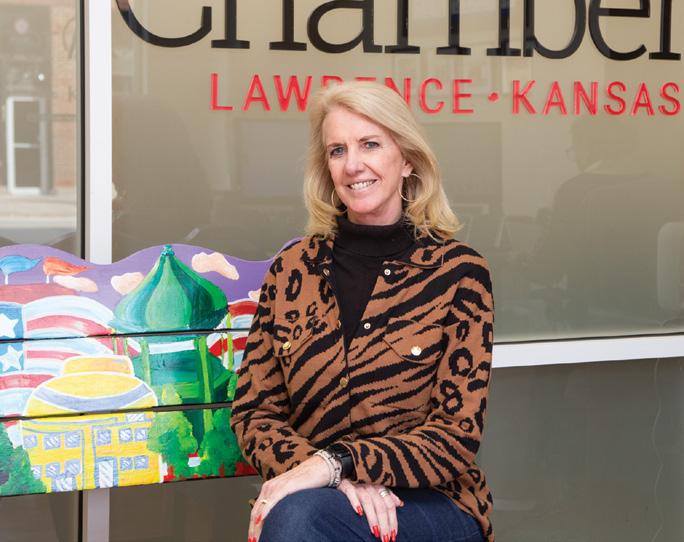
and CEO, and Joshua Falleaf-Director of Economic Development
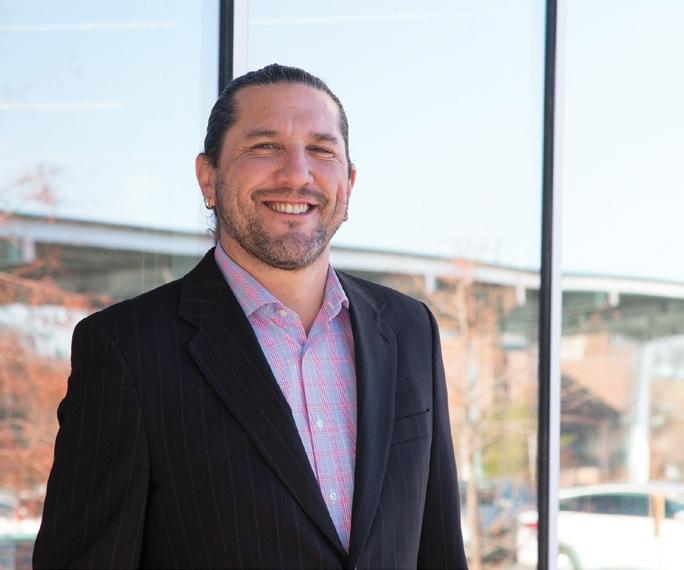
There are roughly 10,000 businesses throughout Douglas County, Kelly says, and Lawrence, with a population of 95,103 per American Community Survey data for 2018–2022, has around 53,000 jobs, with KU easily being the city’s largest employer. Of individuals 25 to 64, 56.6 percent have a bachelor’s degree or higher compared with 35.8 percent nationally. The median household income in Lawrence is $59,834, and the median house value is $247,300.
While wages declined during and directly following the worst of the COVID-19 pandemic in 2020, they’ve rebounded since. In the spring of 2021, the median wage in the county was $33,800. Today, that stands at $41,730.
“The vast majority of businesses are ones that started here in Lawrence,” Kelly explains. “We’re a university town, but a community like Lawrence, we also have big companies like Berry Global and Hallmark that make products that distribute globally. And we have an influx of tourism.”
All that gives the Lawrence and Douglas County area a unique and diverse mix of jobs and businesses, which all contribute to positive impacts of wage growth and attract healthy economic development. Unfortunately, the fact that people want to live in the area and never want to leave also contributes to a challenge the city has faced for years—lack of available and affordable housing. Inventory of available housing has been tight for quite some time, which has caused prices to climb higher and out of reach for many laborers. That’s
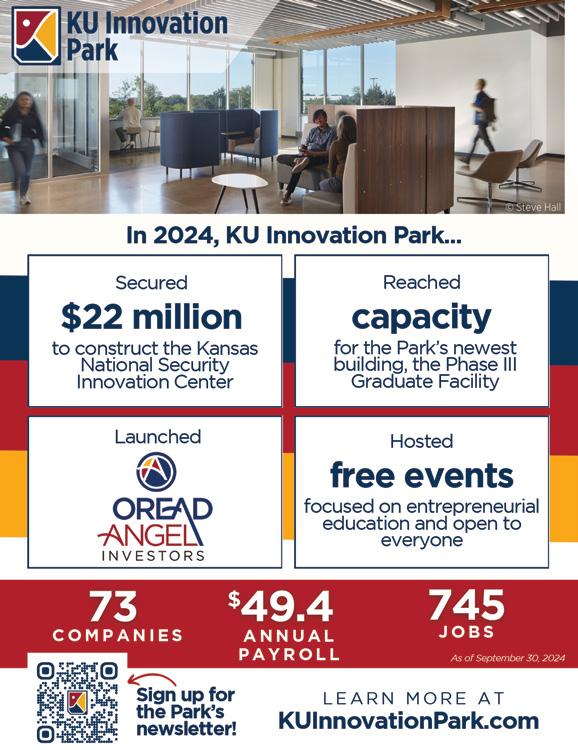
forced many to seek more affordable housing outside of the city, in Baldwin City, DeSoto or Eudora, in neighboring Johnson County. It’s most likely a key driver in Douglas County having more commuters out of the city, 26,000, than commuters in, 21,000.
“Housing is our biggest challenge,” Kelly says. “The Chamber and EDC have been at the forefront of dealing with the affordable housing shortage.”
Kelly points to plans currently underway to install infrastructure on land west of the South Lawrence Trafficway, land that one day soon could be available for homes or industrial space, which also is in short supply. The goal is, within three years, to have adequate land annexed to support the development of 800 housing units, with an annual goal thereafter of issuing a minimum of 300 single-family home permits. Within three to five years, the aim is a minimum of 100 acres annexed that are zoned and shovel ready for industrial development.
Housing and industrial property space notwithstanding, Lowe and Kelly are nothing other than optimistic about the future of Lawrence and Douglas County.
The quality of the area’s workforce and quality of living—the fact that Lawrence is, in many ways, a big small town—makes it an attractive destination for both business and living, Kelly explains.
“There are a lot of amenities here because of the University and the fact we’re 30 minutes away from (Kansas City),” he says. “We have all the rural experience, and we’re close to all the amenities of a city. You can get to (Kansas City International airport) in less than an hour.”
Kelly says the work he and the EDC are doing with KU Innovation Park and the Lawrence Tech Guild to foster innovative companies, helping sponsor meetups and facilitating meetings with business leaders, looks promising as the tech boom continues its sizzling pace. And of course, there is the new “Godzilla” being birthed nearby in the form of a Panasonic lithium battery manufacturing facility about to open in DeSoto, a mere 15 miles down Kansas Highway 10.
“Panasonic is a huge deal,” he says. “They have a lot of employees. It’ll take awhile to assess what threat it could be to existing employees. I think employers by and large have worked hard to accommodate employees and put themselves in better position to be competitive for workers.
“It’s going to pose challenges,” Kelly continues. “But there’s great potential for new industries and new spinoff industries to be created.” p
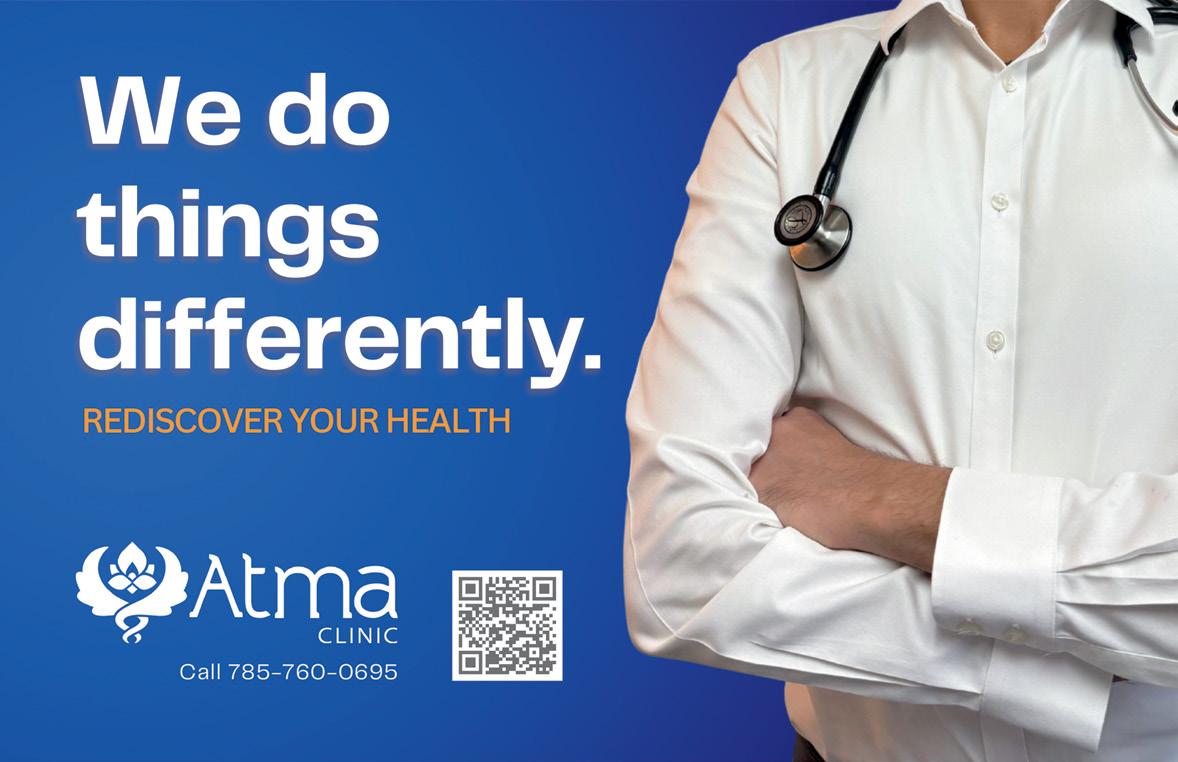

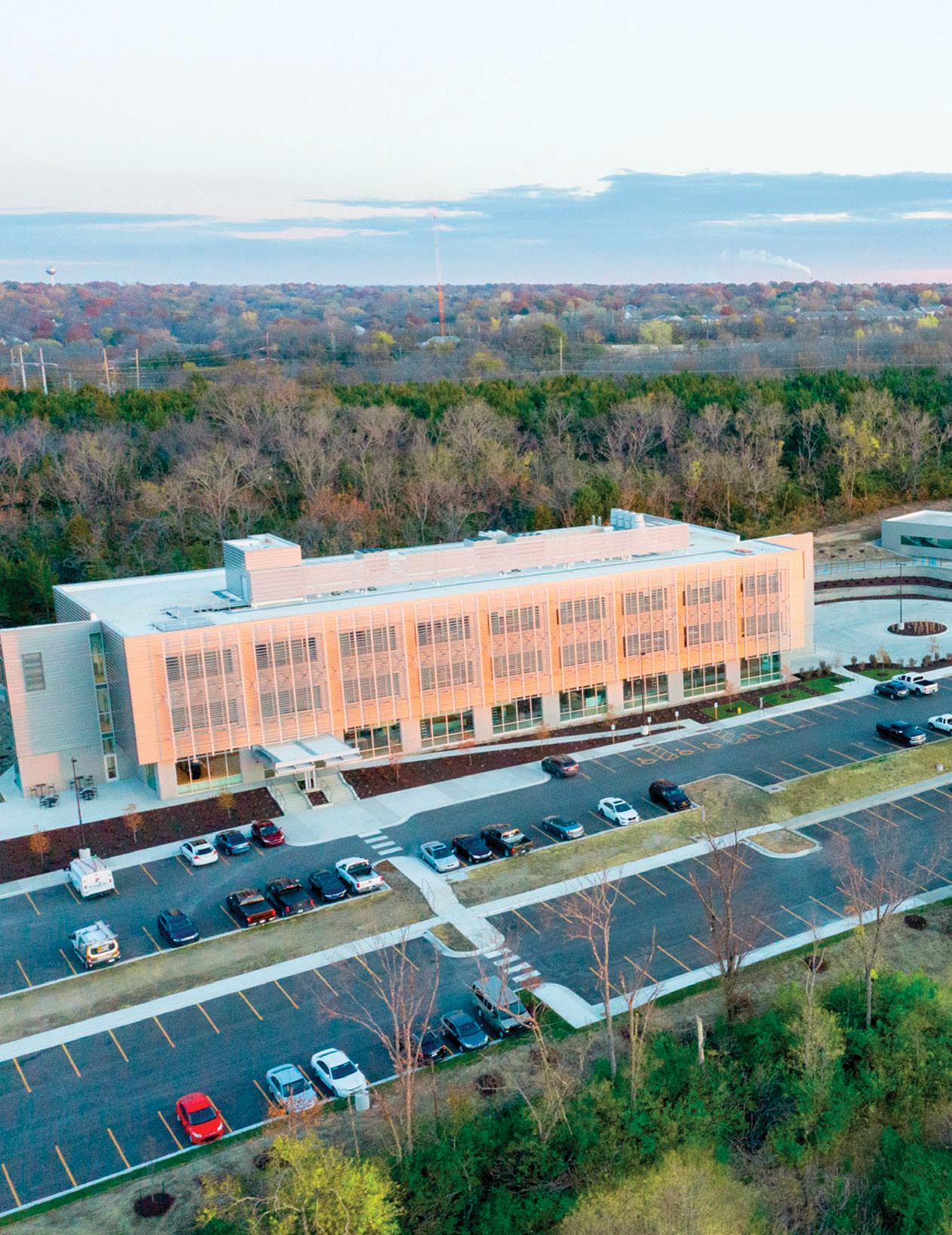
Variety and diversity increase the possibility of success and fuel the bioscience and technology industries booming in Lawrence.
by
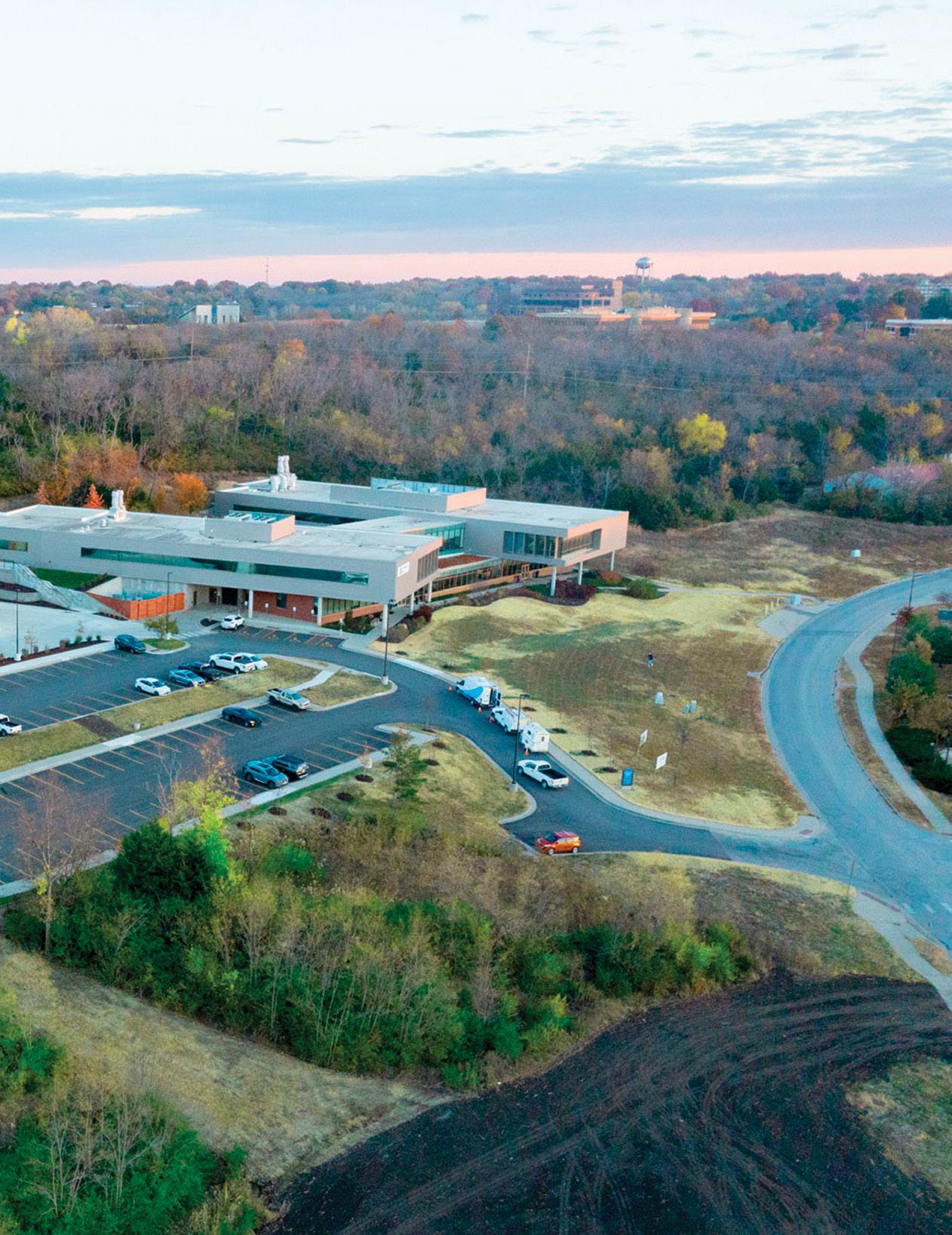
16 TO 19. 3% GROWTH IN TECH WORKERS PER CAPITA FROM 2019-2020
In 1605, Spanish author Miguel de Cervantes Saavedra wrote the novel “Don Quixote,” exploring tensions between idealism and materialism. He wrote, “… it is the part of wise men to preserve themselves to-day for to-morrow, and not risk all in one day … .” This quote combined with an old Italian proverb was later translated as, “Don’t put all your eggs in one basket.” Other ways to say the same thing: “Don’t put all your marbles in one jar,” or “Don’t bet on one horse.” An even earlier version in the Old Testament with a similar meaning is written, “Divide your portion to seven, or even to eight, for you do not know what misfortune may occur on the earth.”
Most likely your financial planner has recommended at some point that you should diversify your portfolio. All of these analogies are related in that it is considered wise to not put your hope and resources into a single venture, but to spread them out to increase the probability of success. There is strength in diversity, a concept that can certainly be applied to cities and regions.
We are fortunate in Lawrence to have a wide variety of businesses that provide different products and services for our community, as well as companies that offer their goods and services to quite literally the world. What are companies doing in Lawrence to maintain a healthy economy? How are the businesses in our town creating new opportunities for economic growth? What organizations help support current businesses and are looking to grow in our community or draw new businesses to the area?
One sector in which our community is really growing is bioscience and technology, creating an influx of new tech workers to Lawrence. According to Brooking Institution and the U.S. Census Bureau, as well as reports by Axios and Nucamp, Lawrence, Kansas, had a 16 to 19.3 percent growth in percentage of tech workers per capita from 2019–2020, which was the highest in tech workers per capita. Jaime Gassmann, part of the Lawrence Tech Guild, a grassroots organization that brings tech workers together for social and networking events, says through a combination of factors including COVID-19, remote work has become a viable situation and has caused a trend toward “reverse brain drain,” a concept where human capital moves in reverse from a more developed area to a less developed area that is developing rapidly. Essentially, highly talented individuals who graduated from The University of Kansas (KU) who would have loved to stay in Lawrence early on ended up moving to other tech hub cities to find work. Because of the switch to remote work allowing them to work anywhere they desire, many have chosen to return and make Lawrence their home base.
Adam Courtney-CEO KUIP
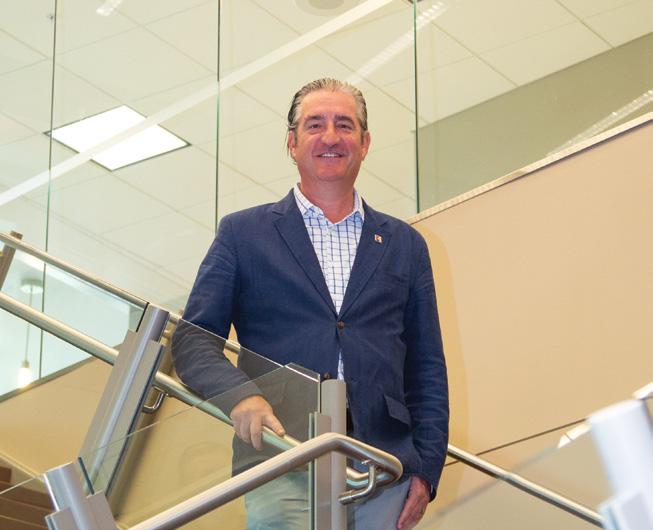
Another driving factor in tech workers moving to Lawrence is growth from tech companies choosing to move or create a startup business here. One of those companies is KU Innovation Park (KUIP). The mission of KUIP is to “… create, recruit, grow and retain technology and bioscience businesses in northeast Kansas with the ultimate vision to build a more modern, resilient and diverse regional economy.” It is committed to innovation and economic development. The Park includes four founding partners based on a public-private partnership among the City of Lawrence, Douglas County, the Lawrence Chamber of Commerce and The University of Kansas. Through this unique model and the addition of many biotech- and technology-based businesses, the Park has been growing exponentially.
Adam Courtney, CEO and board president for KUIP, writes, “KU Innovation Park remains steadfast in its mission to support bioscience and technology companies, a focus that inherently diversifies the Lawrence and Douglas County economy. Rather than shifting directions, the Park has strategically expanded its impact by fostering a dynamic ecosystem where research-driven startups, scaling ventures and industry leaders all have a place.”
He says in keeping with the Park’s founding goal of supporting the bioscience and technology industries, the Park attracts startups and companies alike with high-growth, highwage potential. “This specialization strengthens the local economy and broadens opportunities for talent development, investment and commercialization of research coming out of the University of Kansas.”
KUIP has been expanding rapidly but thoughtfully. Courtney reveals that, “The Park has evolved by scaling our capacity to support more companies, from early stage startups to established firms.” He says over the past decade, the Park has added 47 companies to its system, growing from 27 in 2014 to 74 at the end of 2024. In 2014, Park companies employed


111 people. At the end of 2024, that number was 750. And since 2014, the total annual payroll of Park companies has increased from $7.2 million to $49.7 million, growth of over $42 million. “This evolution is reflected in the Park’s physical growth, too, with new facilities that increase access to specialized office and lab space,” he adds.
With expansion, there can be growing pains, whether a startup or a larger company. Companies might struggle with high operational costs, limited access to capital and the challenge of navigating commercialization. “The Park reduces these risks by offering state-of-the-art lab and office space, connecting companies with funding opportunities and facilitating collaborations with KU researchers and industry partners,” Courtney explains. “We’ve also increased our business support services and local investment opportunities by launching the Oread Angel Investors network.” These advancements have strengthened the local innovation economy, making Lawrence and Douglas County a more competitive hub for high-tech, high-growth industries.
KU Innovation Park provides much-needed support to local companies by design, Courtney continues. By providing specialized infrastructure, business support services and access to KU, the Park’s environment is meant to help bioscience and technology companies grow with fewer barriers to entry.
KUIP is committed to Lawrence and its partnerships, and will continue to build a resilient and healthy economy, as well as remain a competitive hub for high-growth businesses focused on bioscience and technology. “With the emergence of cybersecurity as a focus for KU, we are mirroring that emphasis through our Phase IV facility, which will include the Kansas National Security Innovation Center,” Courtney says.
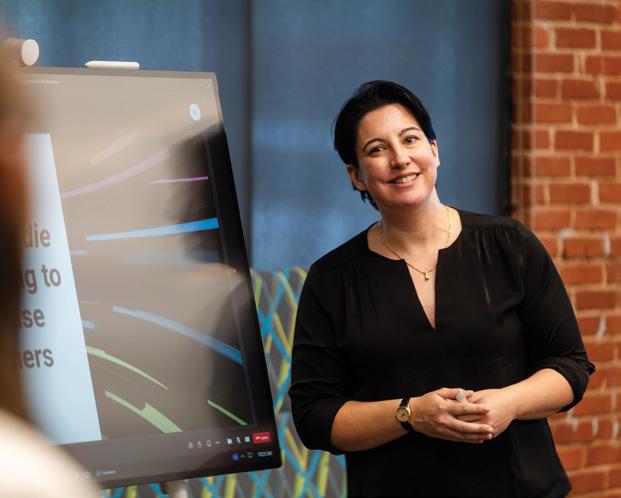
Lawrence Tech Guild is a group of individuals who work in the tech sector and have an interest in keeping their finger on the pulse of developing technology. Some simply want to hang out with other like-minded individuals. Jaime Gassmann describes it as, “a grassroots organization [that] has no structure, no bank account, and it is what people want it to be. It is a starting point where we make the connections. It is social, it is networking, and it is open to anyone who considers themselves a tech worker.”
Gassmann attended KU and, after moving away for work, ended up realizing along with many others that, “remote work freed us up to make the choice to be in a place we care about.” She chose to come back to Lawrence in 2022 as part of this arc of tech workers who came before her and many after. Some never had to leave because of new opportunities in town or remote work. When she moved back, Gassmann
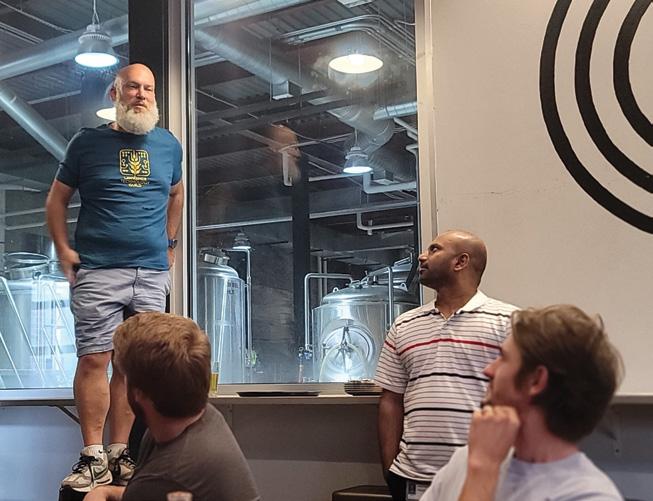
asked a friend where tech workers hung out after working from their spare rooms or houses. She found a Slack Channel of tech workers who were getting together and joined the group. She wondered what could be done to get this group even more connected, and in the summer of 2022, she helped set up a gathering after work. The Lawrence Chamber of Commerce heard about the group and wanted to help support it, so it paid for them to have beer and appetizers. The Lawrence Tech Guild has been meeting each month ever since.
Mike Silverman moved to Lawrence to attend The University of Kansas in 1992, got an internship and then a job in tech, and has stayed here ever since. He works as a quality assurance engineer for Matterport, a remote-only company based in Silicon Valley. “I helped start the Tech Guild because I felt that Lawrence needed its own informal way for those of us in the tech industry to connect with each other,” he says. “This
is the era of ‘work from home,’ plus Lawrence is often seen as merely a satellite for the KC metro. However, there’s a ton of cool folks in town in the technology industry—so many startups, entrepreneurs, folks working for companies large and small—and we are all kind of in our own worlds.” He describes tech in Lawrence as somewhat of an archipelago, folks on their own “islands” working remotely for a company located elsewhere or in a small team. “Connecting these folks is part of why the Guild exists. I also think because Lawrence is not seen from the outside as a ‘tech town’ that a lot of people, especially outside of tech, don’t realize what exists here.”
Gassmann believes Lawrence has an interesting and rich history for tech work, referencing local businessman Brian McClendon, who is known worldwide for his work on Google Maps, Google Earth, Local Search, Street View and Ground Truth, as well as being a tech venture investor and supporter of Lawrence. If you zoom in on Google Earth, it first takes you to Lawrence. After working in Silicon Valley, McClendon came back to Lawrence, is still working in tech and is leading the platform engineering groups at Niantic Inc. “He (McClendon) is one of 50 stories I could tell you of people who have done incredibly interesting things,” Gassmann says.
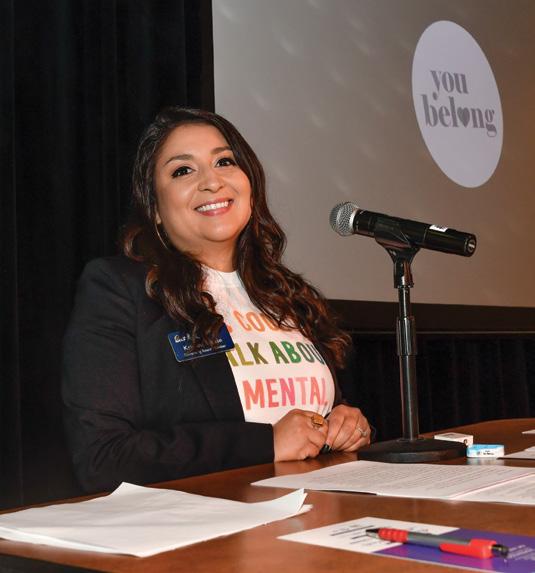
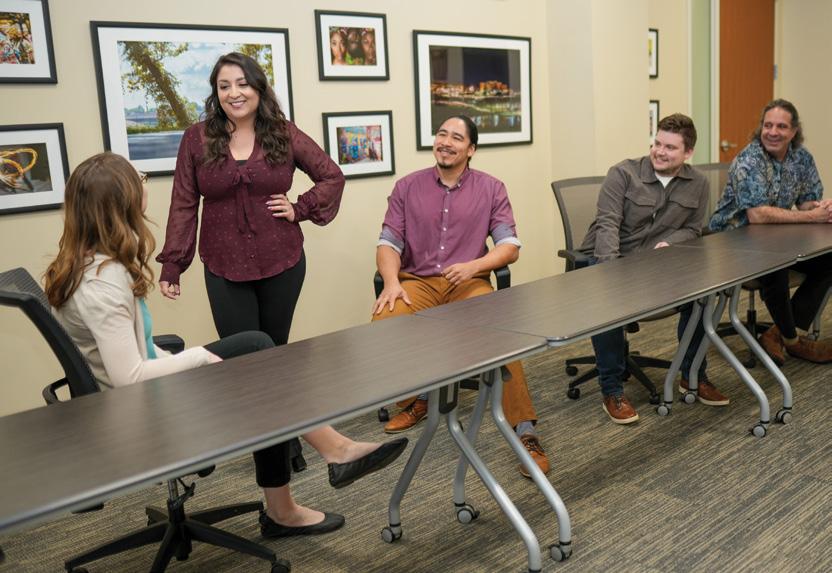
The KU Small Business Development Center (KUSBDC) is a huge asset to the Lawrence business community. Kristina Edwards is the regional director of the Center, which is based in Lawrence and also serves the surrounding communities, working with more than 500 businesses each year.
“At the KU Small Business Development Center, our mission is simple: Do great work and help people,” Edwards says. “Our core focus is one-on-one business advising, providing tailored guidance to meet the unique needs of each entrepreneur.” She believes their long-term commitment to the businesses they serve and their highly trained advisors set them apart as an organization. Its advising services are free and confidential. In addition, the professional “guidance is not based on anecdotal experience but on proven business strategies,” she adds.
“At KUSBDC, staying ahead of new trends and opportunities is a top priority,” Edwards continues. “Our role is not just to support small businesses today but to prepare them for the future
by equipping them with the latest insights, tools and resources to help them stay competitive. One of our biggest advantages is that we are part of a larger national network.”
In addition to working with a larger network, the KUSBDC “works closely with local, state and federal agencies to advocate for small businesses. Our partnerships with universities, including KU, strengthen business education and create opportunities for students to engage in real-world entrepreneurship,” she says. “Collaboration isn’t just something we do at the KU Small Business Development Center, it’s built into how we operate. We know that by tapping into our expertise, resources, and networks—locally, statewide and nationally—we can make a bigger impact on the businesses we serve. [It] is another key driver of our impact.”
Edwards believes our community should have a greater understanding of collaboration through the diverse population of businesses here leading to more solid economic growth. “We
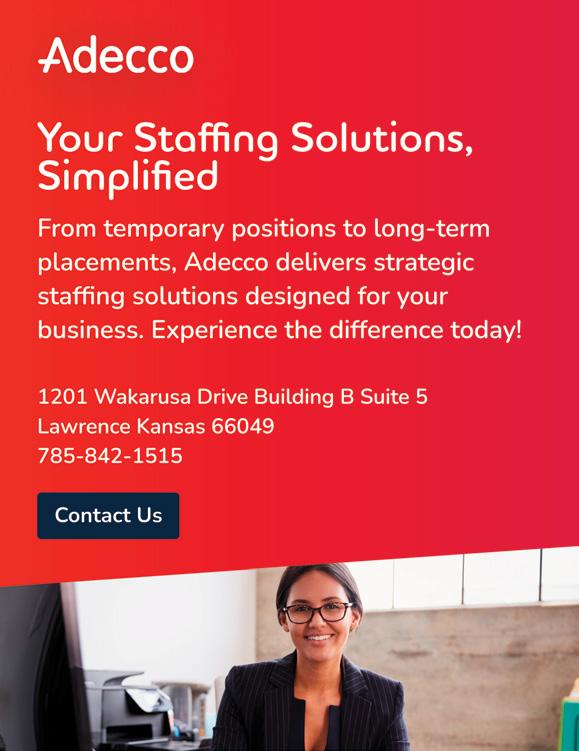
also helped lead the entrepreneurial listening session with Douglas County and other partners to better understand challenges local BIPOC [Black, Indigenous and People of Color] businesses face.”
KUSBDC has many collaborations with local entities, including KU programs such as KU MBA, Jayhawk Consulting and the KU Catalyst program. Local partners such as the Lawrence Chamber of Commerce support business growth and economic resilience. The partner list is quite extensive and includes Lawrence Public Schools; Lawrence Special Education Advisory Council; NetWork Kansas; Youth Entrepreneurship Challenge (YEC) Programming; Online Restaurant Academy (ORA); Douglas County Food Policy Council; Lawrence EDC Diversify Douglas County Loan Program; Lawrence Public Library; Ice House Entrepreneurial Training; Chamber of Commerce; Vocational Rehabilitation; Boots to Business; Veteran Business Outreach Center (VBOC); Boys & Girls Club; and other community-based nonprofit organizations.
Economic growth in a community is about people, diversity and using the necessary skills to create businesses as diverse as the community is. In our differences, we also can find commonality that allows us to focus on our work but also to support one another, providing an overall stronger community. p


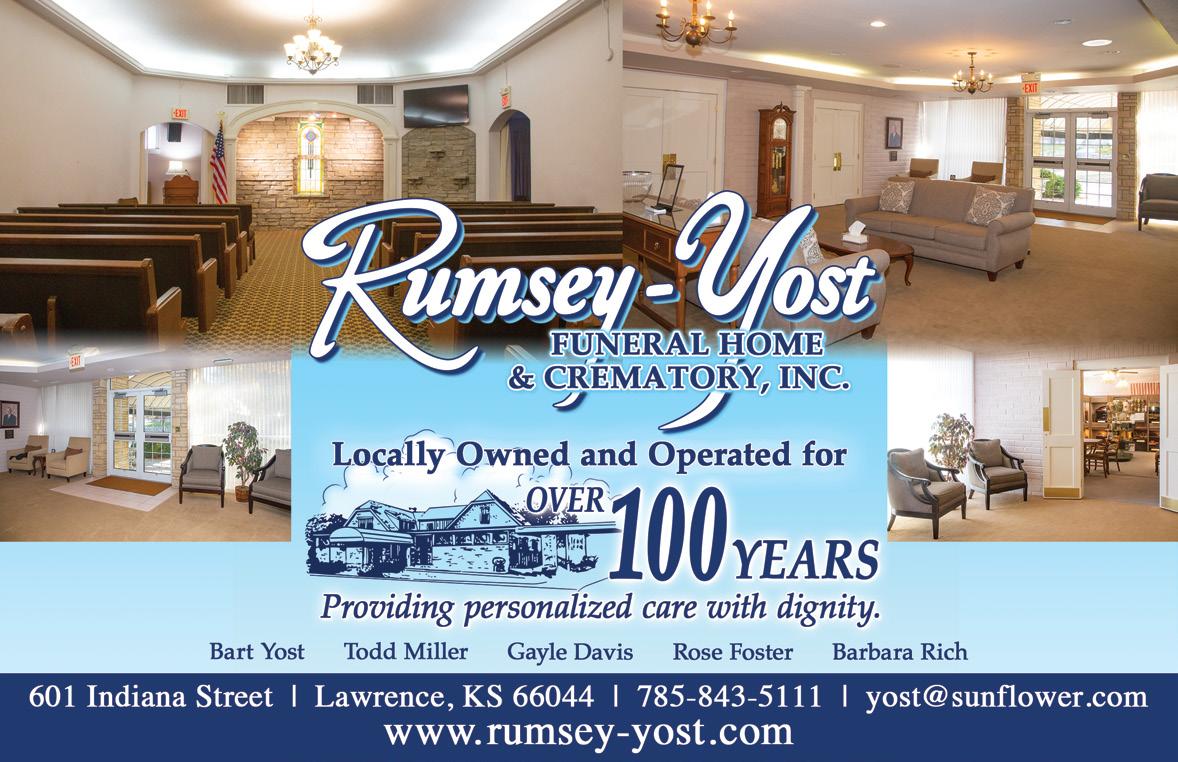
A steady workforce, reliable benefits and community support are essential to the success of local businesses in Lawrence.
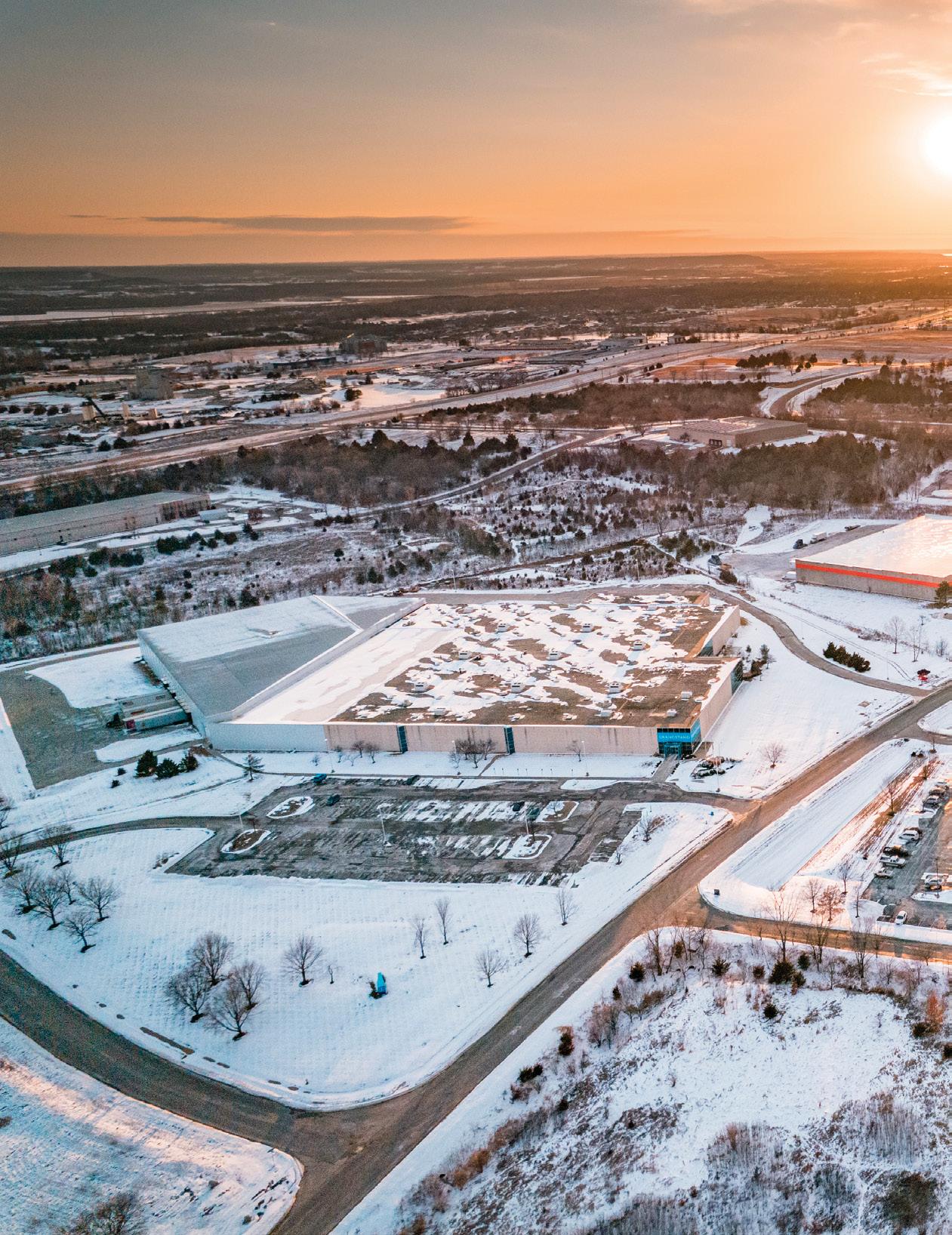
by
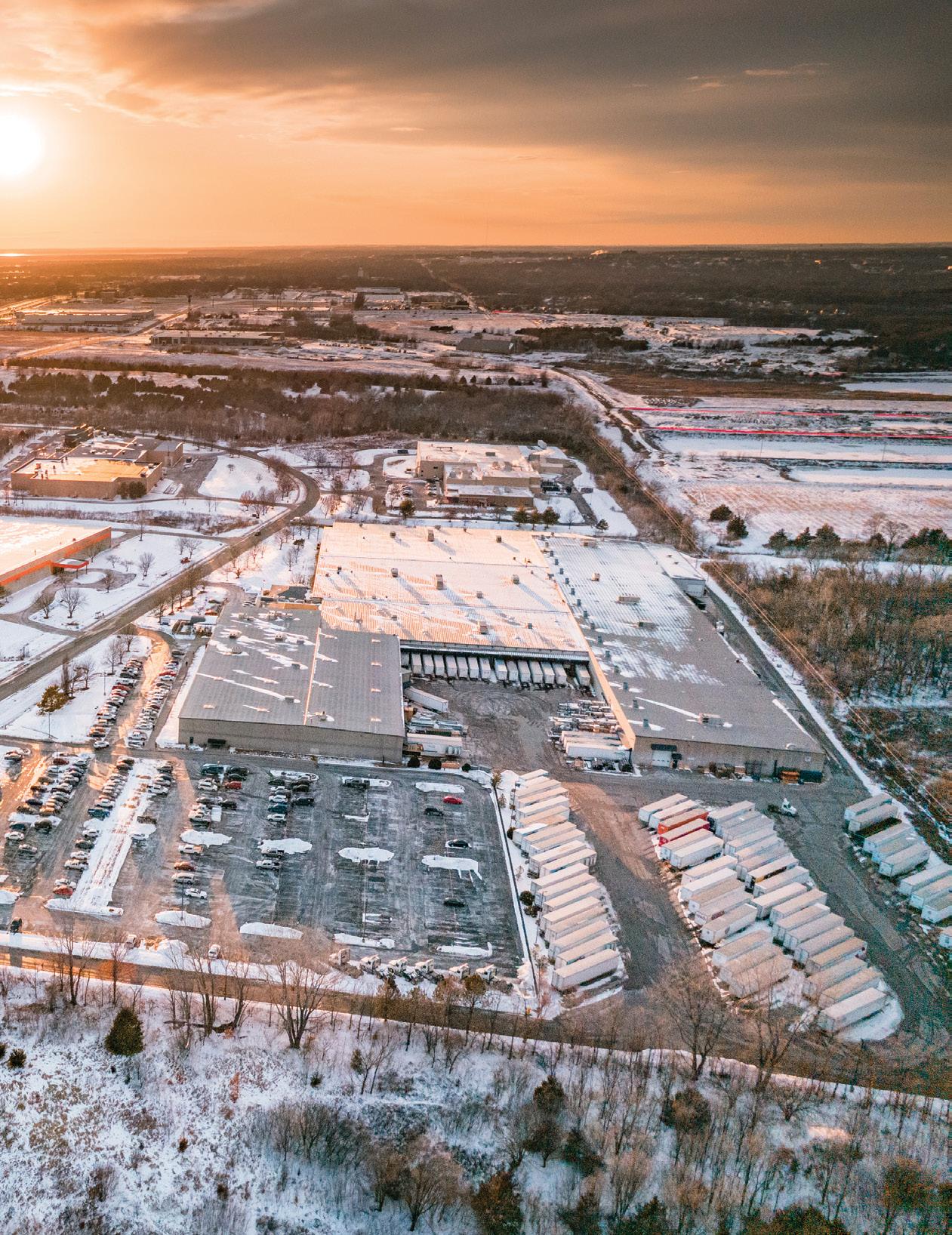
SMALL BUSINESSES OF 500 OR FEWER EMPLOYEES MAKE UP
99.9% OF ALL U.S. BUSINESSES
Local businesses are the backbone of any community and the stability of its economy. They want their communities to thrive and vice versa. A skilled workforce, a stable business environment, quality infrastructure, good quality of life, access to markets, a supportive local government—all are essential to maintaining a strong and stable community. But how do local businesses and communities work together to maintain that stability while also growing the economy?
According to the 2022 Forbes article “How Small Businesses Drive the American Economy,” by Martin Rowinski, former Forbes Business Council member, not only do small businesses provide more jobs, they also bring careers and opportunities. “Successful small businesses put money back into their local community through paychecks and taxes, which can support the creation of new small businesses and improve local public services. No matter how small it starts—one, two, five, 10 employees—within that town, the city or the county, your small business creates new economies where once there was nothing.”
Small businesses can also focus more energy on customers’ needs, which can make them more adaptable to change in times of economic uncertainty, he adds.
The U.S. Small Business Administration (SBA) statistics state that small businesses of 500 employees or fewer make up 99.9 percent of all U.S. businesses and 99.7 percent of firms with paid employees. Of the new jobs created in 2024, small businesses account for 64 percent. There are approximately
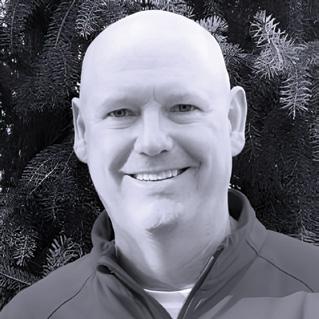
34,752,434 small businesses in the United States that employ 45.9 percent of American workers, or about 59 million people. Small businesses are 43.5 percent of the gross domestic product and pay 39 percent of all private sector payroll.
Needless to say, the American economy and its workforce depend on small businesses to thrive. But what do these businesses need to be successful within their communities?
For Chris Piper, president of Grandstand, that answer is easy: a trained and motivated workforce, competitive wages and an affordable cost of living. “Our focus is on the fundamentals of customer service and operations. A trained and motivated workforce is key to our expansion,” he explains.
Piper says the main hurdle the business faces is limited workforce because of the high cost of living and housing. “We can’t attract workers to an unsafe or expensive environment.”
Grandstand, which opened in 1988, began by printing water bottles and T-shirts, and grew into providing branding solutions and serving the craft beverage industry. It has worked with more than 17,000 craft breweries, distilleries, restaurants, corporations and businesses, currently working with more than 9,000. “Our vision is inspiring success through great people and constant improvement,” Piper explains.
He adds the company anticipates 5 percent growth in 2025, 10 percent in 2026 and 15 percent in 2027. With approximately 150 employees, he touts perks such as above-market wages, 100 percent coverage of single health care and an in-house gym with personal trainers as some of the benefits that his employees enjoy.
“Our vision is inspiring success through great people and constant improvement,” Piper says.
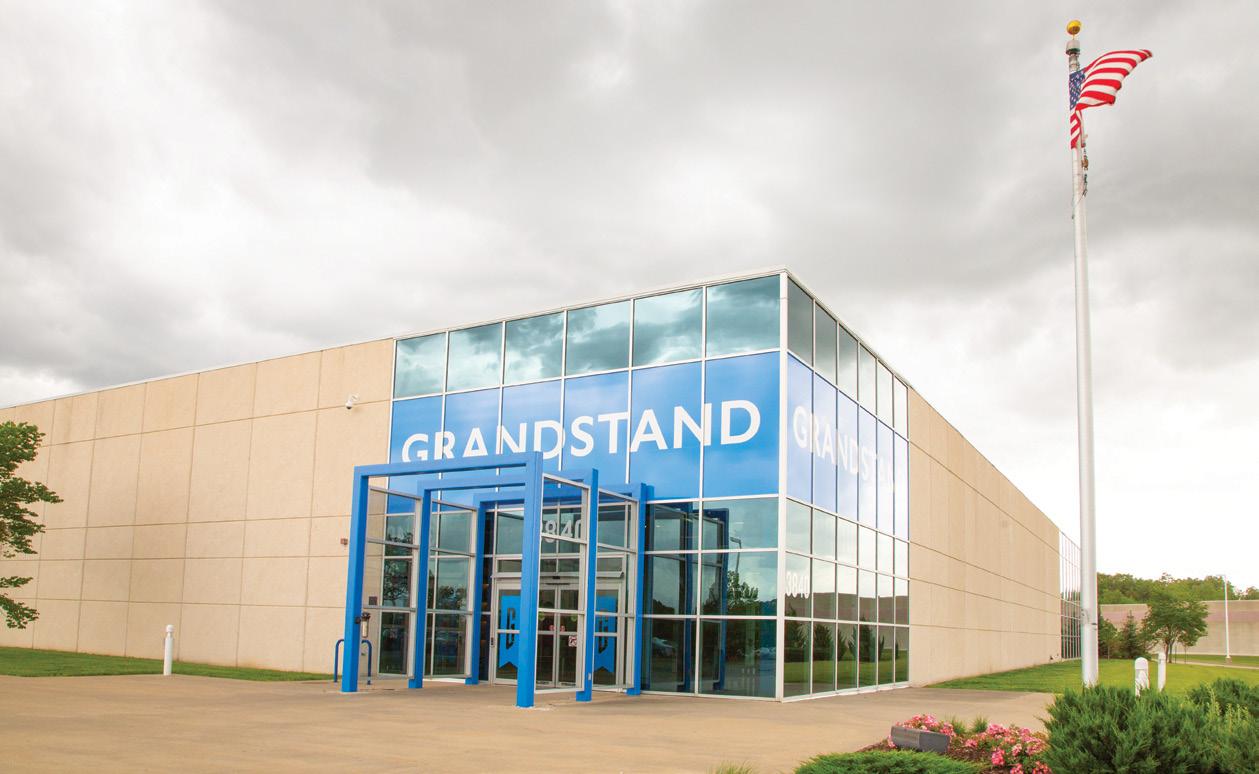

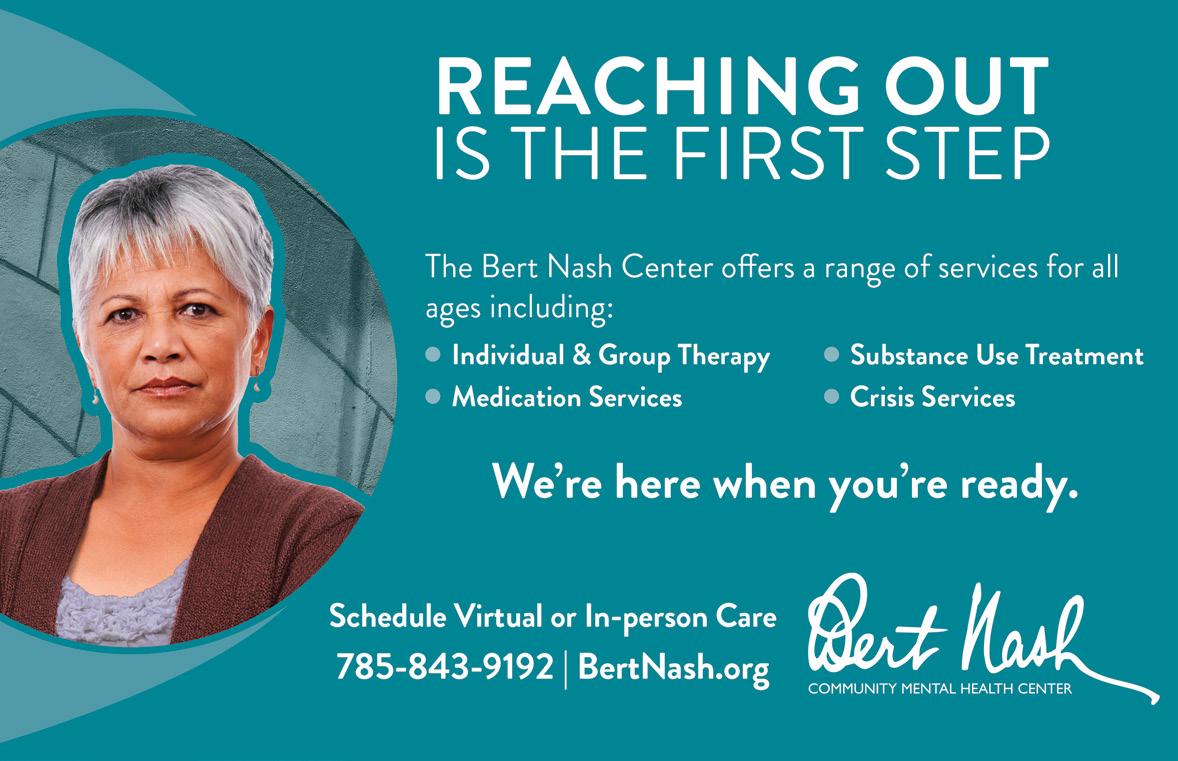
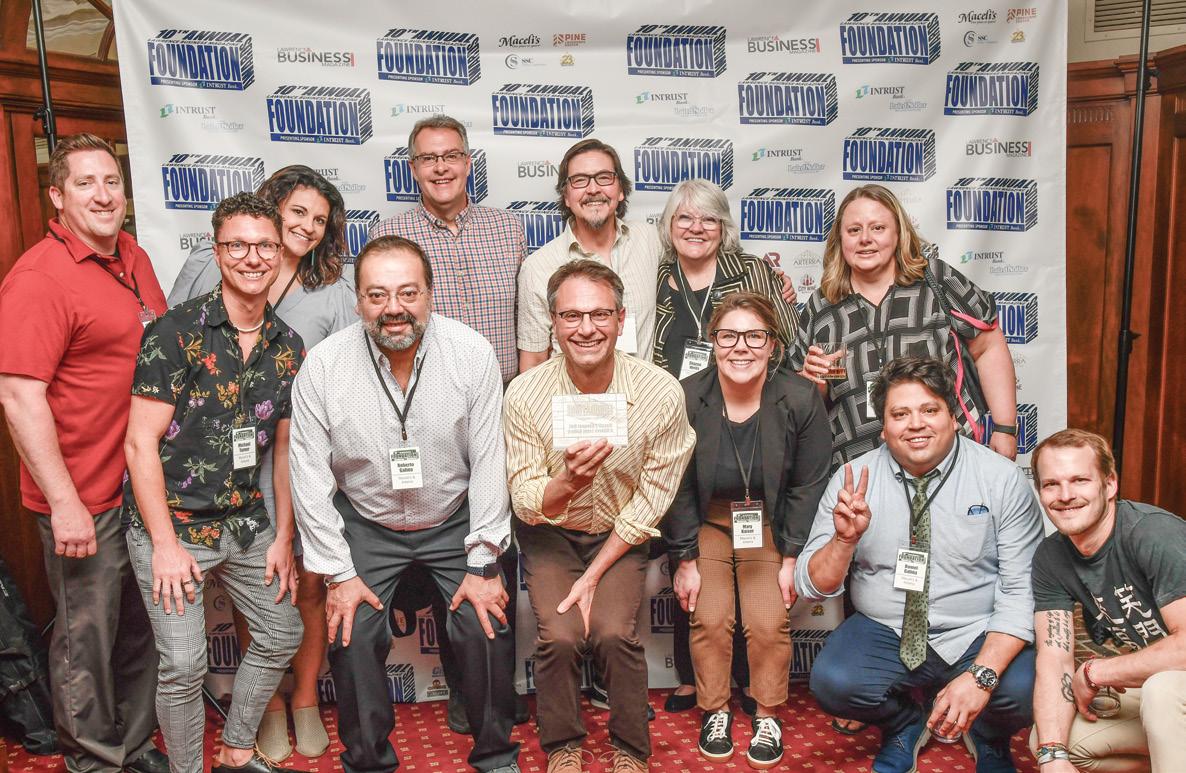
Maintaining a talented workforce is also a high priority for Stephen Maceli, owner of Maceli’s Banquet Hall & Catering, event specialists in Lawrence for nearly 30 years. “We are constantly growing, so we can continue to increase pay and benefits for our employees,” he explains. “I would like to believe that we pay above the local market average. Instead of having a few positions that pay extremely well and many that pay moderately, our strategy has been to pay most of our full-time employees well in the same pay range.”
With 15 full-time and 25 part-time employees, the biggest challenge the company faces is that it’s highly seasonal, so maintaining steady cash-flow and income is always a high priority, Maceli says. “Our town is highly influenced by KU [The University of Kansas] football and basketball. Football home games usually mean hotel prices are higher and [they are] full. This is problematic for folks wanting to have a fall wedding. So even though restaurants and hotels may be booming, event spaces may not be.”
To combat this challenge, he says his company is becoming more actively involved in community organizations and playing a greater role in the overall planning of fundraisers that occur in its venues. “We try to support our hospitality partners through promotion as well as through our joint efforts with the Lawrence Wedding Collective,” he adds.
Maceli says a little help from the City couldn’t hurt through more controlled increases in property taxes. “Such drastic increases wreak havoc on our businesses, because even if prices are increased, actual increases may not be fully implemented for months and or even years,” he explains.
Maceli’s offers two venues for hosting events of all sizes, event planning, catering and weekly curbside meals. “Not only do we help clients plan events, but we also execute them,” Maceli says.
Event coordination involves venue setup, wedding ceremony coordination, banquet/meal execution, audio visual operations, client management, cleaning the venue inside and out, as well as creating/adjusting lighting schemes, he adds.
Maceli credits the company employees hard work and dedication to it becoming the “high-profile success story that we are. Adapting is something that naturally happens, every day of the year. As I tell my staff regularly, every day is another opportunity to learn something new,” Maceli says.
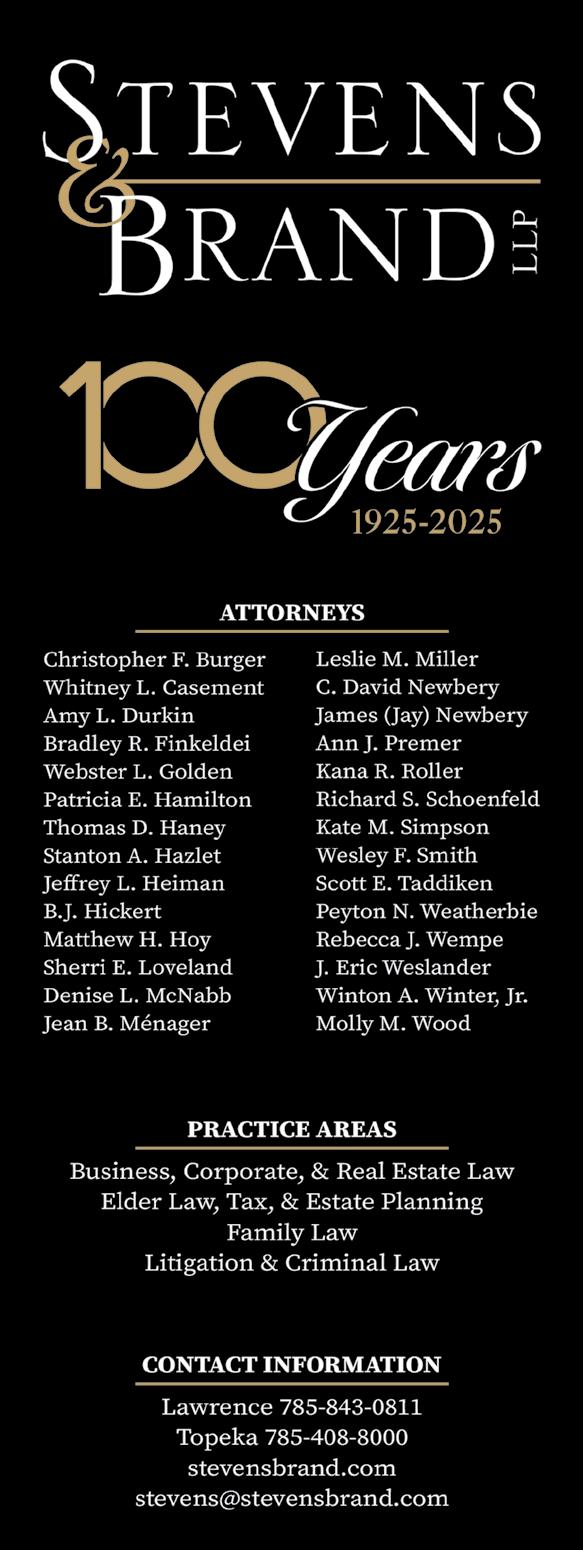


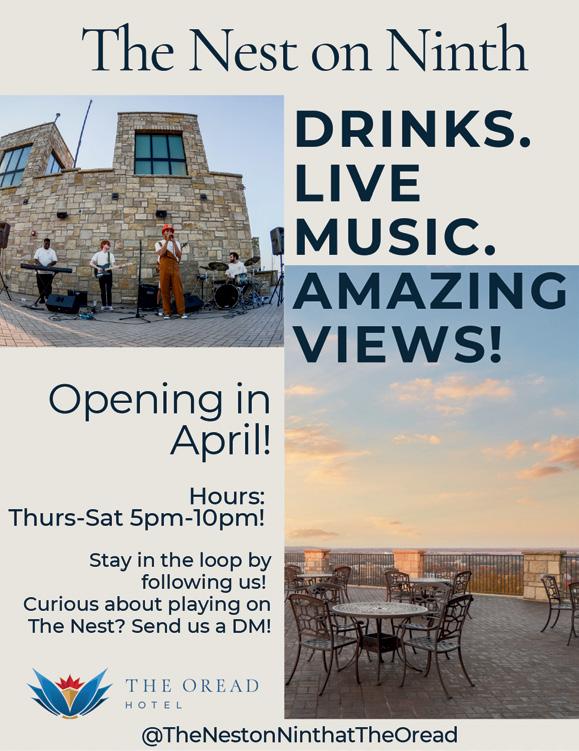
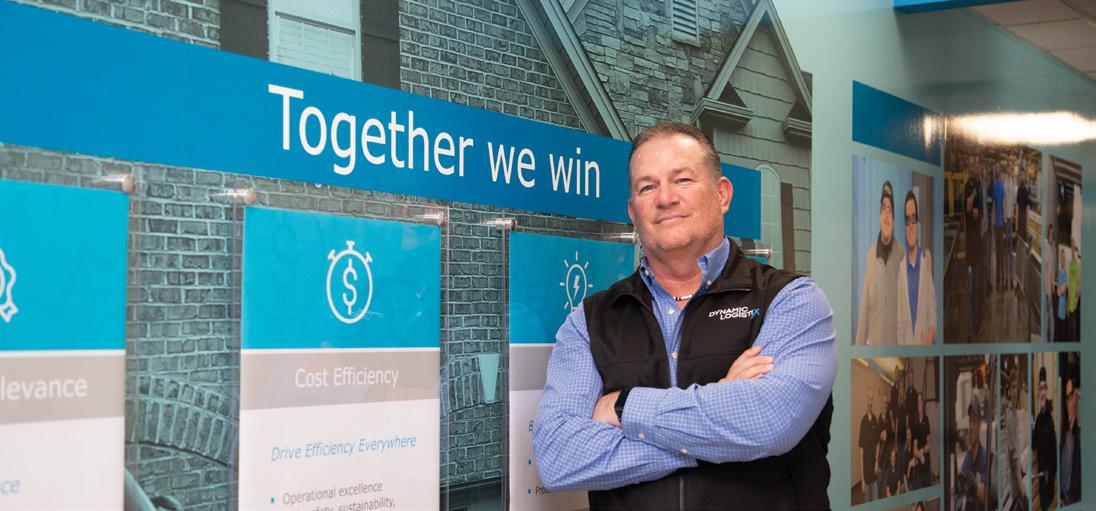
Having the most talented people working for the company is also at the top of the list for Mike Bernholtz, plant manager with Amarr, the third largest garage door company in the nation. Founded in 1951, the company specializes in design, manufacture and distribution for both commercial and residential markets.
Bernholtz explains that when he first started at Amarr in 2021, the turnover rate was approximately 50 percent but with the changes he’s implemented that relate directly to keeping his workforce happy, that rate has dropped to about 5.4 percent.
“We have a very good work/life balance here,” he says. “One of the things we had to realize is we have to adjust the way that we work to the way that workforce wants to work today. A lot of the changes we made to really assimilate people to our culture and how we want things.”
And adjust the company has.
With a goal to continue growing by 5 to 10 percent per year, Amarr has overhauled the way it maintains its workforce. Most importantly, it offers competitive wages and benefits.
“We pay well. We are and have been at the top as far as wages in Lawrence for manufacturing,” Bernholtz says. The company offers a 401(k) bonus program, which automatically puts 3 percent in for workers no matter if they participate, as well as weekly pay, a progressive wage scale, yearly raises, a pension and tuition assistance.
Flexible schedules are one of the things employees love most about Amarr. “Most of our schedules here, you work three days a week. That’s the lion’s share ... it’s compressed,” he says. Employees work three 12-hour shifts with a swing day on Saturday if work orders are done. And with perfect attendance, they get four hours of compensation pay. “So that gives me stable ops and them some money in their pocket,” Bernholtz adds.
Another important part of Amarr’s operation is training. The company’s close relationship with Peaslee Tech, a technical training center here in Lawrence, has helped in that regard. “We develop our team and our people here,” he says. “I don’t want to wait around to find good leaders. I think if we take the time and invest, we create the leadership that we want. That’s helped us grow, but we’re also supporting local resources ... .” Amarr sends its leadership, supervisors and line leads to Peaslee for training. Other essential workers also take continuing education classes.
“It’s a great living. But people don’t know that,” Bernholtz explains. “They can’t see that because they’re not exposed to it. They all think they have to go to college. Why not help them, shape them and show them some opportunities? We offer careers here.”
He wants people to understand that manufacturing and other trades, like welding and maintenance, are really good career paths. “Because let’s face it, college isn’t for everybody,” he adds.
Amarr also offers many other perks to its employees in an effort to keep the best workers.
An onsite nurse can do well checks and blood draws, and order prescriptions—all right from the workplace. The company partners with local restaurants that park food trucks outside of the business so employees have a diverse array of lunch options daily. “Employees love it, but we’re also supporting the community,” Bernholtz says.
Another important benefit Amarr offers is child care. The company partners with the City and the Chamber of Commerce on 24-hour child care facilities, where employees can leave their children during the workday no matter what shift they work. Finding affordable daycare is hard, and even harder for night-shift workers, so Amarr subsidizes child care funding for its workers and takes the cost pretax directly out of workers’ paychecks. “Basically, we just take it out of the paycheck, so they quit worrying about paying their child care,” he explains.
Because it’s manufacturing, Amarr doesn’t have a lot of women in leadership, but changing that is a priority, Bernholtz says. “When I started out, I had one. Now I’ve got four in supervisory and leadership roles that we’ve put through training, he says. The company also offers seminars and classes to women on leadership, as well as some corporate-level connections so they can get into some of the bigger leadership roles. “So just a lot of different avenues and opportunities.”
Finally, comfort is big at Amarr. “It’s a different kind of job. It’s not a clean-room environment. They get to wear their favorite comfy jeans here and a T-shirt or sweatshirt with some steel toes and some glasses on,” he says. “You know, safety glasses and gloves. It’s just comfortable.”
The company plays music, so employees listen to different varieties of music while they’re working every day. They have massage chairs for break times. There’s foosball and other games onsite. “You know, the little things make the biggest difference,” Bernholtz says. Outdoor barbecue huts with grills are also available to employees. “Downtime is as important as our uptime, but I want them to feel valued. That’s the most important thing. We value the people that we have here. They’re our greatest assets.”
He believes there are some good opportunities for Amarr to grow in the future. “So that’s really my goal, is to grow the business enough that we’re forced to build,” Bernholtz explains, saying the company has an opportunity to expand here in Lawrence if it continues at the pace it’s at now. “There are some really good opportunities for us to grow and consolidate, and to further add more jobs to the community.
“It’s a team effort here,” he continues. “I think that’s the most important thing to say. We’re giving people opportunities to have a good life and make a good living.”
Maintaining a strong workforce is important to any town, and it’s extremely important in keeping businesses running at their prime. In Lawrence, most local businesses know this and support one another along with the community to maintain longevity and growth. These local businesses— Amarr, Grandstand and Maceli’s—recognize the importance of this collaboration and embrace it within their businesses.
“One of the things I really value after being here is just the welcoming nature and the connection that I’ve been able to make with other local businesses,” Bernholtz says. “You’ve got the college here with KU, and it’s very attractive, the city has a lot to offer. It’s a beautiful, very quaint downtown. We are offering so many more things here now, and we bring a lot of big businesses here. The relationships with other businesses and companies have grown over the years, and we support them.” p
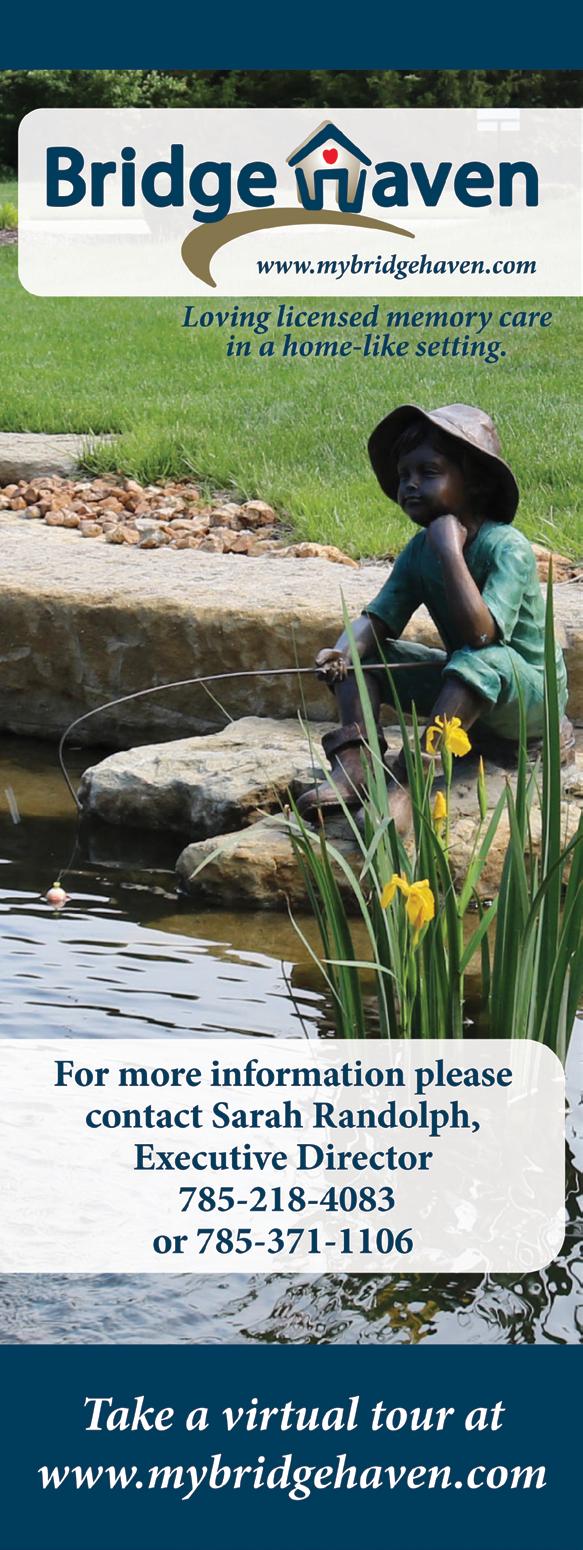
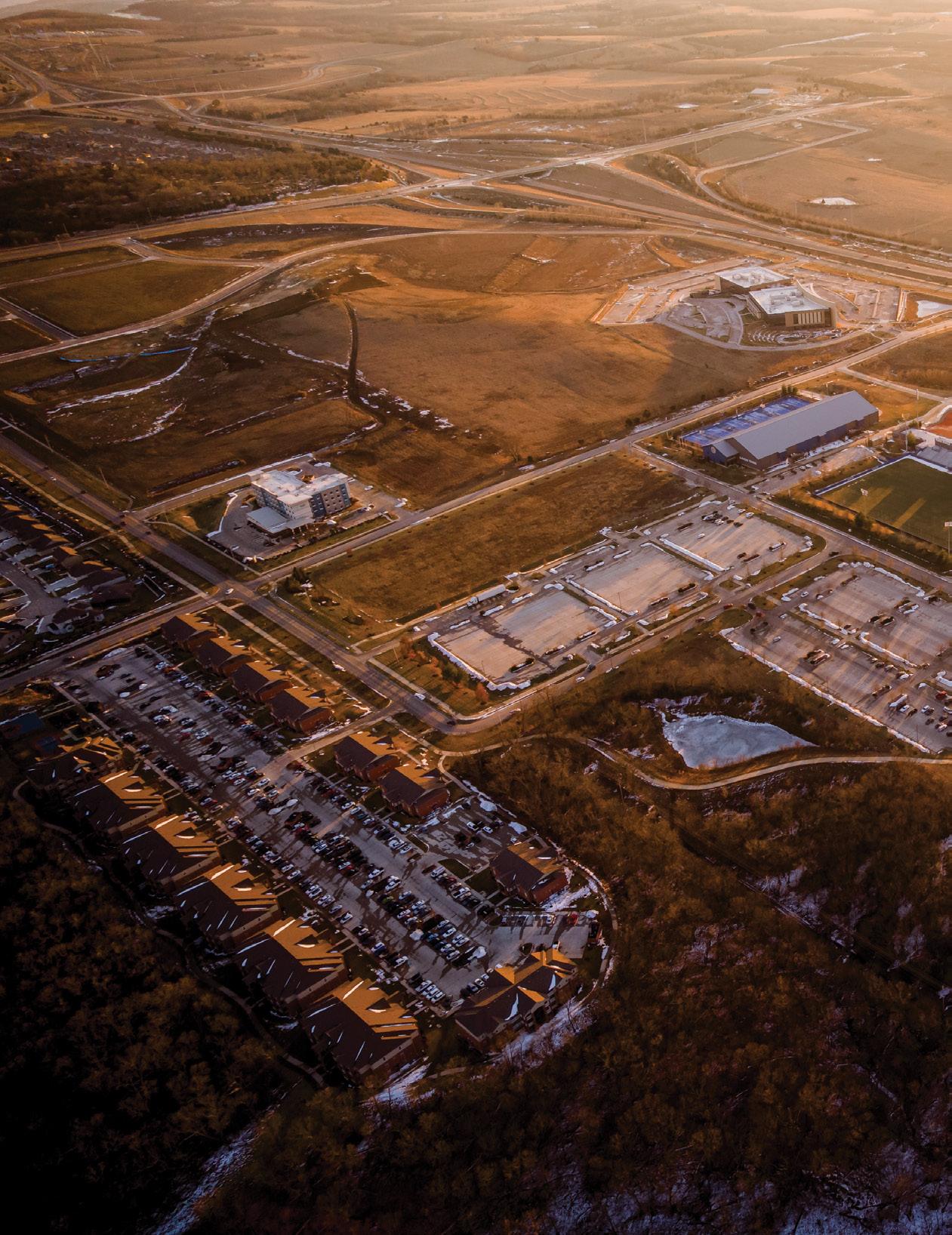
VISITORS SPENT
279.2 MILLION IN 2022 & 296.3 MILLION IN 2023
Bringing local, national and even international events to Lawrence and the surrounding areas is key to generating more revenue for the city while also supporting the arts, sports and culture of the community.
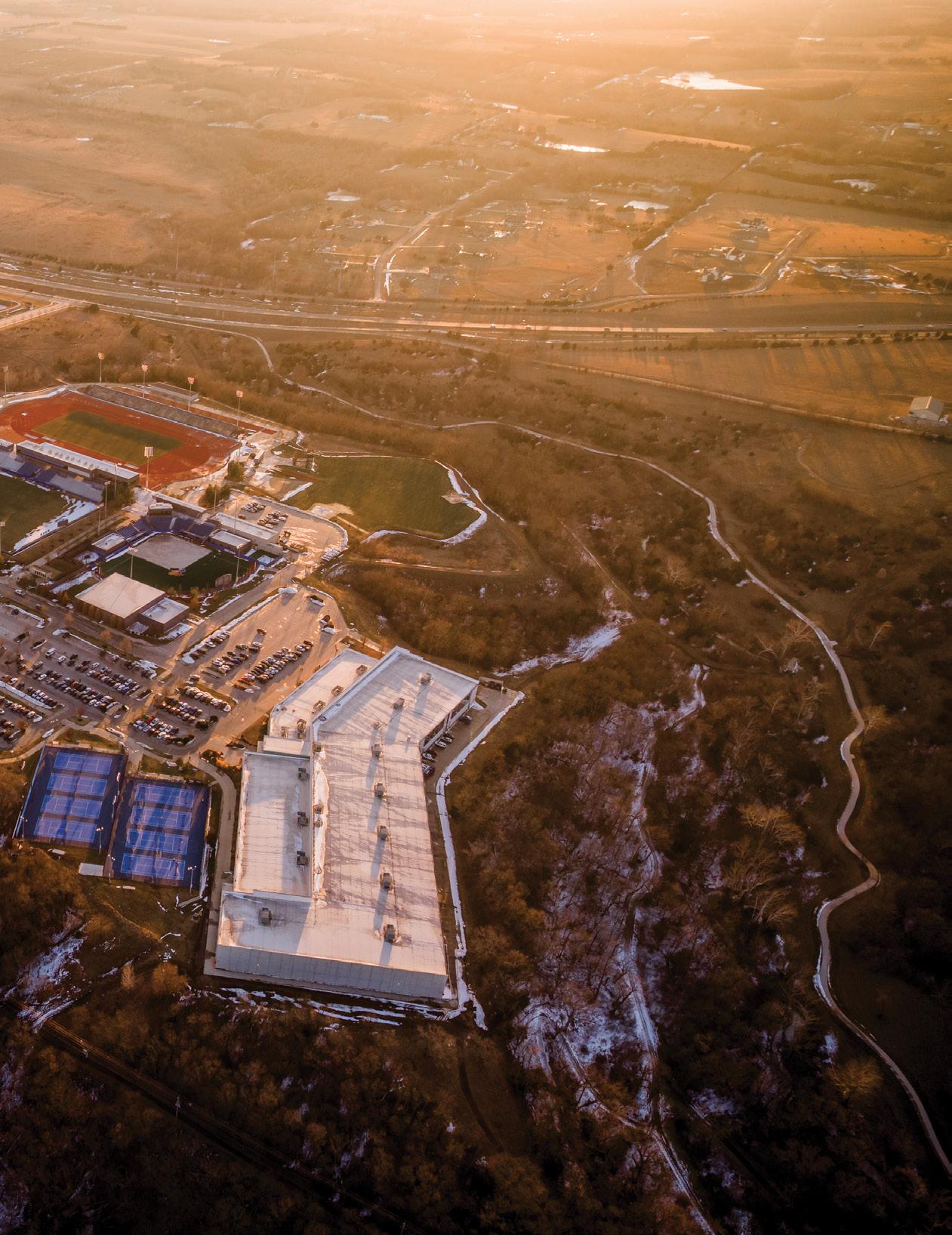
by Darin White,
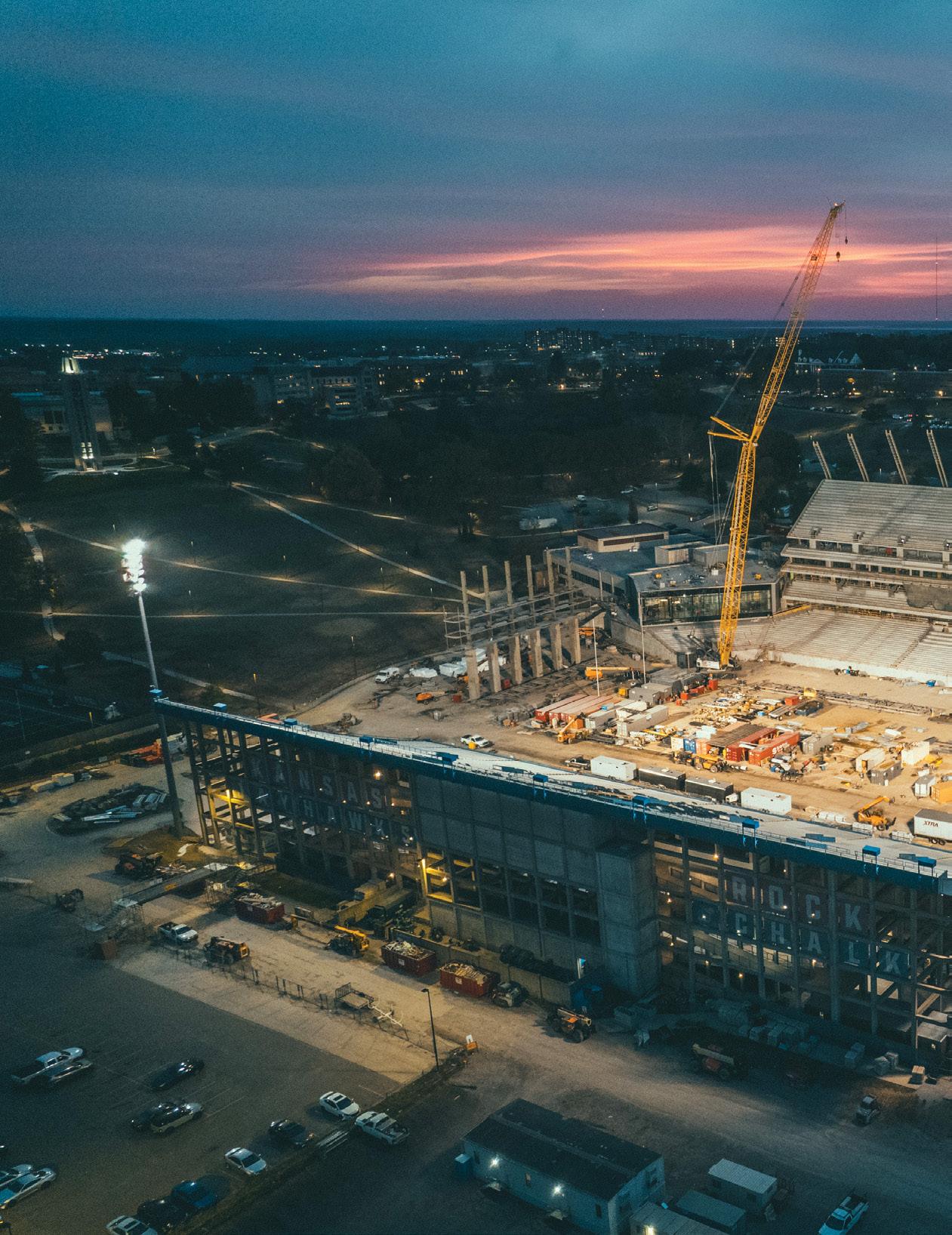
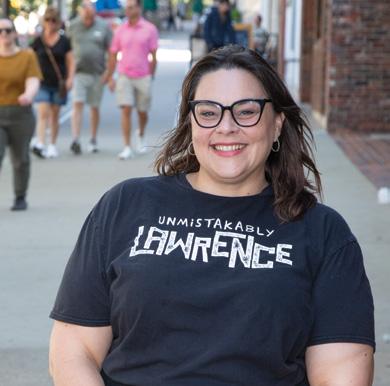
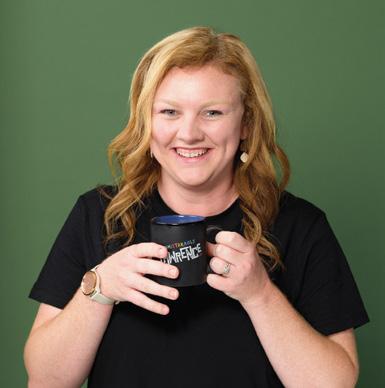
In the poem “Turning to One Another,” by Margaret J. Wheatley, she quips, “There is no greater power than a community discovering what it cares about.” A city is known for what it embraces, supports and promotes. These characteristics are a reflection of the culture of that community. A quick look around Lawrence shows that we are interested in events and activities of all kinds—sports, arts, culture, education, the outdoors. These types of activities define the character of our city and the community members who live in it.
The Parks, Recreation, Arts and Culture Department Assistant Director Porter Arneill writes, “Lawrence and the surrounding region have a strong appreciation for events, many of which generate revenue for the city through the Transient Guest Tax (TGT), sales tax or both. For context, by city ordinance, eXplore Lawrence serves as the official city agency responsible for promoting conventions, tourism and visitor activities in Lawrence. Its annual budget is determined by the city commission and funded through the city’s TGT fund. In addition to its operating budget, eXplore Lawrence also receives a budgeted bid fund, which provides incentives to attract events to Lawrence.”
While eXplore Lawrence primarily focuses on attracting visitors and boosting tourism, he continues, the newly renamed Parks, Recreation and Culture department (PRC) is “committed to serving residents while also supporting tourism-related events and progress indicators.” These indicators will help track progress to help realize the city commission’s vision for Lawrence.
An example of those indicators show that at of the end of 2024, 1.68 million people have visited or utilized a city recreation facility, recreation program, or Unmistakable Identity partner facility or program. Unmistakable Identity is one of five key focus areas that define the city’s work as part of its current strategic plan framework. The Lawrence City Commission adopted a resolution where the Parks, Recreation and Culture department has “taken the lead in championing the ‘Unmistakable Identity’ outcome,” Arneill says. “This outcome emphasizes that: ‘Lawrence is a welcoming community, synonymous with arts, diverse culture, fun and a quintessential downtown. City parks and community events contribute to the vibrancy experienced by all people in Lawrence.’ ”
As of December 2022, 81 percent of people say they are satisfied or very satisfied with the Unmistakable Identity criteria; 77 percent say they are satisfied or very satisfied with the amount of arts, cultural opportunities and related events; 65.7 percent of Black, Indigenous and People of Color (BIPOC) residents rate the community as welcoming; 40.7 percent of residents believe their culture is celebrated in the community (i.e. festivals, parades, events, etc.) with a target goal of 60%.
Funding for local events are supported in part through the Transient Guest Tax Grant program, renamed Unmistakable Events Grant Program in 2025, which provides competitive grants for many of our city’s unmistakable events. Historically, those have included both sporting events and cultural events. This year, 32 events were funded, totaling $150,000, through this program. Overall, $1,290,000 has been awarded to 195 events over 10 years.
Allison Calvin, director of marketing and communications at eXplore Lawrence, confirms the focus for visitors and tourism: “Our marketing strategy consists of campaigns to arts enthusiasts, live music lovers, outdoor adventure seekers, culinary lovers and history buffs. We also extend our reach into multiple states, spending our marketing dollars in high-performing markets to get visitation to Lawrence. We support a large variety of events by having targeted marketing campaigns for those events that bring in overnight guests. We also have an events calendar on our website and annual events-specific pages, and we promote events through Kansas Tourism.
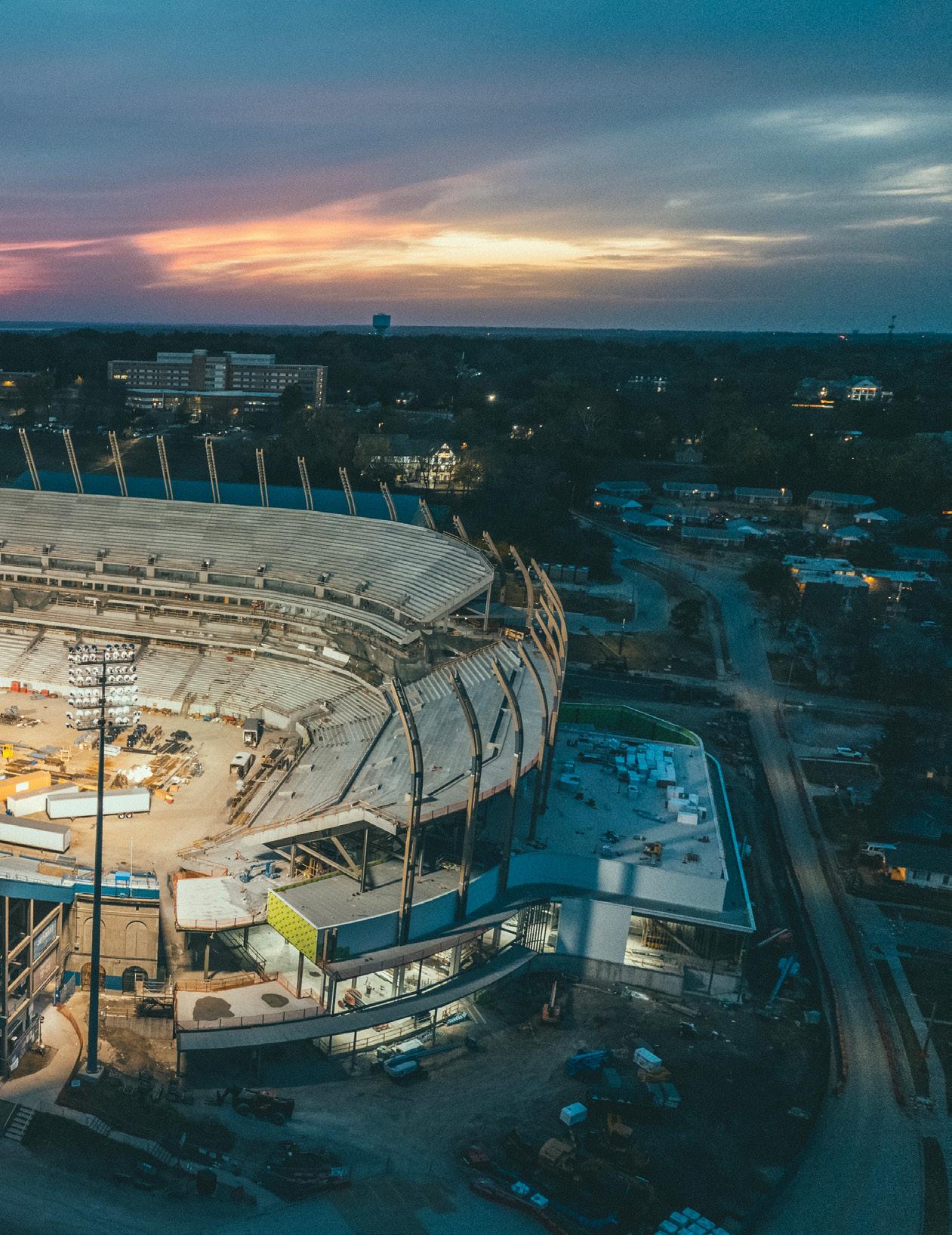
Visitors spent $279.2 million in 2022 and $296.3 million in 2023 in Douglas County. Visitor spending continued to experience steady growth in 2023, expanding 6 percent year-overyear. Recreation spending led with 15 percent spending growth. This was followed by lodging and food and beverage spending at 8 percent and 7 percent, respectively. This was followed by modest increases in retail and transportation, with 3 percent and 2 percent growth. (Data provided by eXplore Lawrence, WA Tourism Economic Impact Report)
A large portion of local residents and many visitors to the area, including tourists, take advantage of the 54 parks in Lawrence. One of these recreation facilities is Sports Pavilion Lawrence (SPL), also known as Rock Chalk Park. It includes joint land and facilities owned with The University of Kansas. “Sports Pavilion Lawrence is a key facility in this landscape, which is uniquely positioned both as a stand-alone venue and as part of Rock Chalk Park,” Arneill explains. While eXplore Lawrence assists with event bookings, marketing and hotel partnerships to drive tourism, as a city department, Parks, Recreation and Culture prioritizes resident satisfaction, cost recovery and community-centered programming in accord with its many programs and responsibilities.
Hosting sports tournaments at SPL drives a large portion of additional visitors to the venue. eXplore Lawrence reports that the SPL Heart of America Volleyball Tournament in 2024 brought in 1,600 in local traffic and 1,800 in visitors from more than 20 miles away. “With thoughtful planning and community investment, Lawrence will continue to stand out as an exceptional place to live, visit and play,” Arneill adds.
KU sports teams in a wide variety of sports, including football, basketball, baseball, volleyball and rowing, among others, have drawn fans, visitors and tourists to the area for years. Since James Naismith, inventor of basketball, brought the game to The University of Kansas in 1898, the games played at Allen Fieldhouse are a major event and tourism draw for local, regional and national fans of the Jayhawks and the game. Basketball’s “Original Rules” are now housed in the DeBruce Center adjoining the fieldhouse. Currently, the Jayhawks football program is in the midst of rebuilding the David Booth Kansas Memorial Stadium, including the adjacent Gateway Project, which is slated to be an event and retail district such as Lawrence has never seen. “The Gateway is a once-in-ageneration project to transform our campus and drive economic development throughout the region,” University of Kansas Chancellor Douglas A. Girod says.
Heather L. Blanck, KU chief procurement officer and director of strategic sourcing, says The Gateway Project will provide centralized space and amenities for events and is comprised of two distinct phases. Phase I, scheduled for completion in fall of 2025, will be the stadium’s west side and conference center, and is expected to initially host more than 140 events, potentially including trade shows, conferences, concerts, banquets/receptions, meetings, seminars and consumer shows. Phase II will boast a hotel, restaurant, retail spaces, offices, parking, student housing and a plaza. It is estimated 70,000 to 80,000 will attend over 200 events annually.
During the next 20 years, the project should generate $2 billion in net new direct spending, indirect and induced spending, as well as net new earnings of approximately $418 million and will support approximately 430 full-time equivalent jobs. Additional benefits include incremental sales tax to the City of Lawrence totaling $27.8 million over 20 years, with the county equivalent of $32.5 million over 20 years, Blanck explains, and increased property taxes of $8.5 million over 20 years for the city, county and state.
In 2027, The Gateway Project also plans to include a 162-key hotel to meet the anticipated demand created by events and activities at The Gateway site. “Once stabilized, The Gateway Project is expected to generate around 7,500 new hotel room nights annually at nonGateway hotels in Lawrence, along with an estimated $2.5 million in new Transient Guest Taxes,” she reports.
According to the economic impact analysis done by Hunden Partners for the University, “Lawrence enjoys a robust leisure market on the weekends, with visitors frequenting Massachusetts Street and securing weekend hotel reservations,” Blanck says. However, weekday visitation numbers in Lawrence tend to lag behind. “We anticipate that the influx of conferences and events will increase weekday visitors, providing a much-needed boost to local restaurants, retail establishments and hotels throughout the week.”
The success of The Gateway Project and the University’s goal to boost tourism in Lawrence depend on a strong partnership between the City, Lawrence businesses and the University, she continues. “We will need to work together to find ways to connect The Gateway visitors to restaurants, retail shops and our local hotels to deliver an Unmistakably Lawrence experience.”
Kim Anspach, executive director of eXplore Lawrence, expresses optimism for the project. “This visionary development holds the potential to invigorate the local economy by attracting a diverse range of visitors and events to our city, and strengthening our weekday room nights. The Gateway Project also fosters collaboration and strengthens the bond between the City of Lawrence and the vibrant campus community. The project paves the way for increased connection, knowledge exchange and shared growth by serving as a gateway between the town and gown.”
Blanck adds, “Our stated goal is to preserve and strengthen Lawrence’s status as one of the best college towns in the country.”
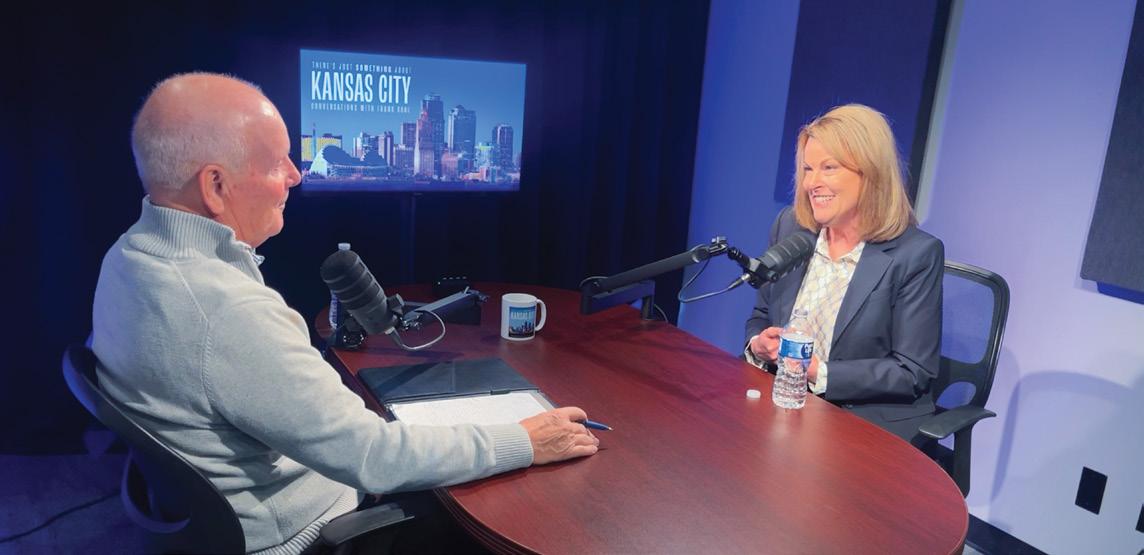
What event could bring in an estimated 5 billion viewers from across the world? The FIFA World Cup 26, of course.
With 3.5 billion fans in countries all over the world, soccer, known to many as football, is by far the most popular sport. The FIFA World Cup, the peak event for soccer, began in 1930 and is held every four years, 22 events thus far since its inception. The last FIFA World Cup event in 2022 in Doha, Qatar, had 5 billion viewers—1.5 billion for the final match. The last time the FIFA World Cup was hosted in the United States was in 1994. For the first time in 30 years, the World Cup will be played on American soil. In Kansas City, there will be a total of six matches in 26 days starting June 16, 2026, and concluding July 11, 2026. It will include four group stage matches, the round of 32 and the quarterfinal.
This upcoming event is expected to draw around half a million visitors to the region and 650,000 unique visitors. Around 80
percent of visitors are expected to arrive by air. The Destinations International Event Impact Calculator is estimating $653 million in direct spending from the FIFA World Cup.
KC2026 CEO Pam Kramer says, “... our team is looking to create measurable ripple effects well beyond that initial impact. Our board has set a goal of creating sustained and long-term cultural and economic impacts in our region, and will prioritize specific areas of focus from hosting the FIFA World Cup 26.”
In addition to national and regional travelers, there will also be a large portion of international tourists who are estimated to attend two matches and spend additional time in the area exploring and looking for activities that interest them in between the matches. FIFA projects the average international visitor will stay more than nine days, giving them even more time to enjoy our region and get to know all that the area has to offer.
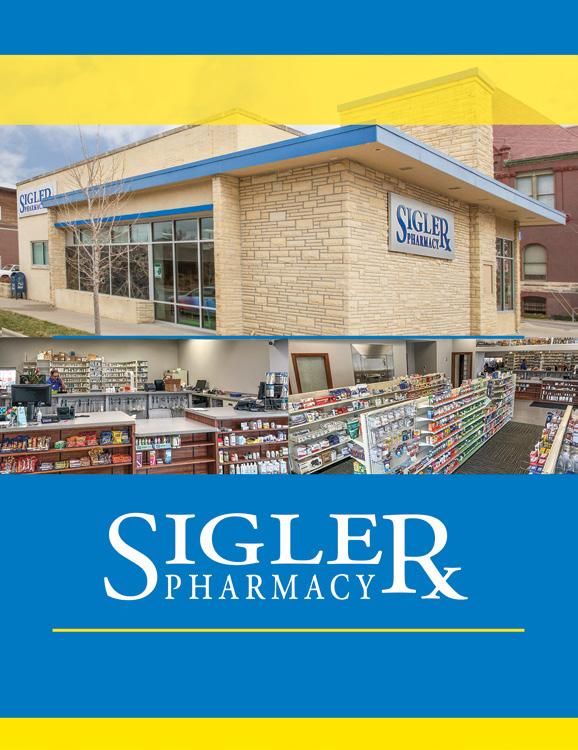


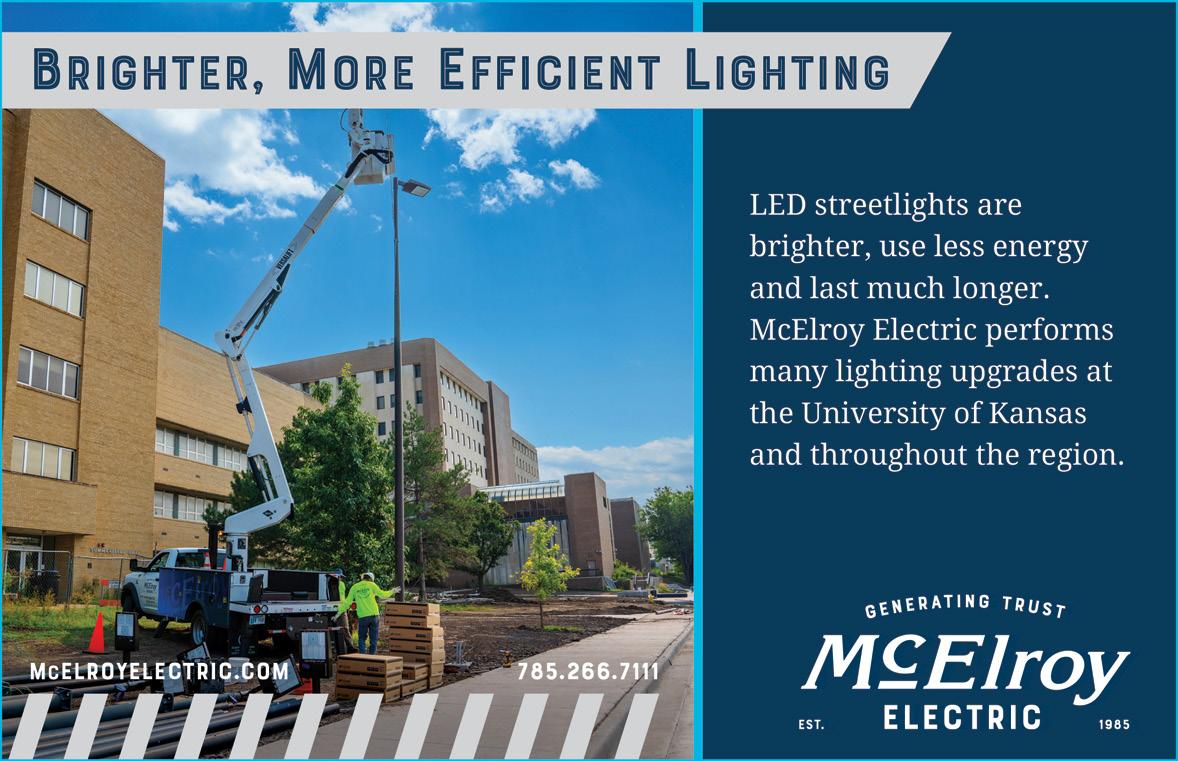



The team at eXplore Lawrence has been working with KC2026 to promote Lawrence for this event. In addition to collaborative promotion from inside the convention bureaus, tourism and visitor information will also be leveraged through the FIFA app, allowing this targeted market to plan their time tailored to their preferences and passions. Furthermore, the KC2026 team anticipates welcoming high-profile heads of state and Fortune 100 executives. “We will have an opportunity to tell the story of the talent in this region and strength of our workforce, while demonstrating the incentives for locating businesses in Kansas or Missouri. We are thinking of this as a foreign trade mission at home,” Kramer explains.
Kansas City is known as the “Soccer Capital of America” and has earned this reputation in the last 15 years through investing millions of dollars into infrastructure for both youth and professional sports facilities. This includes Children’s Mercy Park, the home of the professional soccer team Sporting Kansas City, which is located a short 20-minute drive from Lawrence on Interstate 70. Sporting KC won the Major League Soccer (MLS) Cup in 2013 and has won seven major championships in club history. In 2024, Kansas City’s National Women’s Soccer League team KC Current opened the first stadium, CPKC Stadium, purpose-built for women’s sports.
Kansas City has also become a regional leader in inclusive soccer facilities, welcoming the first outdoor power soccer court for wheelchair users in 2023. It also houses the only blind soccer field located in the Midwest, built in 2024. Kansas City has the largest soccer league and tournament in the United States—The Heartland Soccer Association.
Design and architecture firms in Kansas City have designed an impressive 10 of the 11 U.S. stadiums and 13 of the 16 stadiums where World Cup matches will be held in 2026. Lamar Hunt, the Kansas City Chiefs founder and owner, was involved in the founding of the MLS 1993 as part of the United States’ successful bid to host the 1994 FIFA World Cup.
Kramer says she has had personal experience with the World Cup and has a passion for Kansas City and the region. “It is hard not to get caught up in the magic of the World Cup,” she explains. “I was fortunate to attend all of the U.S. Men’s National Soccer Team matches and visit all nine host cities during the 1994 World Cup.”
While it was memorable to attend matches, another moment she recalls fondly was being swept up into a Brazilian fan dance and march. “It was like nothing else. I saw the potential for the World Cup to unite and energize people. I also care deeply about this region and want to do everything I can to make the most of this opportunity for all of us,” Kramer says.p

TIRE D? GAINING WE IGHT? LOSING LIBIDO? FOCUS AND DRIVE L ACKING? Come experience the movement we are creating to help you get back to the top of your game!

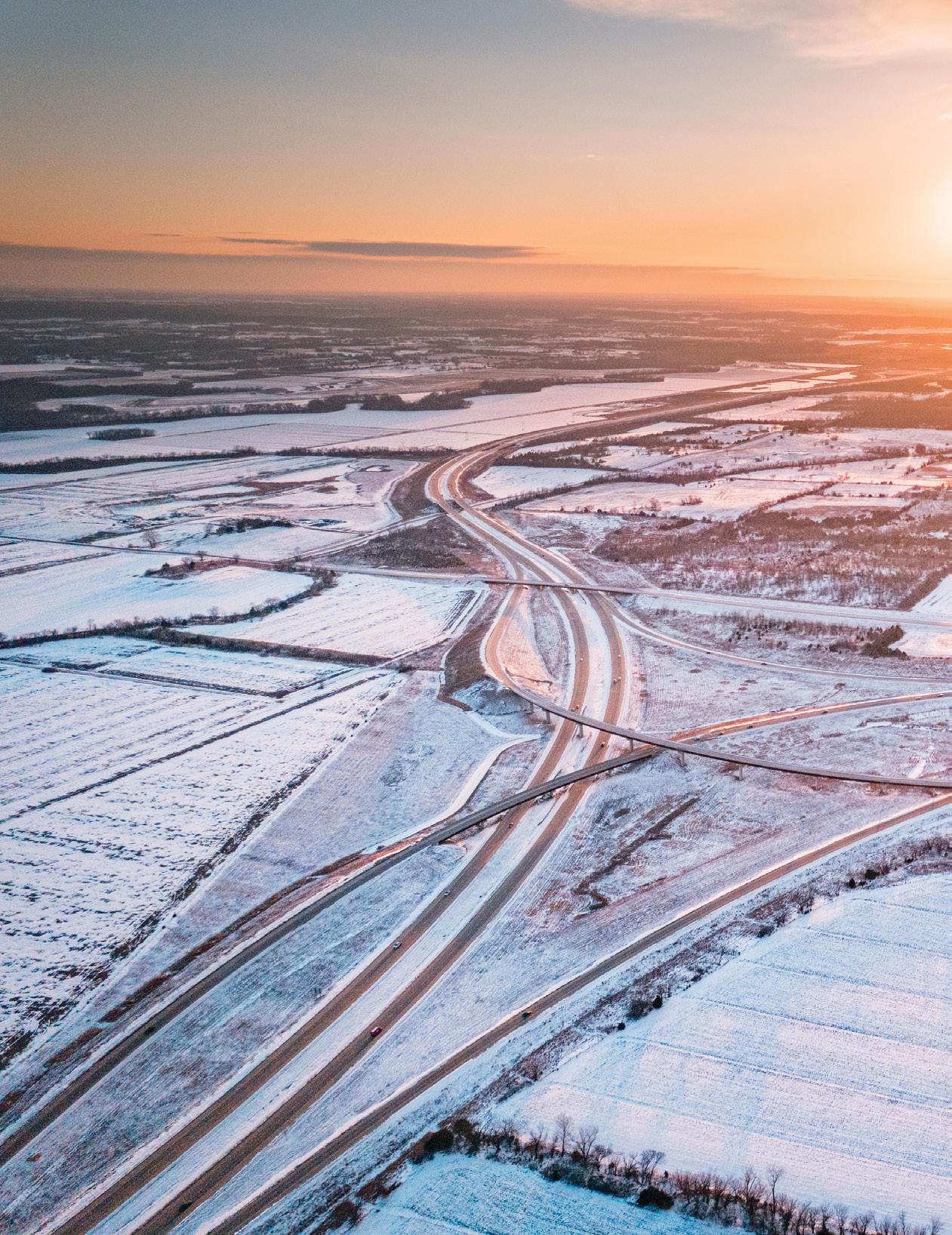
Bringing new companies to Lawrence is a joint effort among not only local entities but also many in the surrounding areas, including Kansas City.
by Bob Luder, aerial photography Marc Havener
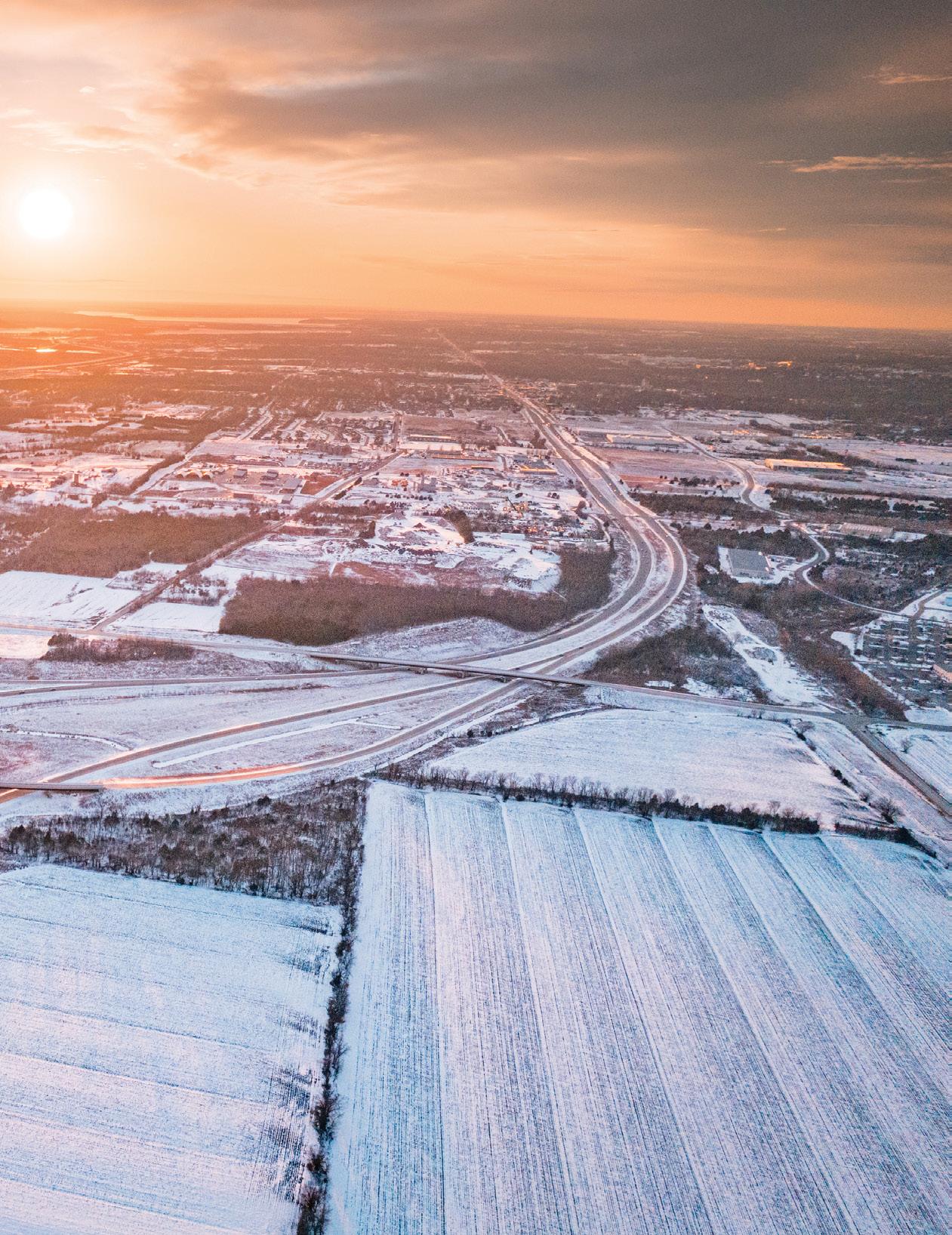
OVER THE PAST FIVE YEARS 2018 TO 2023
THE ENTIRE KANSAS CITY METRO POPULATION ( whiich includes douglas dounty ) 25 YEARS AND OLDER INCREASED
7.3 % THE POPULATION OF HIGHLY EDUCATED INDIVIDUALS HAS GROWN AT A MUCH FASTER RATE
20.2%
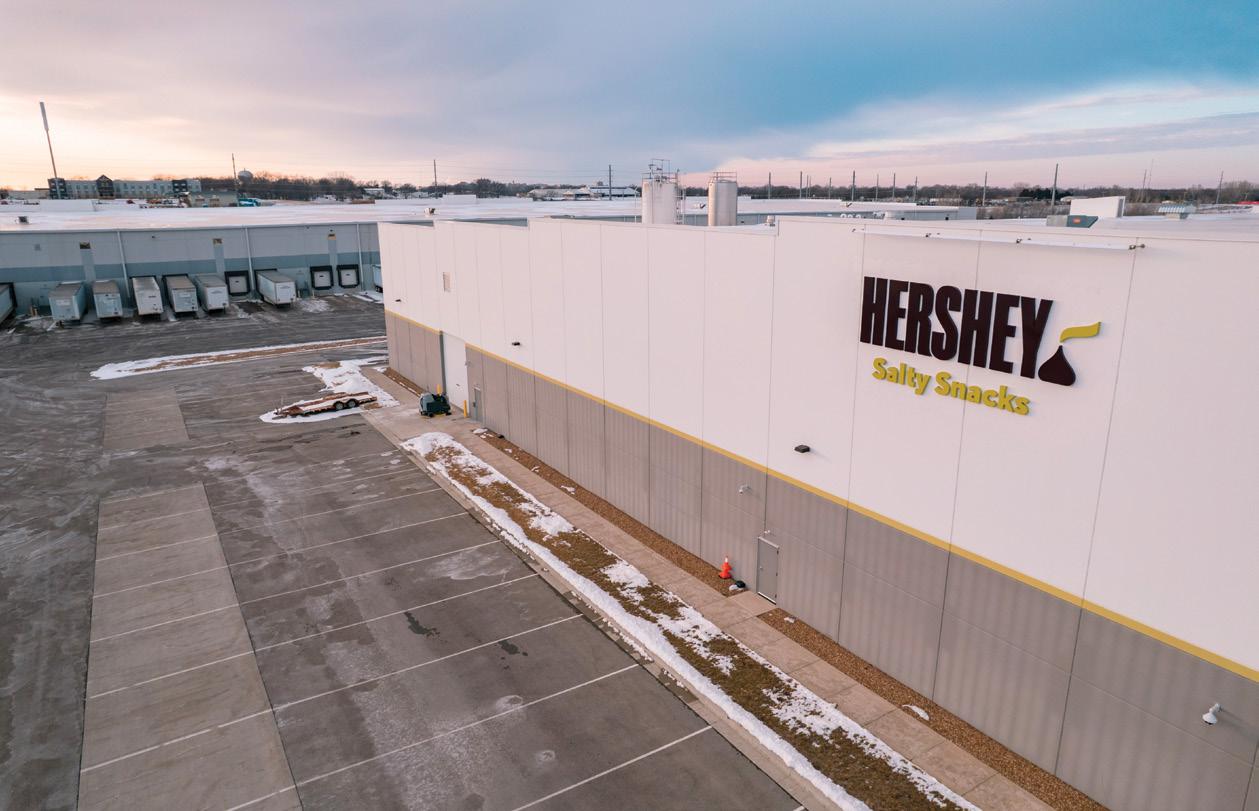
At least five days a week, hundreds, perhaps even thousands, of vehicles drive east on 23rd Street past the large, white Hershey Salty Snacks facility giving little thought to how it got there. Perhaps the powers that be at Pretzels Inc. several years ago simply saw a piece of land on the eastern edge of Lawrence and decided to plant a, well, plant there to manufacture its tasty varieties of Dot’s Pretzels.
Most likely, however, that wasn’t the case. Far from it. Before companies like The Hershey Co., Berry Global or U.S. Engineering select a site for a major multimillion-dollar facility, hundreds, if not thousands, of man-hours are put in. Entities ranging from local officials, state, even private, out-of-town organizations pore over factors and qualities of persuasion of a particular site, including available space, quality of workforce, logistics such as accessible highways, railways and airports, reliable utilities, culture and quality of life.
All information about what makes Lawrence an attractive location for economic development is gathered, organized and disseminated by some of the finest civic cheerleaders Lawrence, Douglas County and the surrounding areas have to offer. It begins locally with the Lawrence Chamber of Commerce and Economic Development Council of Lawrence and Douglas County (EDC), but there is plenty of input and work put in from agencies such as the Kansas Department of Commerce and even 50 miles east of town at the Kansas City Area Development Council (KCADC).
The Kansas Department of Commerce has a team of five business recruiters to Kansas nationwide, with offices in Chicago and on both coasts. When they get a lead on a company looking to locate or relocate to the central part of the country, they leap into action, serving as a conduit of communication between that company and local civic leaders.
The KCADC, headquartered in Kansas City’s iconic Union Station, is a private, not-for-profit organization charged with representing the economic interests of a two-state, 18-county Greater Kansas City region, which stretches as far north as St. Joseph, Missouri, as far east as Lexington, Missouri, as far south as Osawatomie, Kansas, and as far west as Topeka. Among the KCADC’s roles are promoting the region as a business and lifestyle location of choice, branding the region as a product to stimulate economic growth, attract new companies and talent to the area, and retain valued businesses already here.
Steve Kelly, vice president of economic development at the EDC and Lawrence Chamber, says the lifestyle qualities and business environment provided in Lawrence make it an attractive sell to any entity seeking relocation.
“I see so many people from around the state and country who came here to (The University of Kansas) and decided to stay,” Kelly says. “Lawrence has a lot of amenities that a lot of communities this size don’t have.”
It’s those amenities that Kelly, EDC and Chamber President and CEO Bonnie Lowe and their partners communicate to attract prospective businesses to the area.
“The biggest attraction we have going for us is the quality of life,” Kelly says. “Lawrence is a unique place.”
As home to the state’s largest university, The University of Kansas (KU), Lawrence is uniquely positioned to offer businesses from local, one-man startups to global giants advantages that are unique to communities its size. Most notable is a large, highly educated workforce.
“We have an incredible talent base,” Kelly says. “Very few places have a more educated talent base than Lawrence. Any company looking for a location … the first driver is talent. Then there’s training. Logistics, like accessibility to interstates, an international airport. And a mix of culture and lifestyle.”
Statistics provided by the U.S. Census Bureau, American Community Survey, 2023, show that while the entire Kansas City metro population 25 years and older has increased 7.3 percent over the past five years, the population of highly educated individuals has grown at a much faster rate, 20.2 percent. The region’s highly educated Gen Z population grew 17 percent since 2018.


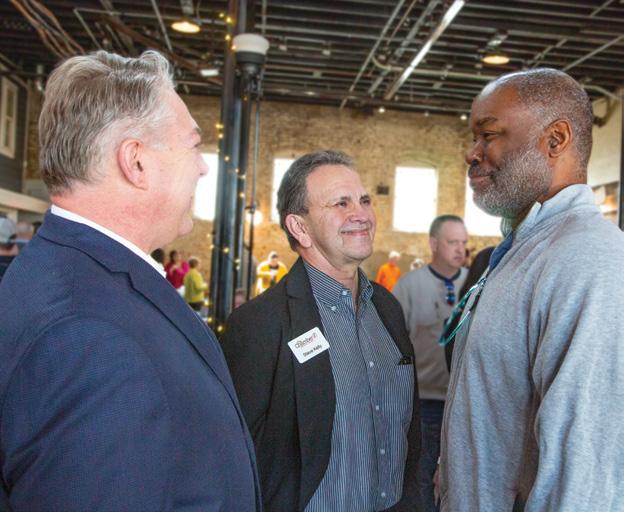
“To me, it’s a great place to be,” Kelly says. “The University is a big draw. Lawrence is a place where you can hire people, and they’ll stay.”
The U.S. Census Bureau population estimates for Kansas City, Missouri-Kansas, 2022–2023 show that the KC metro region was the top market in the Midwest in 2023 for net migration. Tim Cowden, president and CEO of the KCADC, stresses that Lawrence is a very big and important part of that 18-county, two-state region.
“Our customers don’t see those (state and county) lines,” Cowden says. “Our job is to make those lines go away and show companies what the region has to offer. Eliminate any interference and represent as one.
“The leadership of Lawrence and Douglas County have said we have our own identity, but we need to leverage being close to Kansas City,” he adds.
While business-to-business (B2B) is at the core of what the council does, Cowden continues, it also deals with businessto-consumer.
“Students in Lawrence are looking for a place like the Kansas City region to create a career and a life,” he says. “We show that this region is a great place to be.”
Cowden, who had one of his children matriculate at KU, says when he thinks of Lawrence, he thinks of “power of place.”
“Lawrence is a self-contained community,” he says. “The University is a big part of what distinguishes the community; it’s a big attribute. It builds a power of place around it. It’s a magnet for talent. When we bring people to Lawrence, they get it.”
Elli Houston, vice president at KC SmartPort, says that while the organization works directly with companies, “We want to directly understand what’s driving the site selection process.” She explains that 60 to 70 percent of its prospect opportunities comes from site selection consultants. She and her team serve
as a point of contact to assist companies and their consultants with assembling information on available real estate, infrastructure and utilities, labor and market data, and any number of other factors that go into site selection.
Houston describes her organization’s role as one of “streamlining complexity” and “top of funnel,” and anytime she makes contact with a company looking to do business in Lawrence, she says the first call she makes is to Kelly at the Lawrence EDC and Chamber.
Any successful development partnership and site selection is simply driven by the project itself, she adds.
“Is (the site) shovel ready?” Houston asks. “Is it a greenfield site, or are there issues that need to be addressed? The flatter (the lot), the better. Transportation infrastructure, roads, rail. Utilities. The farther out you must extend (to connect to utilities), the more the cost.
“It all comes down to time and certainty of outcome,” she explains.
The biggest win recently for the region and Lawrence was landing the 4,000-employee Panasonic battery plant in DeSoto, which is scheduled to be operational later this year. Houston and Cowden agree many factors had to fall in place for the Japan-based company to finally settle here, but there was one overriding aspect that continually came to the fore: “Relationships were very strong, and it all came down to long-term trust,” Houston says.
“Trust is huge,” Cowden adds. “We had to make up a lot of ground. Other considerations included places like Oklahoma and several other states. If all things are even, it’s the confidence the company has in the team (pitching the site).
“We were able rise above the competition,” he continues. “Lawrence was a big part of building that trust.”
Cowden says he’d only caution the city about one thing: “Lawrence has had a tremendous amount of success that a lot of communities would be envious of,” he says. “Don’t get complacent. You’re not done.”
As regional director of business recruitment, Missouri and Kansas City Metro for the Kansas Department of Commerce, Barbara Hake is charged with learning about companies in Missouri interested in relocating to Kansas and helping facilitate that move. In doing that, she works closely with Kelly in gathering all the information a company needs and helps to ensure that Lawrence and Kansas provide everything needed to make a successful location for the company.
“If Lawrence is within a company’s search area, I get ahold of Steve Kelly, and he tells me what they have,” Hake says.
“I send that information on to the client. If they say they’re interested, then we set up a site tour and tour of the city.”
She was involved in the transitions that brought U.S. Engineering to Lawrence from the Kansas City area, as well as when Pretzels Inc. set up its manufacturing plant on the city’s eastern edge.
“Both of those companies were looking for suitable land on which to build,” Hake explains. “Lawrence has always been a great partner, very professional, always looking to bring in businesses.”
She says companies nationwide look to move to Kansas for a variety of reasons. They’re looking for new opportunities to break into new markets. Costs can get too expensive on either of the coasts, making the middle of the country more financially feasible. Labor costs are often lower. Taxes can be lower. For instance, Kansas law exempts property tax on commercial and industrial machinery and equipment purchased or transferred into Kansas after June 30, 2006.
To aid in its mission to attract new business to the Lawrence/Douglas County area, the Department of Commerce offers many incentives to businesses wishing to relocate to the state.
The Promoting Employment Across Kansas (PEAK) program offers qualified companies the ability to retain 95 percent of payroll withholding tax for five to 10 years. The High Performance Incentive Program allows businesses to sell or transfer up to 50 percent of tax credits. The Kansas Industrial Training program provides direct financial assistance for the training of net new jobs to the state. There also are sales tax exemptions for construction, remodels, equipment and furnishings. And those are just a few of the incentives offered.
Hake says companies also like the work ethic found among Kansas employees. She agrees the University is a big factor, along with great infrastructure, proximity to Kansas City and the airport, and a culture that includes great local schools and retail, in attracting new business to Lawrence.
“KU is a big factor for companies to know they’re going to have a steady stream of talent coming out of there,” she says. “Companies come in that want to employ KU graduates.”
Hake says her office even handles international business recruitment, introducing overseas companies to the benefits of doing business in America’s Heartland. Success, she says, is landing a new business in Kansas—more specifically, Lawrence.
“When you do a ribbon cutting and look around a business and see employees that have jobs and are making a living for their families, and they have no idea who you are or what you did … ” Hake says.
“To me, that’s success.” p


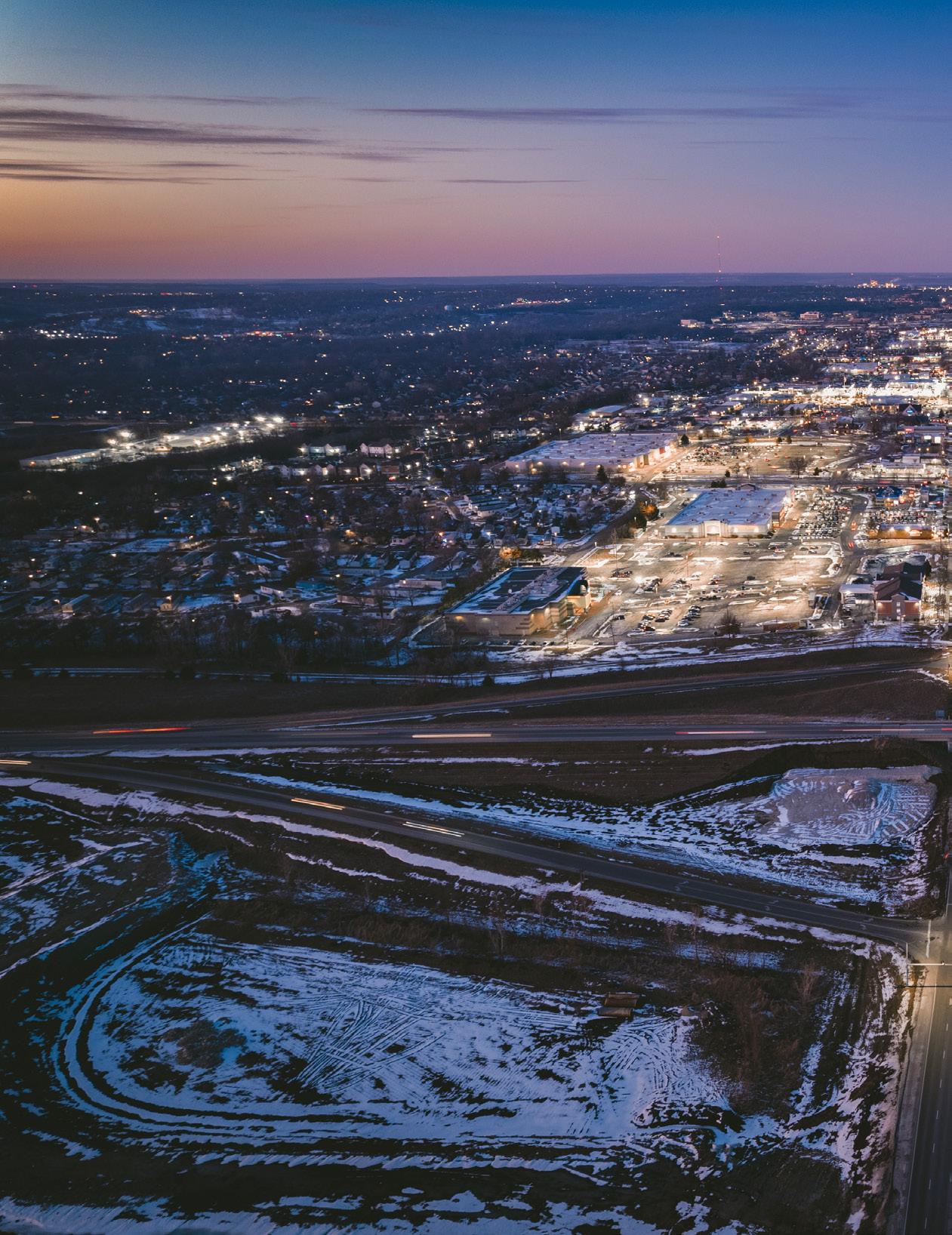
Infrastructure is essential to supporting growth and development in the community while preserving the culture and quality of life.
by
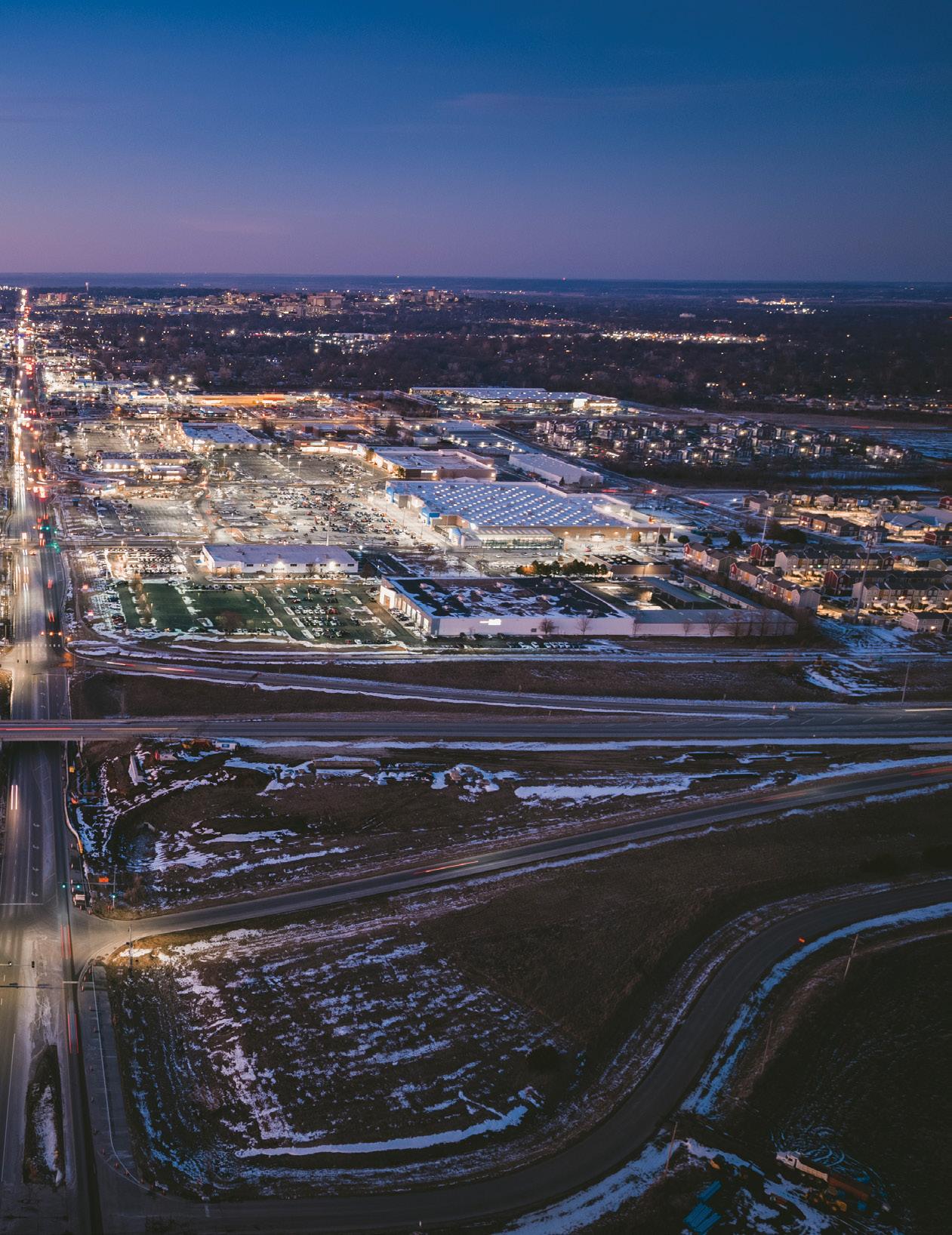
TRANSPORTATION • ROADS
DRINKING WATER • SEWERS
STORM WATER • POWER
COMMUNICATIONS • OTHER UTILITIES
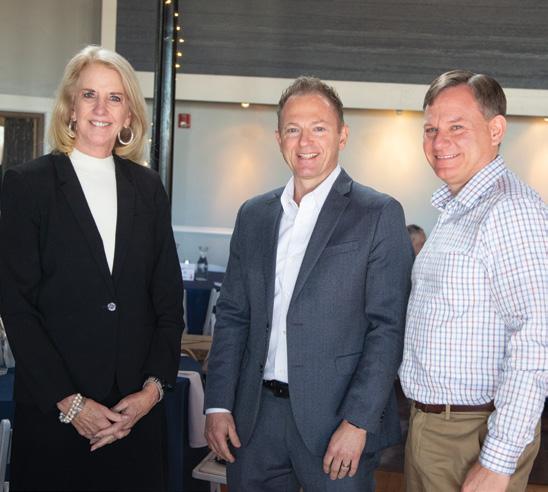
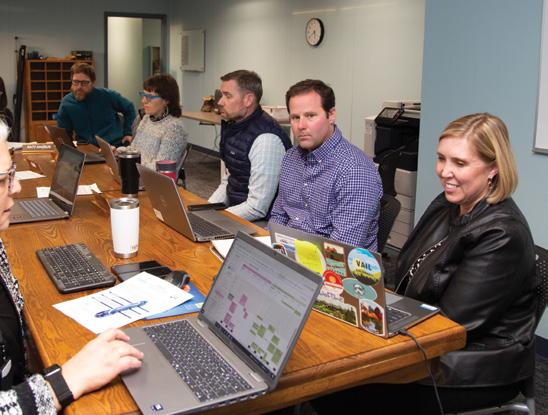
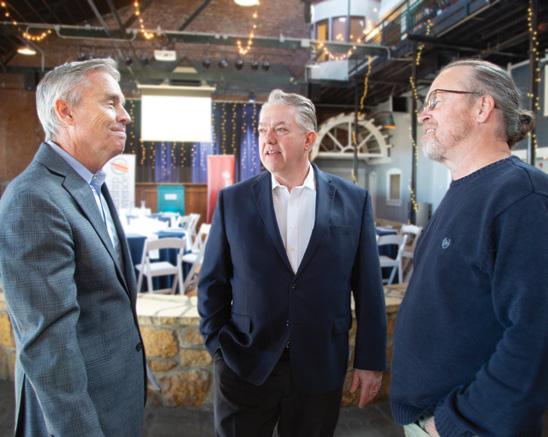
Investing in infrastructure is an important aspect of driving growth and opportunity in any community, and Lawrence is no different. There are many aspects that are not so visible or tangible, such as child care and job creation. But much of that investment is in the traditional definition of the word, with basic elements such as roads, water, power lines and sewer systems.
In Lawrence, much of the infrastructure development is guided by Plan 2040, which “recommends goals to promote a high quality of life in both urban and rural settings, and directs growth in a manner that preserves and enhances the heritage and spirit of our community to create unique places to live, work, learn and play,” according to the city’s Planning and Development website.
What this means, says Craig Owens, Lawrence city manager, is that there is “a basis of foundation in this work and infrastructure, not just for supporting business growth and development, but residential business or residential growth and development, as well, that is based in long-range strategic planning and long-range comprehensive planning.”
Plan 2040 was created in 2013 to build on the city’s previous comprehensive plan, Horizon 2020, created in 1991. Owens says, “It really set out a course that said, ‘These are the things we expect. This is the direction we’d like to see our community grow. These are the ways we’d like to see change if it occurred.’ ”
That drove city government to really look at the capital improvements plan, which is an expenditure plan looking forward five years at how they will improve existing capital infrastructure, as well as rehabilitate and grow it. Additionally, he says, government also uses that to determine where the next addition will be, and most of them are systems.
“These are in key areas,” he explains. “Transportation is the one everybody sees.”
One example is the city’s Iowa Street Reconstruction Project, announced in mid-January, which will tackle Iowa Street from 23rd Street to Irving Hill Road, with the project intended to “enhance functionality and connectivity,” and include a rebuilt roadway, multimodal enhancements with a new sidewalk and a shared-use path on either side of the street, along with utility and drainage upgrades and modern lighting.
What you don’t often see in system investments, however, are the pipes underground.
“Most people, they turn on their faucet, and as long as that water is coming out, then they pay their bill, and they’ve got water,” Owens explains. “It takes a lot of system improvements to make all that happen.”
Those systems include treatment capacity and the sources of water, which in Lawrence are the Kaw River and the Clinton Reservoir. To get that water out and have a high enough capacity for a growing com -

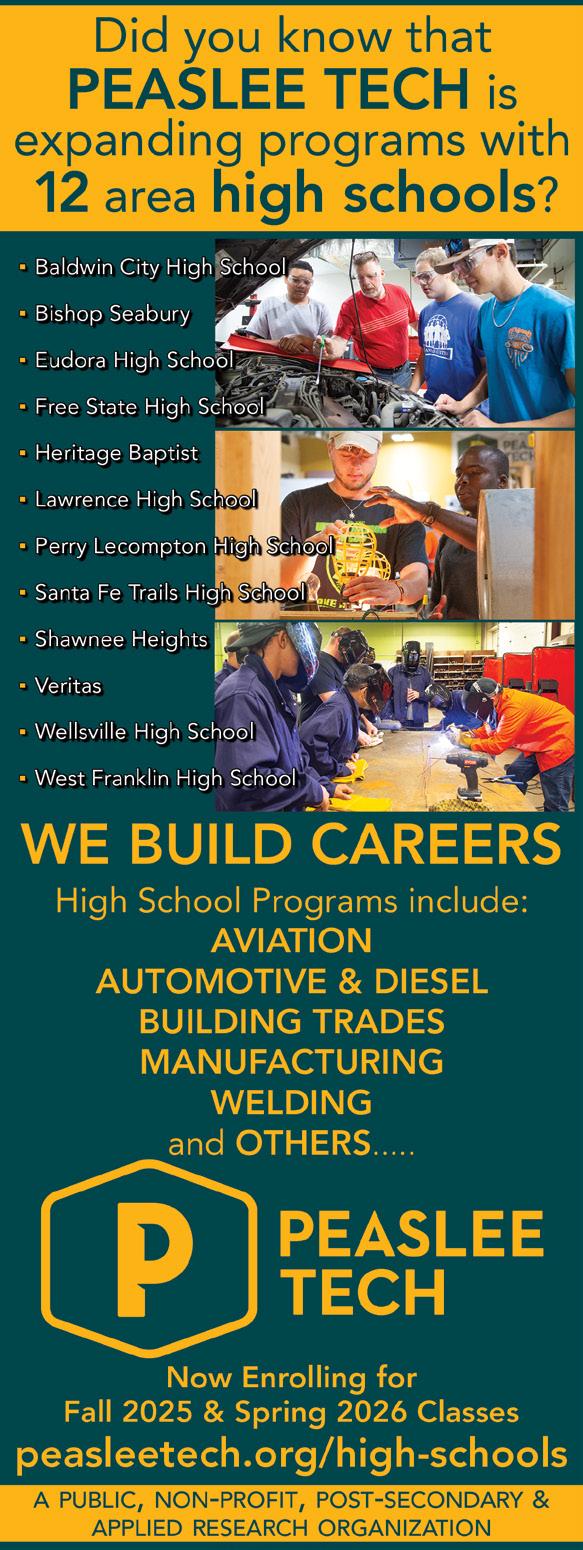
munity requires its own infrastructure, which the city has to continue to invest in and keep maintained. From the pumps that pull that water out to the system that transfers it up into towers to making sure there are enough towers with enough capacity that water pressure stays up. And then, of course, there’s the system that distributes all the water so that every faucet works every time.
That’s all before even considering the other end of the water system, wastewater treatment, which has also been upgraded by the city in recent years. As the city grows, both water and wastewater need to be treated in higher and higher quantities to make sure potable water is available to new and current residents.
“Those are system improvements that we’ve been doing that have positioned us so that when we get new growth—whether it’s residential or industrial or commercial growth that we’re planning for—when they are ready to tap into those systems, we have capacity to provide them those services that they need,” Owens says. “Those are things that if you don’t plan for … they can sneak up on you, and you really will get behind.”
He says at that point, you don’t have a chance of getting the new business in, because it’s so many years to build capacity up to just provide the utilities. “We’ve done that proactively, so now, we have full capacity to deal with the growth that we anticipate for the next several years.”
Part of that proactive planning is noted by the Economic Development Committee (EDC) of Lawrence and Douglas County. Rob Richardson, director of growth, development and Panasonic strategies for the EDC, explains that sewer and water, and at least to some degree roads, all need to be in place in order for property to be sold or to have something built on it, especially when referring to residential properties.
“When we looked at that and went to the city a couple of years ago with some ideas, we suggested getting the water and sewer infrastructure under the new [South Lawrence Trafficway, SLT] before, as it’s being built, which they’re doing,” Richardson explains. “You know, extending small trunks–don’t build out the whole system, which is radically expensive, but build small chunks where it’s strategic to help people accomplish development.”
Richardson points out that with the first piece of road on the other side of the SLT being built, they’re not building all four lanes of it because it isn’t needed right away.
“They’re just building two lanes of the next segment of it so that you don’t have a lot of money out there for infrastructure you may not need for 10 years,” he says. For industrial properties, it’s a little different.
“You have to have a willing seller,” Richardson explains. “You must have sewer and water. You also have to have significant power infrastructure.”
He says all of that exists at Lawrence VenturePark (LVP), along with maybe a lot or two in East Hills. The fact that there are environmental restrictions in place at LVP causing marketability issues have created holdups, requiring the EDC to work with the state to lift those strings from properties that weren’t environmentally impacted by the site’s previous use as a former Farmland Industries nitrogen plant facility.
“I’m working on a plan related to new industrial land development,” Richardson offers, going on to explain that the plan explores where the best bang for your buck related to installing infrastructure might be. Once that’s done, he’ll go on to make recommendations about incentives and their returns, which could be considered another kind of infrastructure, albeit financial rather than physical.
“I think it generally works for communities to give some level of incentive,” he continues. “Communities have very specific incentive policies, depending on what kind of development you’re talking about,” Richardson adds. “It depends on if you’re doing residential, or if you’re doing commercial, or if you’re doing industrial.”
Commercial, he says, is generally pretty easy. If retailers stay long enough to pay off the tax increment financing (TIF) or Sales Tax and Revenue (STAR) bond, those generally work well. But it’s not 100 percent.
“Your big user could go out,” Richardson explains, saying that had the Legends Outlets in Wyandotte County lost Nebraska Furniture Mart in Year 5, it would have been hard for the TIF to work. “Those kinds of things can happen, but if you get good users, and they stay, those things work out.”
Another thing that can hurt development incentives is how long it takes to build something out, an issue that’s especially harder on the single-family residential side. If you’re in an area that needs incentives, building out quickly is very important.
“But it’s also if you need incentives, you’ve got other issues that may not let you build out very quickly,” Richardson says. “That’s a little bit of a harder analysis to do.”
Analysis is a very important part of any aspect of infrastructure. Melissa Sieben, director of municipal services and operations for the City of Lawrence, has a very concrete example of how analyzing an issue and using maintenance in a strategic way can make a project easier and more efficient. By looking at a project such as street renovation as a system in what she calls the “corridor concept,” one project can encompass water, wastewater, stormwater, private utilities and more.
“The road is part of a system,” Sieben says. “Because of how we’ve designed infrastructure in this country and others across the world, typically your road has with it water, wastewater lines, other utilities and then, of course, you’ve got sidewalk networks often adjacent to it.”
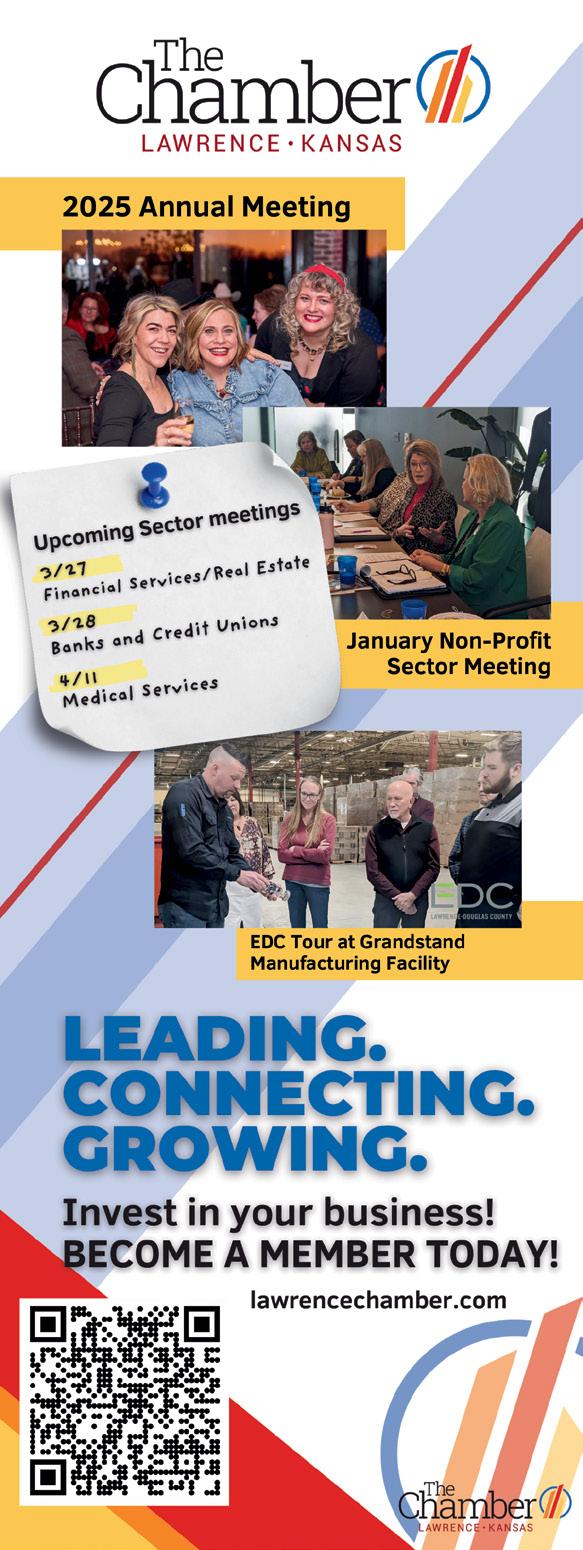
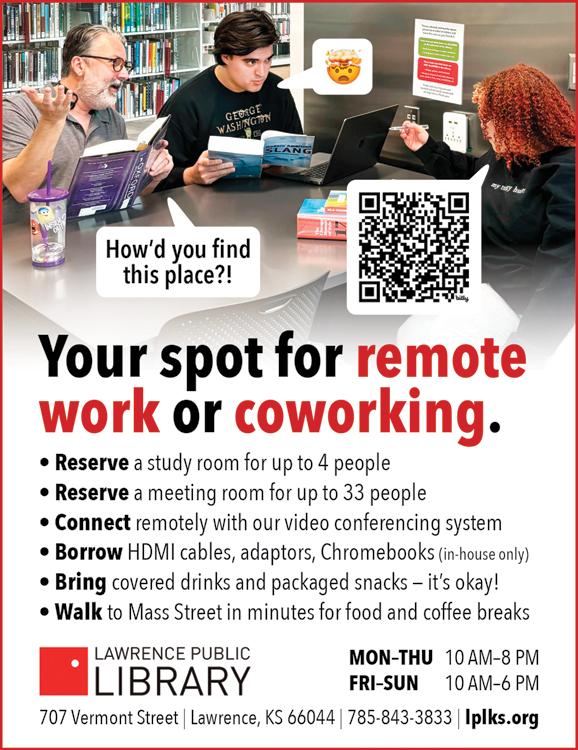
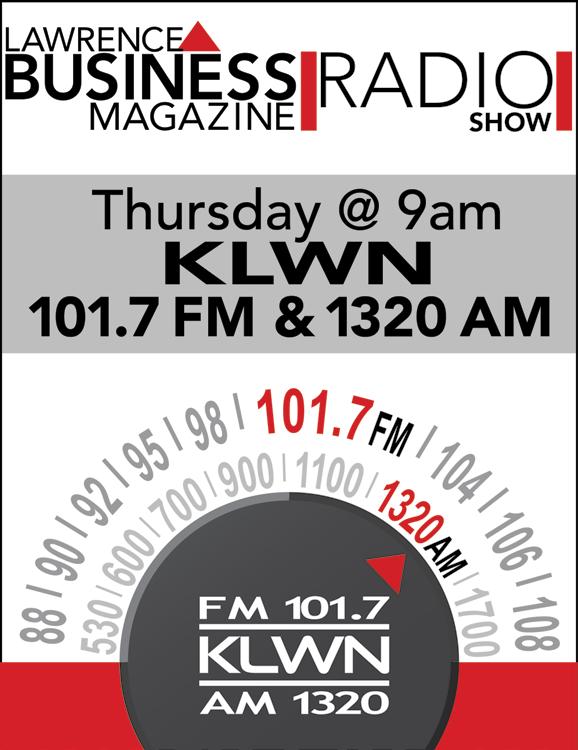
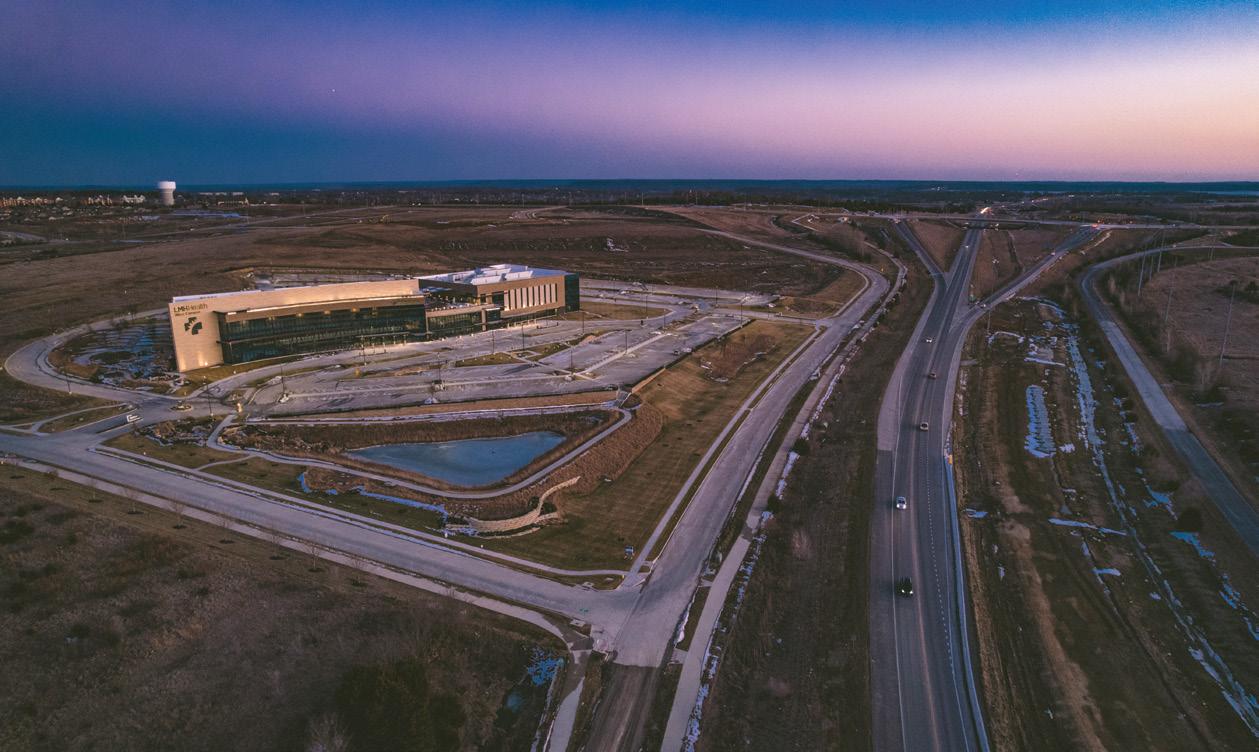
In addition, the road is conducting stormwater management in some shape or form, or interacting with the stormwater system. So the city has taken on these bigger street projects, like the new Iowa Street project or the recently completed Sixth Street project, with the corridor concept. Another example is the Jayhawk Watershed, which spans the area in and around The University of Kansas campus and drains from there into the Kansas River, wherein “localized flooding occurs [...] frequently during intense rainfall events,” as explained by the City of Lawrence on its website.
“That is causing us to have to dig very deep in some spots on Ninth Street or to replace a very large stormwater system that’s been underneath the ground since the early 1900s and to do it correctly and to help prevent future flooding,” Sieben explains. “But at the same time, we’re coming back, and we’re saying, ‘How do we do bike lanes?’ ‘What do we need to do to do sidewalk improvements?’ ‘Let’s replace water and/ or wastewater connections to businesses so that we don’t have to come back in again.’ ”
As she puts it, those projects can get really expensive, but they layer in funding from a variety of revenue streams from their respective utilities to make it happen. So while what starts out as a stormwater project ends up being a massive project, they’re in and out, and they don’t have to revisit it for 20-some years or so.
Going forward, Sieben points to where the community has determined its growth to be, which is west of Kansas Highway 10.
“The City Commission adopted budgets that funded water and wastewater expansions in coordination with KDOT to put in water and wastewater infrastructure underneath K-10 so that it’s there on the other side for private partners to tap into,” she says of future planning. “We’ve looked at our water pressure to make sure that we can handle a certain amount of growth in a certain amount of time: ‘How fast could it be absorbed? What do we need to do?’ ”
Another part of that westward expansion is roadway extensions to Sixth Street and Bob Billings Parkway, Sieben continues.
“We’ve been looking at how that will be phase-developed based on having it there [and] available for a developer to start something with, and then making sure that we have adequate property as we go forward if the road is going to continue to be one of those major thoroughfares in the community,” she says.
There’s also North Lawrence, Sieben adds, because it contains an infrastructure aspect that folks might not have thought of—namely the Lawrence Regional Airport.
“I don’t think people think about that, but that is transportation infrastructure, and luckily there has and continues to be a lot of federal funding out there that we tap into,” she explains. “But that is an area where the community could be deriving more benefit than it has.”
It’s part of a comprehensive corridor study for Lawrence Municipal Services and Operations, which includes another major aspect of infrastructure—stormwater levees.
“That’s another key piece that protects a lot of North Lawrence and Downtown Lawrence,” Sieben says. “It’s very important how all those play together. If we want to look at land use and how we’re attracting business in spaces where we have some opportunity for development—or redevelopment, for that matter—we’re preparing for that in the future like we did with expansion on the west side of K-10 and making sure that our stormwater, water and our wastewater are ready to go, in addition to the transportation network.” p
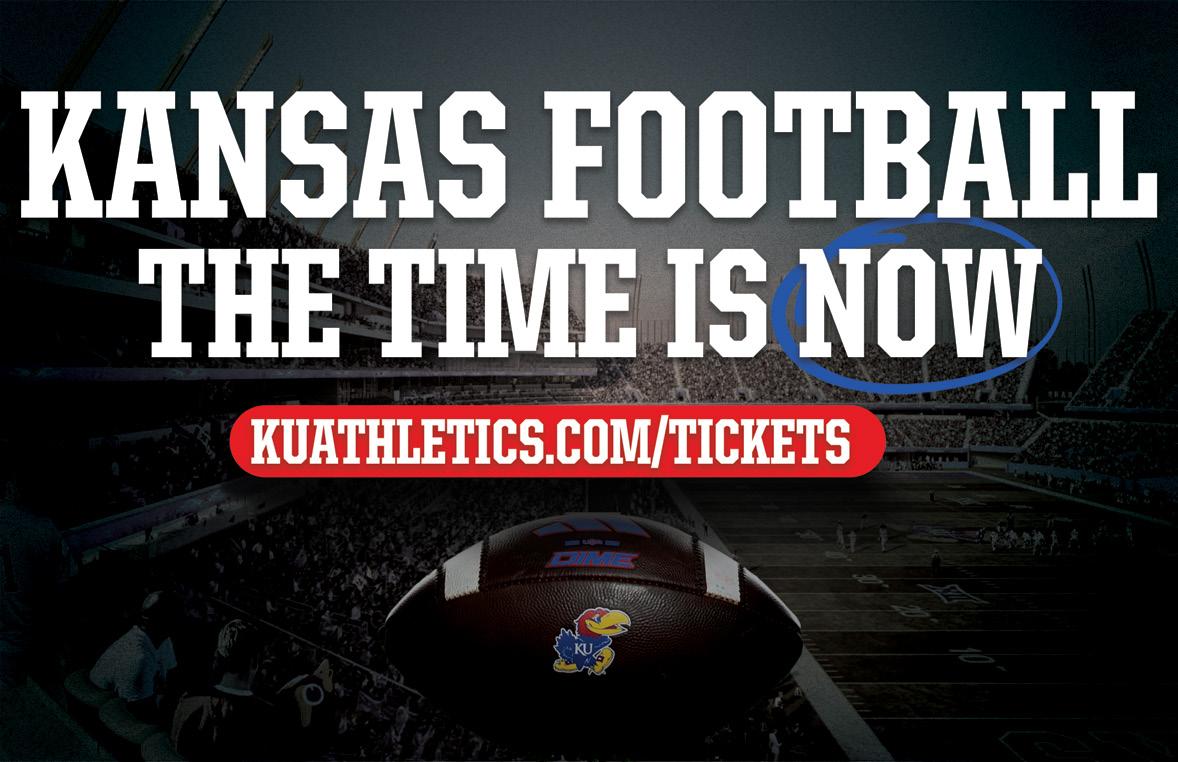

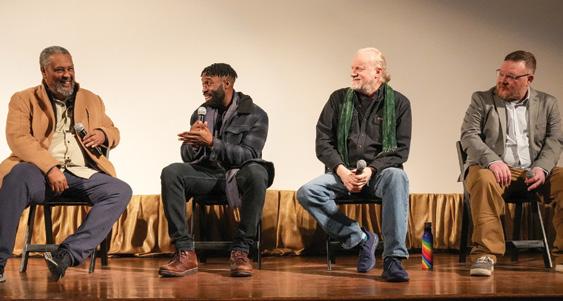
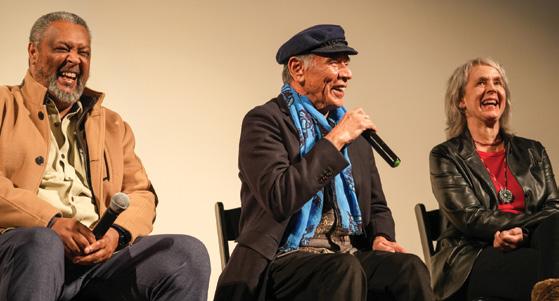
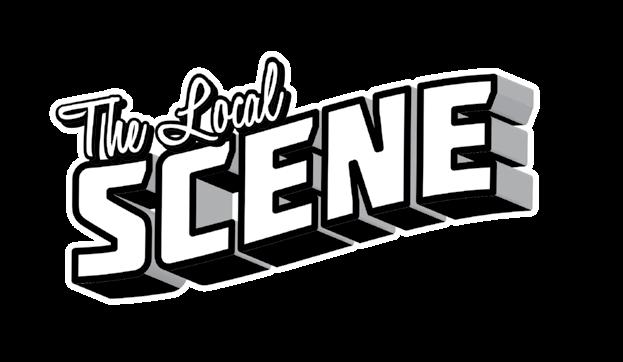

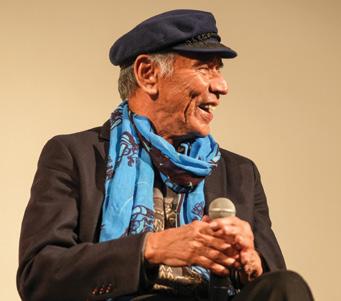
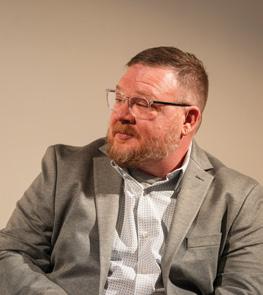
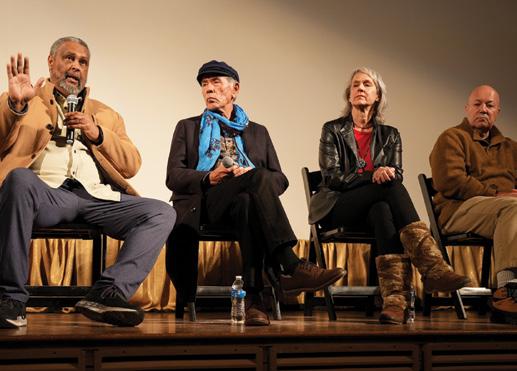
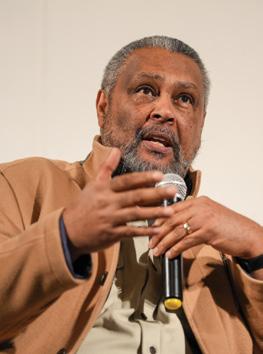

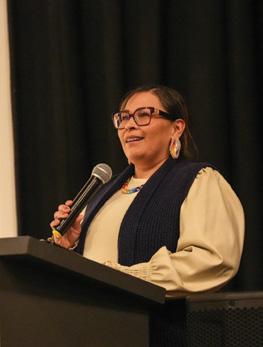
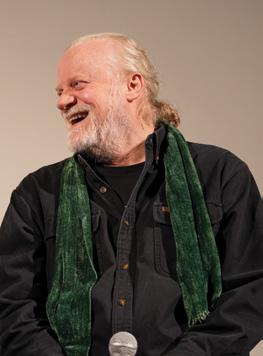

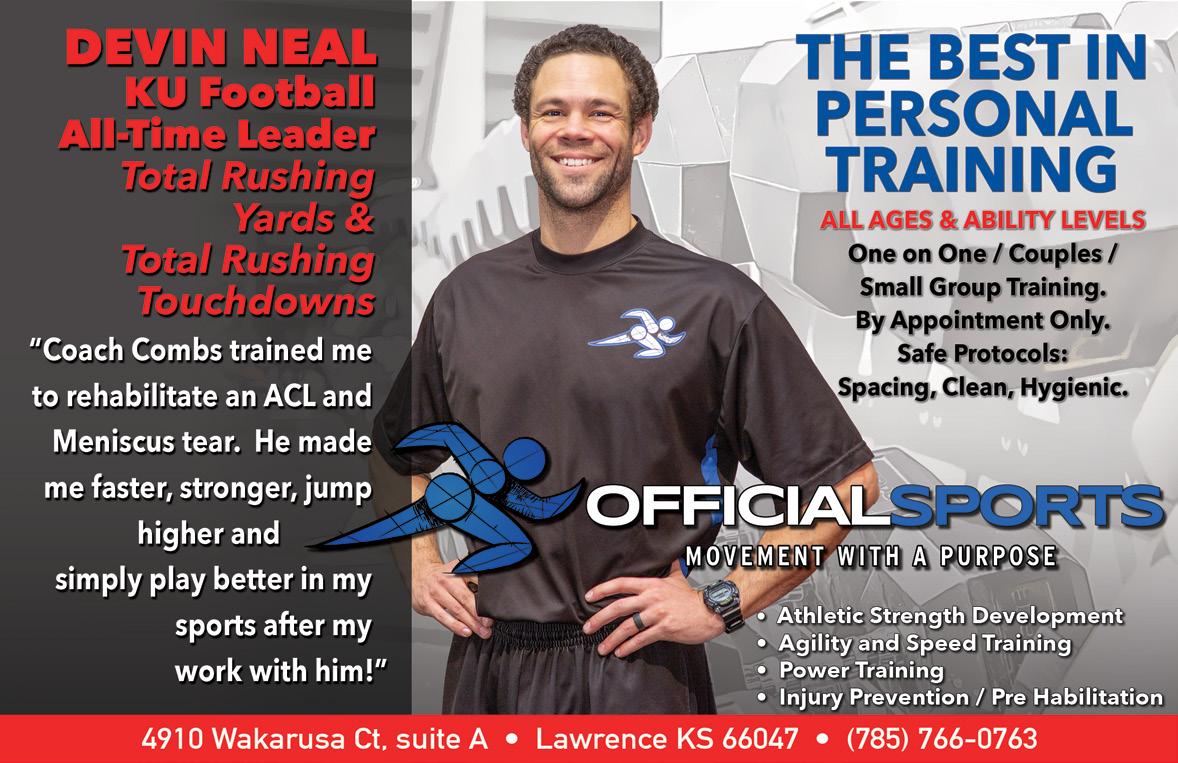
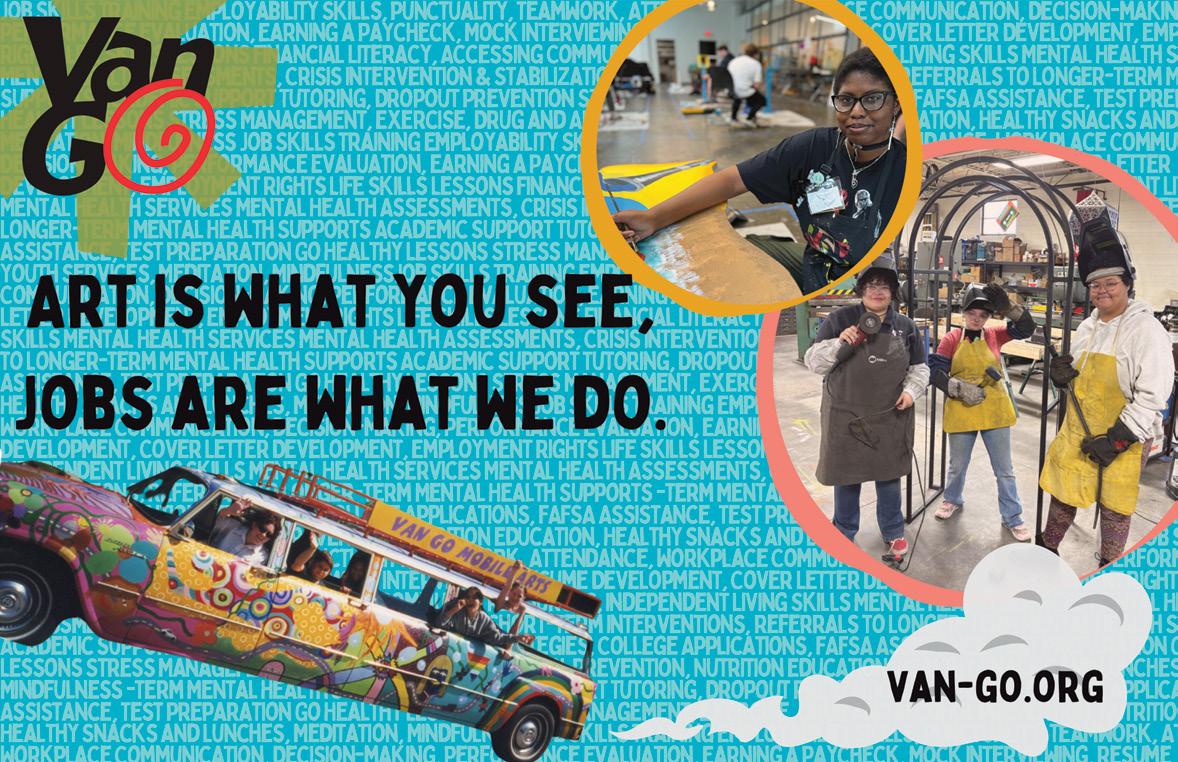
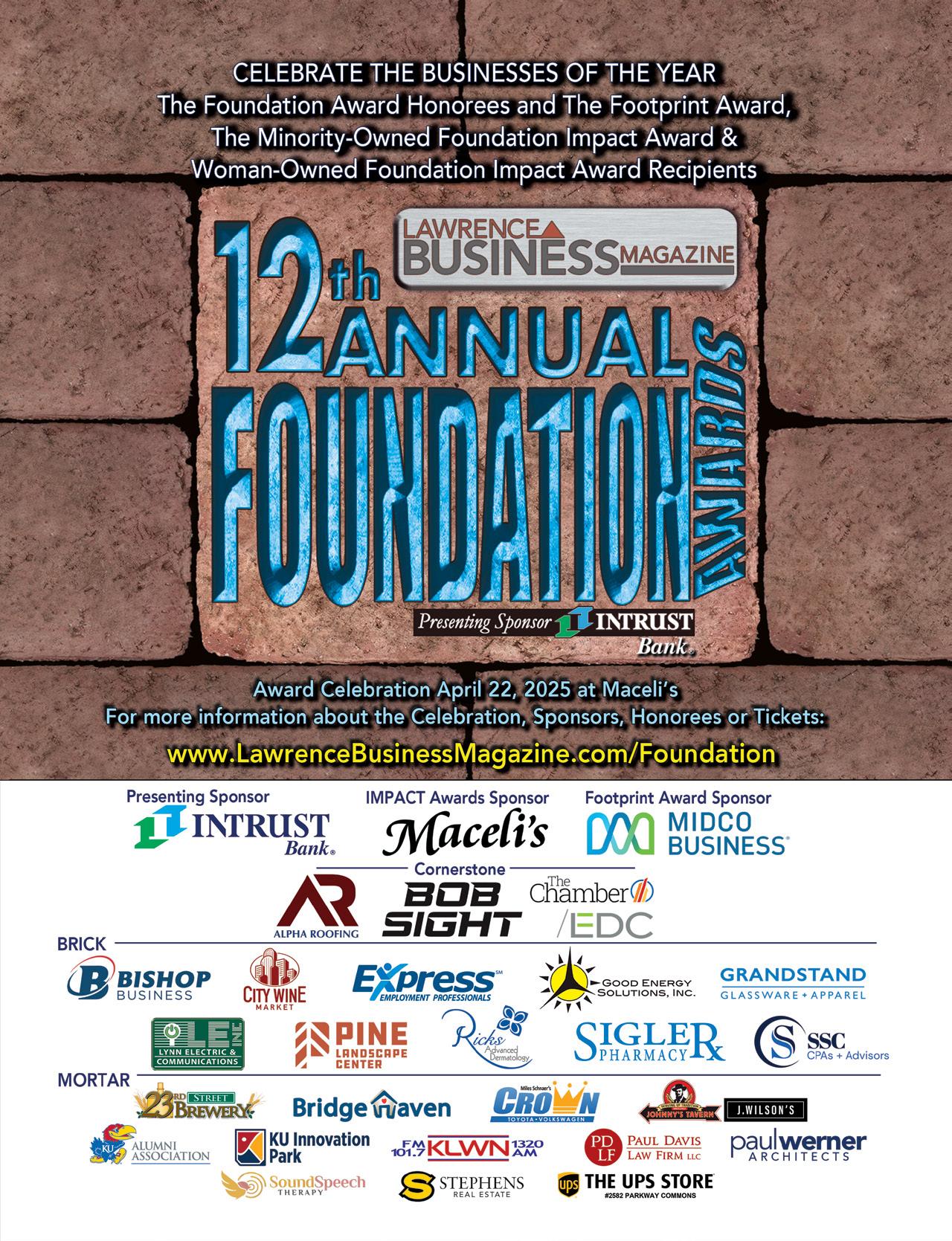
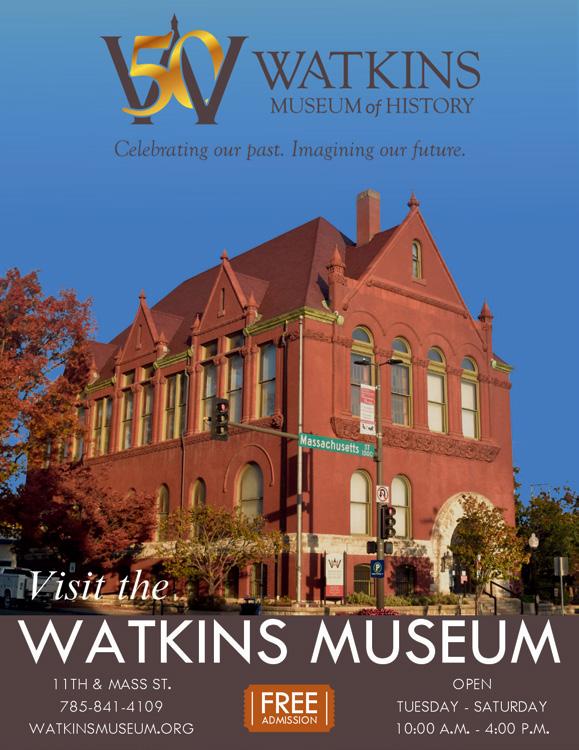




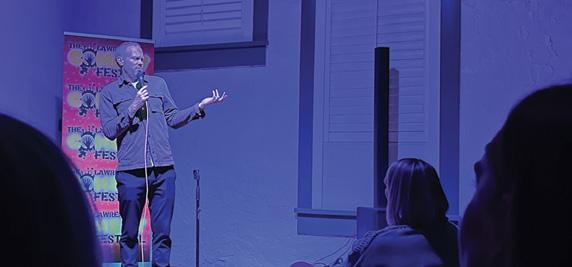
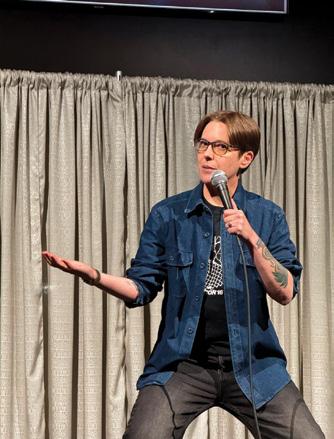


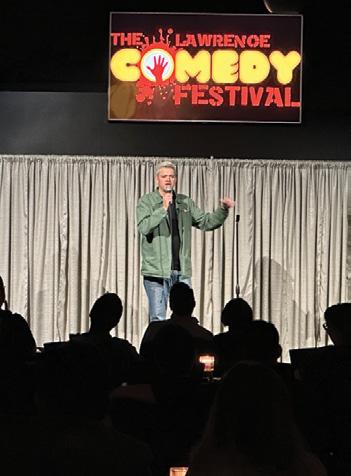
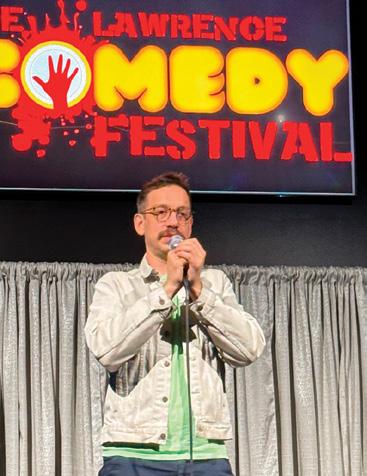
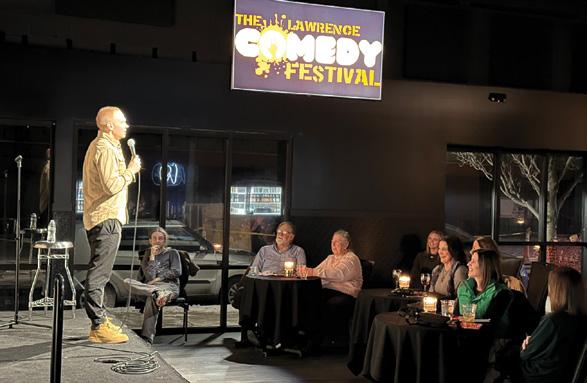

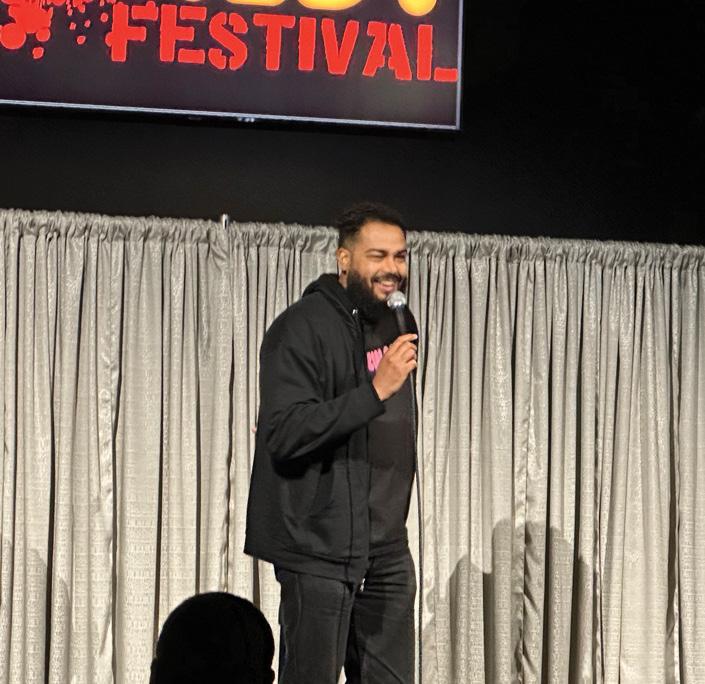
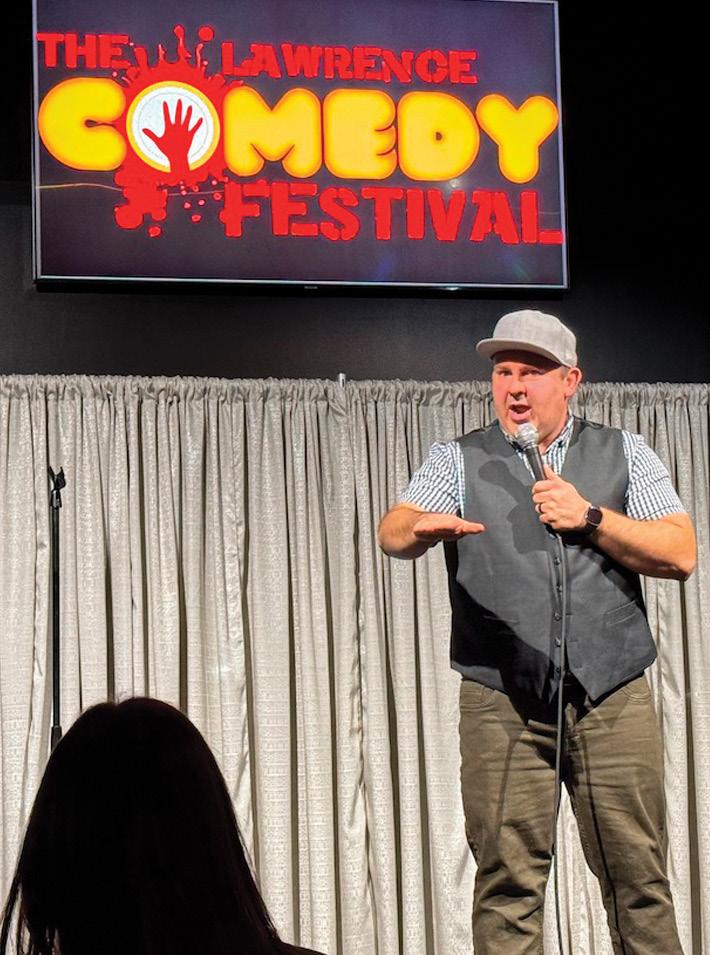
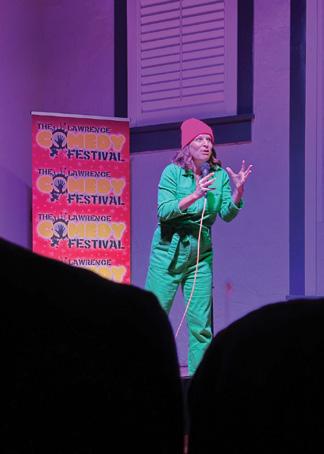

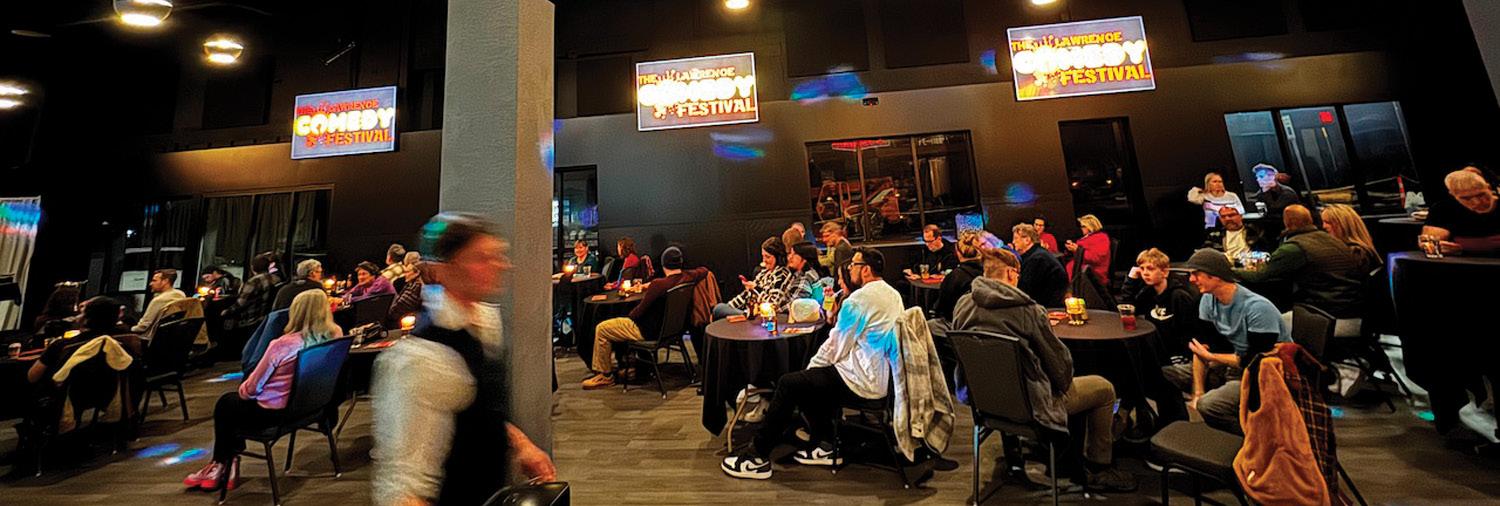
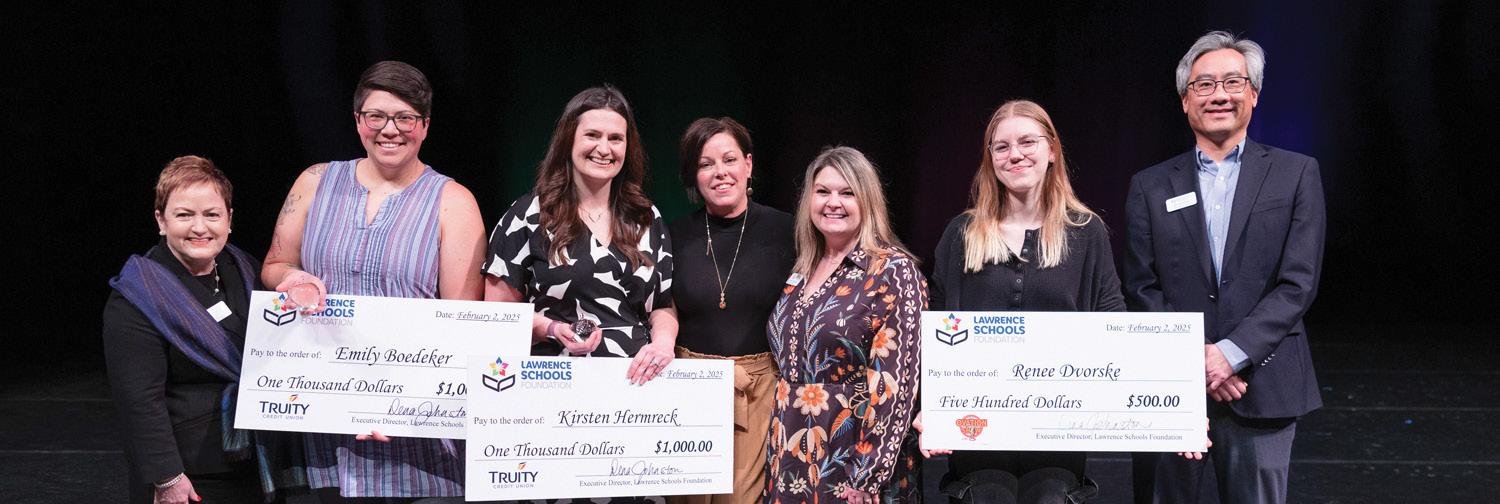
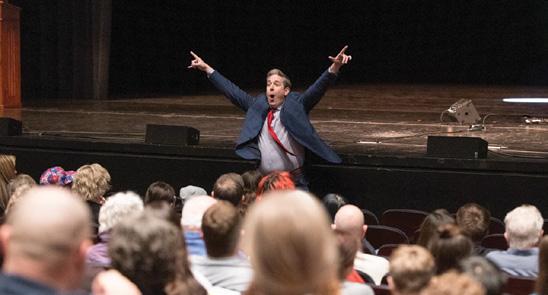
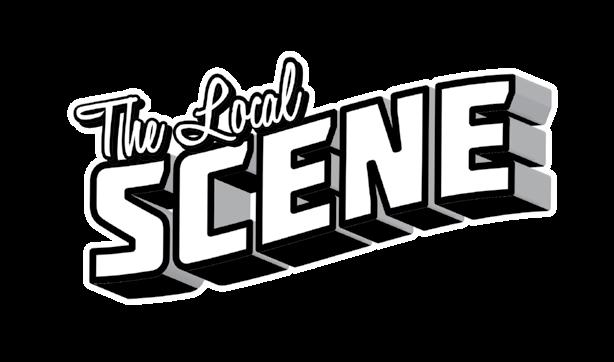

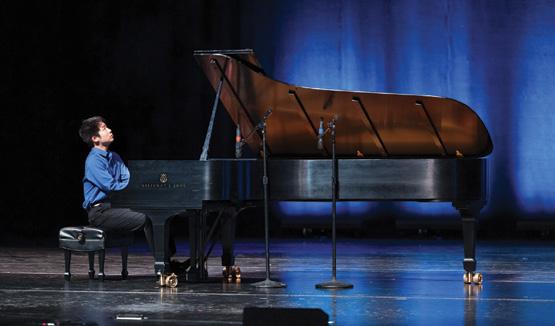

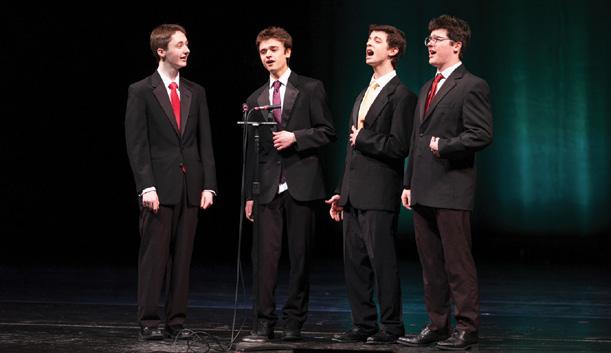
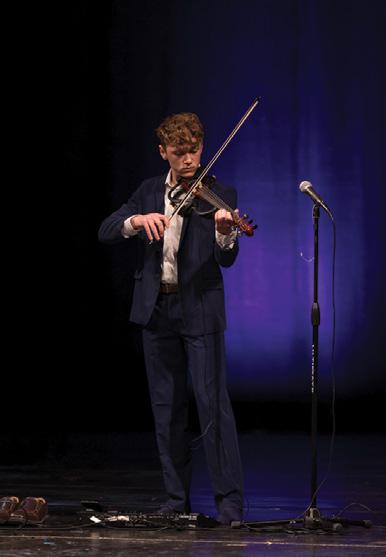




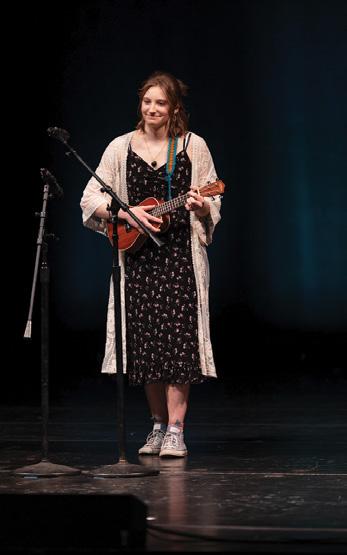
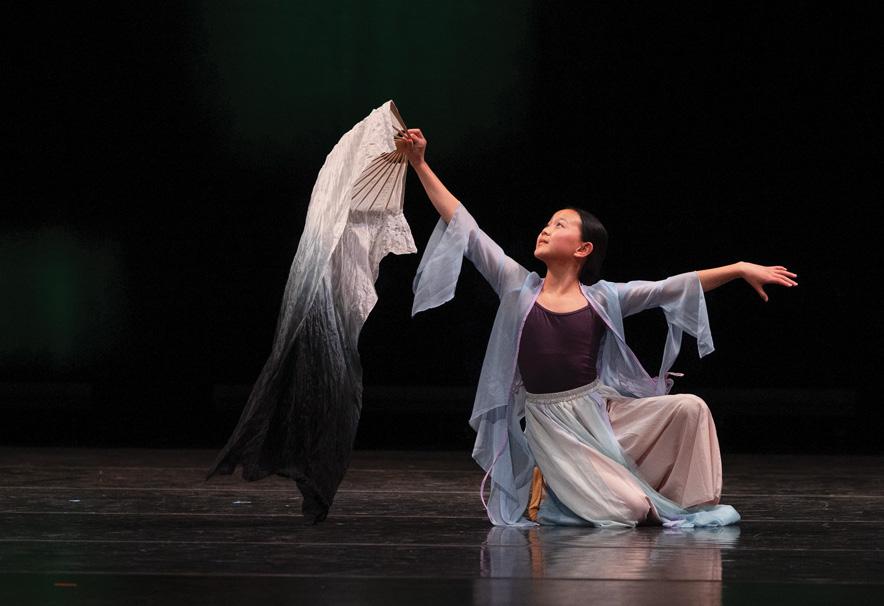
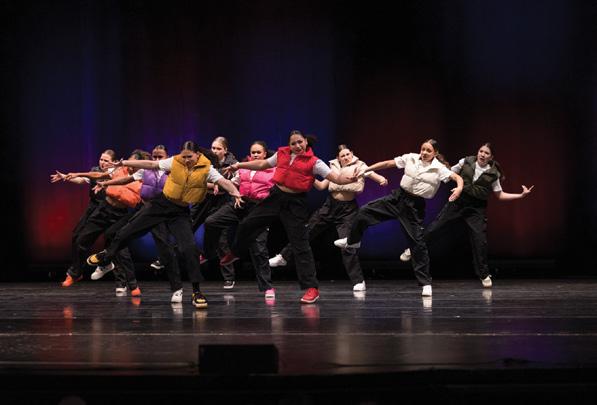
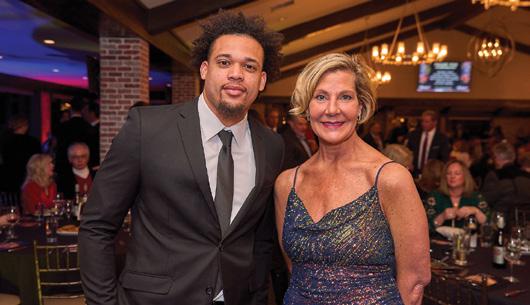
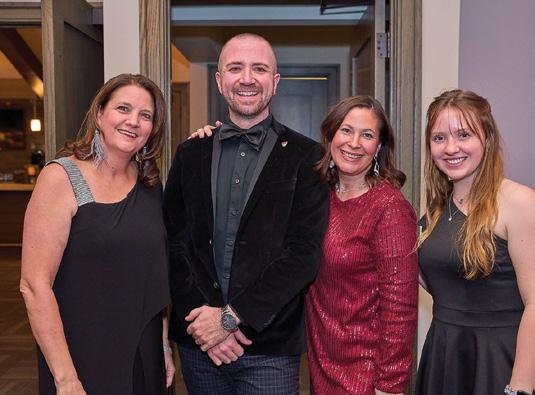
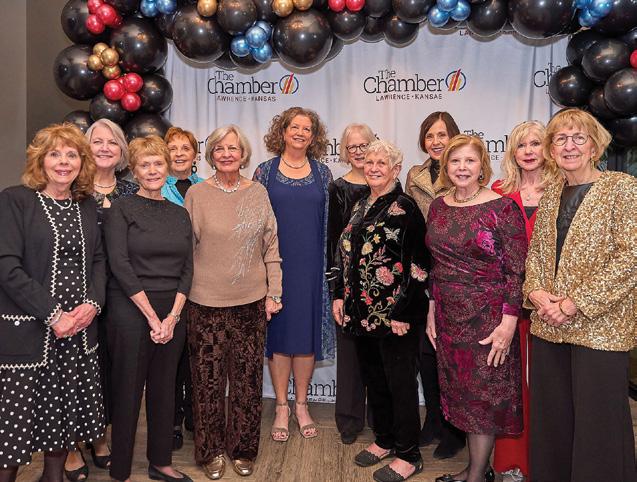
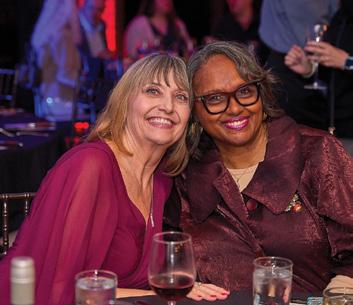
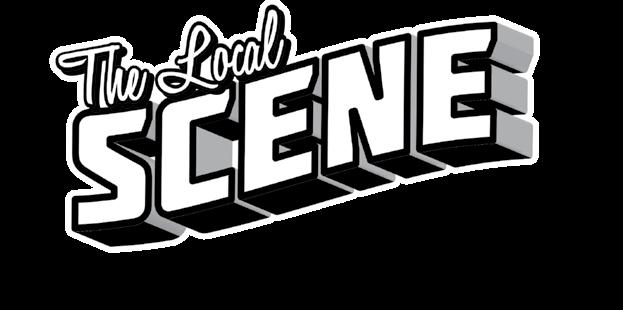
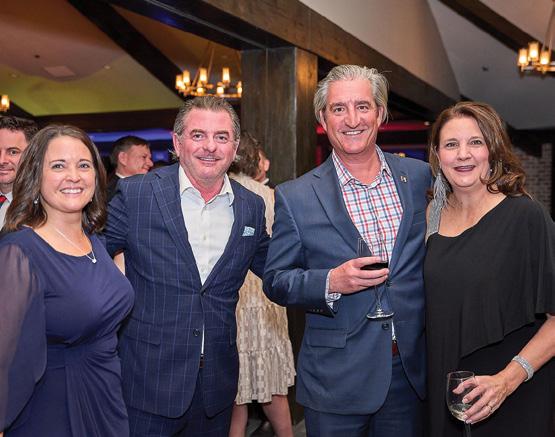
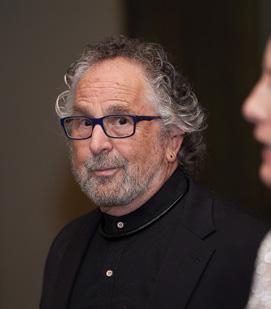
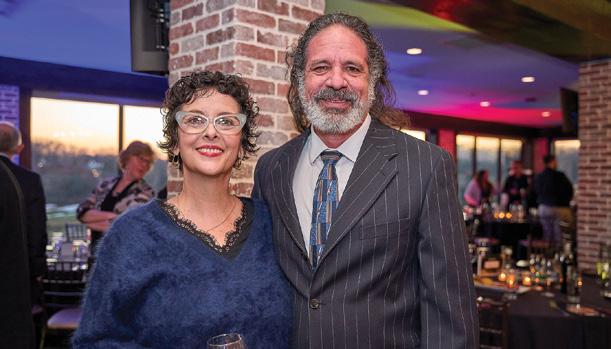
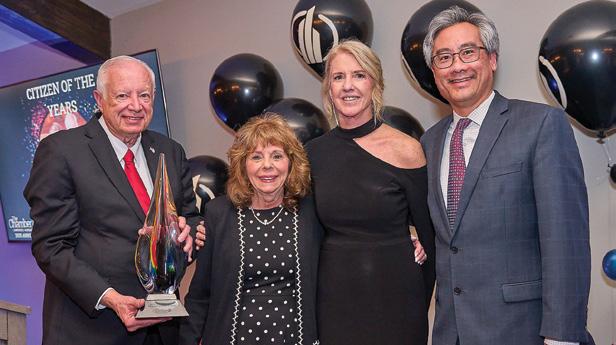
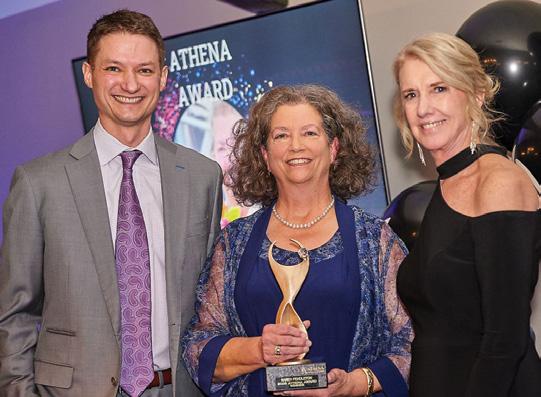
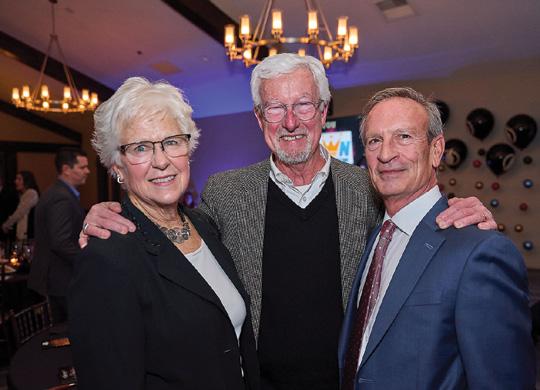

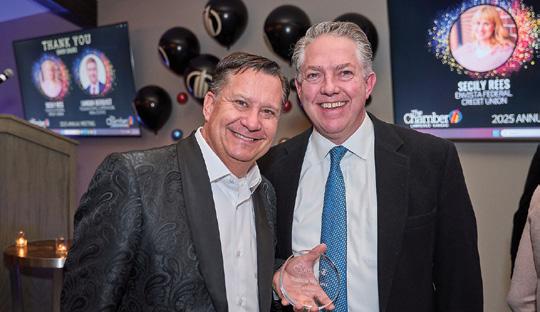
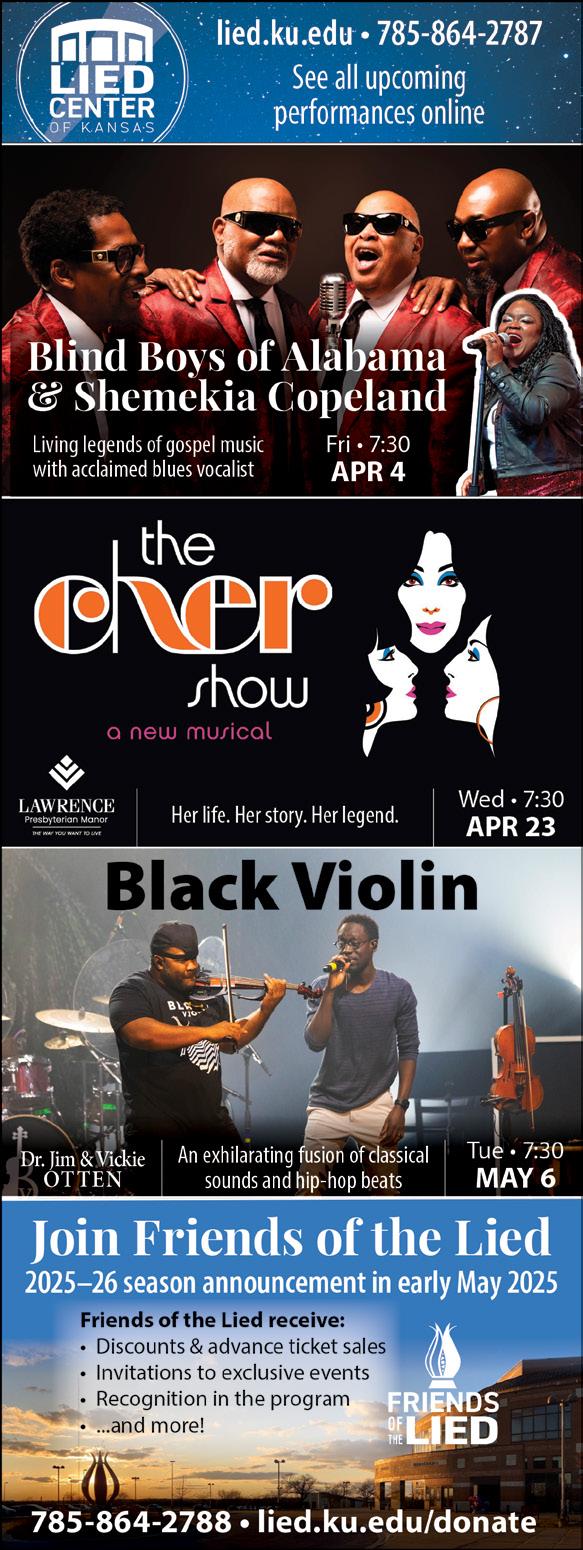
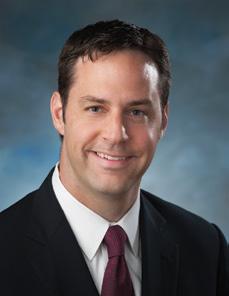
Clayton Wealth Partners is pleased to announce that James Walden, CFA, Partner and Chief Investment Officer, has joined the Board of Directors for The Lawrence Chamber.
Walden, a resident of Lawrence, has been an active member of The Chamber since 2019. His appointment to the board reflects his commitment to supporting local businesses and contributing to the community’s economic growth.
“It’s an honor to join the board of The Lawrence Chamber,” said Walden. “Lawrence has a strong and vibrant business community, and I look forward to working alongside fellow board members to support its continued success. The Chamber plays a vital role in fostering economic development, and I’m eager to contribute to its mission.”

Good Energy Solutions, Inc, a leader in the solar industry, proudly announces it has joined the Amicus Solar Cooperative. Amicus Solar is a cooperative of over 80 value-led, independently owned companies that design, build, and maintain solar energy systems across all 50 states, the District of Columbia, and Puerto Rico. The group represents over 4,000 solar employees who work tirelessly installing solar panels and battery systems on homes, schools, farms, municipal buildings, businesses, and nonprofits in their communities.
As a 100% member-owned cooperative, each company within the cooperative is an equal coowner, ensuring decisions are made democratically and equitably. Also, the cooperative is able to leverage its collective purchasing power to reduce the costs of solar panels and other equipment.
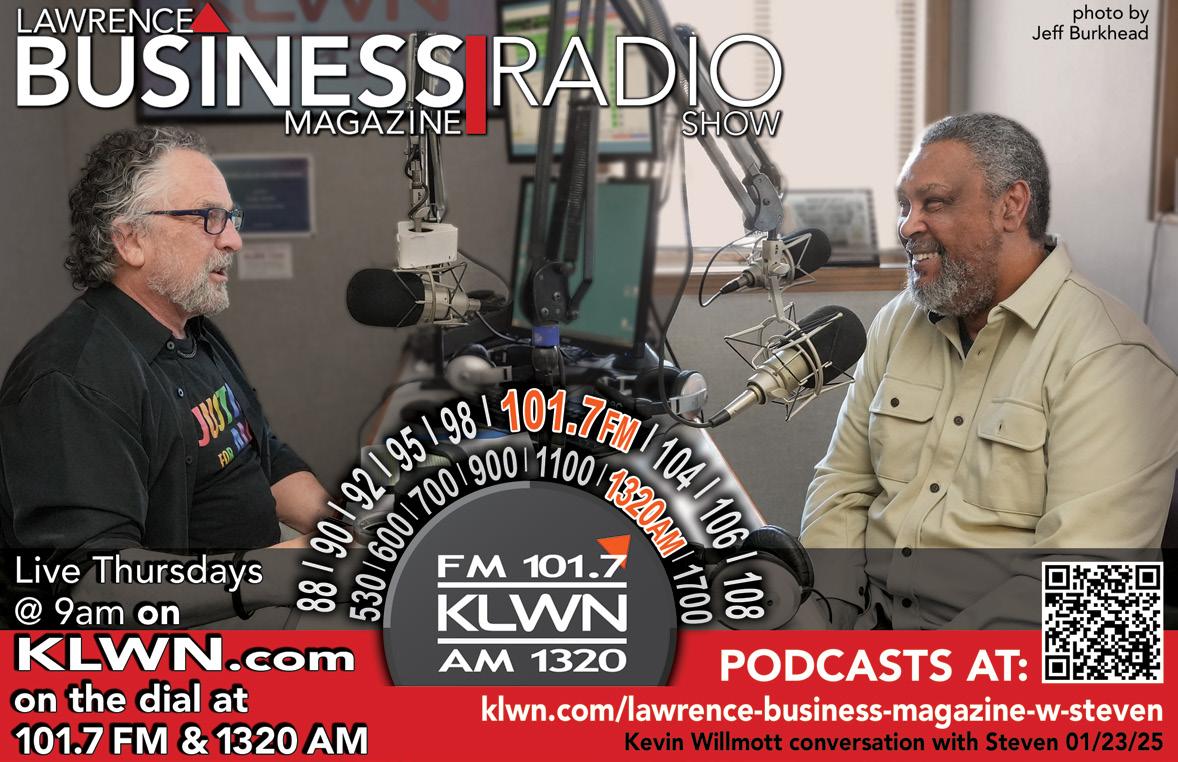
Good eXplore Lawrence, the organization dedicated to increasing economic development by attracting visitors, conventions, and events to our city, is proud to announce the two national marketing awards from North American Travel Journalists Association (NATJA).
NATJA announced on February 21st that eXplore Lawrence was awarded an Honorable Mention for their 2024 visitors guide and a Bronze Award for the Lawrence Summer of Fun Campaign.

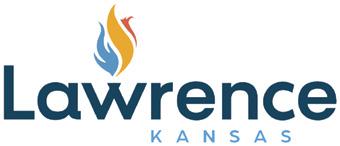
The City of Lawrence's Municipal Services and Operations Department (MSO) is proud to announce the receipt of a prestigious engineering award from the Kansas Chapter of the American Council of Engineering Companies (ACEC) recognizing our innovative and effective approach to improving stormwater management.
This achievement celebrates the City’s Stormwater System Identification, Assessment & Model Creation Program, a cornerstone initiative designed to enhance the condition, service level, and sustainability of the city’s stormwater system for decades to come.
The Watkins Museum of History is proud to announce an exhibition sponsorship for 2025 and three special exhibitions commemorating the centennial anniversary of Stevens & Brand, the 75th anniversary of Bert Nash Community Mental Health Center, and the museum’s own 50th anniversary. For more infomation on exhibition dates and times visit: watkinsmuseum.org



How well do you know the FOUNDATION AWARDS? Where were the awards in 2024 and when and where will they be in 2025? Be the first to correctly guess where the Foundation Awards were presented last year & where they will be held this year. Winner receives a $50 gift card to 23rd Street Brewery. facebook.com/lawrencebusinessmagazine



Make an Impact. Advertise in the Lawrence Business Magazine!


